

Psychological Research Methods: Types and Tips
Categories Research Methods
Psychological research methods are the techniques used by scientists and researchers to study human behavior and mental processes. These methods are used to gather empirical evidence.
The goal of psychological research methods is to obtain objective and verifiable data collected through scientific experimentation and observation.
The research methods that are used in psychology are crucial for understanding how and why people behave the way they do, as well as for developing and testing theories about human behavior.
Table of Contents
Reasons to Learn More About Psychological Research Methods
One of the key goals of psychological research is to make sure that the data collected is reliable and valid.
- Reliability means that the data is consistent and can be replicated
- Validity refers to the accuracy of the data collected
Researchers must take great care to ensure that their research methods are reliable and valid, as this is essential for drawing accurate conclusions and making valid claims about human behavior.
High school and college students who are interested in psychology can benefit greatly from learning about research methods. Understanding how psychologists study human behavior and mental processes can help students develop critical thinking skills and a deeper appreciation for the complexity of human behavior.
Having an understanding of these research methods can prepare students for future coursework in psychology, as well as for potential careers in the field.
Quantitative vs. Qualitative Psychological Research Methods
Psychological research methods can be broadly divided into two main types: quantitative and qualitative. These two methods differ in their approach to data collection and analysis.
Quantitative Research Methods
Quantitative research methods involve collecting numerical data through controlled experiments, surveys, and other objective measures.
The goal of quantitative research is to identify patterns and relationships in the data that can be analyzed statistically.
Researchers use statistical methods to test hypotheses, identify significant differences between groups, and make predictions about future behavior.
Qualitative Research Methods
Qualitative research methods, on the other hand, involve collecting non-numerical data through open-ended interviews, observations, and other subjective measures.
Qualitative research aims to understand the subjective experiences and perspectives of individuals and groups.
Researchers use methods such as content analysis and thematic analysis to identify themes and patterns in the data and to develop rich descriptions of the phenomenon under study.
How Quantitative and Qualitative Methods Are Used
While quantitative and qualitative research methods differ in their approach to data collection and analysis, they are often used together to gain a more complete understanding of complex phenomena.
For example, a researcher studying the impact of social media on mental health might use a quantitative survey to gather numerical data on social media use and a qualitative interview to gain insight into participants’ subjective experiences with social media.
Types of Psychological Research Methods
There are several types of research methods used in psychology, including experiments, surveys, case studies, and observational studies. Each method has its strengths and weaknesses, and researchers must choose the most appropriate method based on their research question and the data they hope to collect.
Case Studies
A case study is a research method used in psychology to investigate an individual, group, or event in great detail. In a case study, the researcher gathers information from a variety of sources, including:
- Observation
- Document analysis
These methods allow researchers to gain an in-depth understanding of the case being studied.
Case studies are particularly useful when the phenomenon under investigation is rare or complex, and when it is difficult to replicate in a laboratory setting.
Surveys are a commonly used research method in psychology that involve gathering data from a large number of people about their thoughts, feelings, behaviors, and attitudes.
Surveys can be conducted in a variety of ways, including:
- In-person interviews
- Online questionnaires
- Paper-and-pencil surveys
Surveys are particularly useful when researchers want to study attitudes or behaviors that are difficult to observe directly or when they want to generalize their findings to a larger population.
Experimental Psychological Research Methods
Experimental studies are a research method commonly used in psychology to investigate cause-and-effect relationships between variables. In an experimental study, the researcher manipulates one or more variables to see how they affect another variable, while controlling for other factors that may influence the outcome.
Experimental studies are considered the gold standard for establishing cause-and-effect relationships, as they allow researchers to control for potential confounding variables and to manipulate variables in a systematic way.
Correlational Psychological Research Methods
Correlational research is a research method used in psychology to investigate the relationship between two or more variables without manipulating them. The goal of correlational research is to determine the extent to which changes in one variable are associated with changes in another variable.
In other words, correlational research aims to establish the direction and strength of the relationship between two or more variables.
Naturalistic Observation
Naturalistic observation is a research method used in psychology to study behavior in natural settings, without any interference or manipulation from the researcher.
The goal of naturalistic observation is to gain insight into how people or animals behave in their natural environment without the influence of laboratory conditions.
Meta-Analysis
A meta-analysis is a research method commonly used in psychology to combine and analyze the results of multiple studies on a particular topic.
The goal of a meta-analysis is to provide a comprehensive and quantitative summary of the existing research on a topic, in order to identify patterns and relationships that may not be apparent in individual studies.
Tips for Using Psychological Research Methods
Here are some tips for high school and college students who are interested in using psychological research methods:
Understand the different types of research methods:
Before conducting any research, it is important to understand the different types of research methods that are available, such as surveys, case studies, experiments, and naturalistic observation.
Each method has its strengths and limitations, and selecting the appropriate method depends on the research question and variables being investigated.
Develop a clear research question:
A good research question is essential for guiding the research process. It should be specific, clear, and relevant to the field of psychology. It is also important to consider ethical considerations when developing a research question.
Use proper sampling techniques:
Sampling is the process of selecting participants for a study. It is important to use proper sampling techniques to ensure that the sample is representative of the population being studied.
Random sampling is considered the gold standard for sampling, but other techniques, such as convenience sampling, may also be used depending on the research question.
Use reliable and valid measures:
It is important to use reliable and valid measures to ensure the data collected is accurate and meaningful. This may involve using established measures or developing new measures and testing their reliability and validity.
Consider ethical issues:
It is important to consider ethical considerations when conducting psychological research, such as obtaining informed consent from participants, maintaining confidentiality, and minimizing any potential harm to participants.
In many cases, you will need to submit your study proposal to your school’s institutional review board for approval.
Analyze and interpret the data appropriately :
After collecting the data, it is important to analyze and interpret the data appropriately. This may involve using statistical techniques to identify patterns and relationships between variables, and using appropriate software tools for analysis.
Communicate findings clearly:
Finally, it is important to communicate the findings clearly in a way that is understandable to others. This may involve writing a research report, giving a presentation, or publishing a paper in a scholarly journal.
Clear communication is essential for advancing the field of psychology and informing future research.
Frequently Asked Questions
What are the 5 methods of psychological research.
The five main methods of psychological research are:
- Experimental research : This method involves manipulating one or more independent variables to observe their effect on one or more dependent variables while controlling for other variables. The goal is to establish cause-and-effect relationships between variables.
- Correlational research : This method involves examining the relationship between two or more variables, without manipulating them. The goal is to determine whether there is a relationship between the variables and the strength and direction of that relationship.
- Survey research : This method involves gathering information from a sample of participants using questionnaires or interviews. The goal is to collect data on attitudes, opinions, behaviors, or other variables of interest.
- Case study research : This method involves an in-depth analysis of a single individual, group, or event. The goal is to gain insight into specific behaviors, attitudes, or phenomena.
- Naturalistic observation research : This method involves observing and recording behavior in natural settings without any manipulation or interference from the researcher. The goal is to gain insight into how people or animals behave in their natural environment.
What is the most commonly used psychological research method?
The most common research method used in psychology varies depending on the research question and the variables being investigated. However, correlational research is one of the most frequently used methods in psychology.
This is likely because correlational research is useful in studying a wide range of psychological phenomena, and it can be used to examine the relationships between variables that cannot be manipulated or controlled, such as age, gender, and personality traits.
Experimental research is also a widely used method in psychology, particularly in the areas of cognitive psychology , social psychology , and developmental psychology .
Other methods, such as survey research, case study research, and naturalistic observation, are also commonly used in psychology research, depending on the research question and the variables being studied.
How do you know which research method to use?
Deciding which type of research method to use depends on the research question, the variables being studied, and the practical considerations involved. Here are some general guidelines to help students decide which research method to use:
- Identify the research question : The first step is to clearly define the research question. What are you trying to study? What is the hypothesis you want to test? Answering these questions will help you determine which research method is best suited for your study.
- Choose your variables : Identify the independent and dependent variables involved in your research question. This will help you determine whether an experimental or correlational research method is most appropriate.
- Consider your resources : Think about the time, resources, and ethical considerations involved in conducting the research. For example, if you are working on a tight budget, a survey or correlational research method may be more feasible than an experimental study.
- Review existing literature : Conducting a literature review of previous studies on the topic can help you identify the most appropriate research method. This can also help you identify gaps in the literature that your study can fill.
- Consult with a mentor or advisor : If you are still unsure which research method to use, consult with a mentor or advisor who has experience in conducting research in your area of interest. They can provide guidance and help you make an informed decision.
Scholtz SE, de Klerk W, de Beer LT. The use of research methods in psychological research: A systematised review . Front Res Metr Anal . 2020;5:1. doi:10.3389/frma.2020.00001
Palinkas LA. Qualitative and mixed methods in mental health services and implementation research . J Clin Child Adolesc Psychol . 2014;43(6):851-861. doi:10.1080/15374416.2014.910791
Crowe S, Cresswell K, Robertson A, Huby G, Avery A, Sheikh A. The case study approach . BMC Med Res Methodol . 2011;11(1):100. doi:10.1186/1471-2288-11-100
An official website of the United States government
The .gov means it’s official. Federal government websites often end in .gov or .mil. Before sharing sensitive information, make sure you’re on a federal government site.
The site is secure. The https:// ensures that you are connecting to the official website and that any information you provide is encrypted and transmitted securely.
- Publications
- Account settings
Preview improvements coming to the PMC website in October 2024. Learn More or Try it out now .
- Advanced Search
- Journal List
- Front Res Metr Anal

The Use of Research Methods in Psychological Research: A Systematised Review
Salomé elizabeth scholtz.
1 Community Psychosocial Research (COMPRES), School of Psychosocial Health, North-West University, Potchefstroom, South Africa
Werner de Klerk
Leon t. de beer.
2 WorkWell Research Institute, North-West University, Potchefstroom, South Africa
Research methods play an imperative role in research quality as well as educating young researchers, however, the application thereof is unclear which can be detrimental to the field of psychology. Therefore, this systematised review aimed to determine what research methods are being used, how these methods are being used and for what topics in the field. Our review of 999 articles from five journals over a period of 5 years indicated that psychology research is conducted in 10 topics via predominantly quantitative research methods. Of these 10 topics, social psychology was the most popular. The remainder of the conducted methodology is described. It was also found that articles lacked rigour and transparency in the used methodology which has implications for replicability. In conclusion this article, provides an overview of all reported methodologies used in a sample of psychology journals. It highlights the popularity and application of methods and designs throughout the article sample as well as an unexpected lack of rigour with regard to most aspects of methodology. Possible sample bias should be considered when interpreting the results of this study. It is recommended that future research should utilise the results of this study to determine the possible impact on the field of psychology as a science and to further investigation into the use of research methods. Results should prompt the following future research into: a lack or rigour and its implication on replication, the use of certain methods above others, publication bias and choice of sampling method.
Introduction
Psychology is an ever-growing and popular field (Gough and Lyons, 2016 ; Clay, 2017 ). Due to this growth and the need for science-based research to base health decisions on (Perestelo-Pérez, 2013 ), the use of research methods in the broad field of psychology is an essential point of investigation (Stangor, 2011 ; Aanstoos, 2014 ). Research methods are therefore viewed as important tools used by researchers to collect data (Nieuwenhuis, 2016 ) and include the following: quantitative, qualitative, mixed method and multi method (Maree, 2016 ). Additionally, researchers also employ various types of literature reviews to address research questions (Grant and Booth, 2009 ). According to literature, what research method is used and why a certain research method is used is complex as it depends on various factors that may include paradigm (O'Neil and Koekemoer, 2016 ), research question (Grix, 2002 ), or the skill and exposure of the researcher (Nind et al., 2015 ). How these research methods are employed is also difficult to discern as research methods are often depicted as having fixed boundaries that are continuously crossed in research (Johnson et al., 2001 ; Sandelowski, 2011 ). Examples of this crossing include adding quantitative aspects to qualitative studies (Sandelowski et al., 2009 ), or stating that a study used a mixed-method design without the study having any characteristics of this design (Truscott et al., 2010 ).
The inappropriate use of research methods affects how students and researchers improve and utilise their research skills (Scott Jones and Goldring, 2015 ), how theories are developed (Ngulube, 2013 ), and the credibility of research results (Levitt et al., 2017 ). This, in turn, can be detrimental to the field (Nind et al., 2015 ), journal publication (Ketchen et al., 2008 ; Ezeh et al., 2010 ), and attempts to address public social issues through psychological research (Dweck, 2017 ). This is especially important given the now well-known replication crisis the field is facing (Earp and Trafimow, 2015 ; Hengartner, 2018 ).
Due to this lack of clarity on method use and the potential impact of inept use of research methods, the aim of this study was to explore the use of research methods in the field of psychology through a review of journal publications. Chaichanasakul et al. ( 2011 ) identify reviewing articles as the opportunity to examine the development, growth and progress of a research area and overall quality of a journal. Studies such as Lee et al. ( 1999 ) as well as Bluhm et al. ( 2011 ) review of qualitative methods has attempted to synthesis the use of research methods and indicated the growth of qualitative research in American and European journals. Research has also focused on the use of research methods in specific sub-disciplines of psychology, for example, in the field of Industrial and Organisational psychology Coetzee and Van Zyl ( 2014 ) found that South African publications tend to consist of cross-sectional quantitative research methods with underrepresented longitudinal studies. Qualitative studies were found to make up 21% of the articles published from 1995 to 2015 in a similar study by O'Neil and Koekemoer ( 2016 ). Other methods in health psychology, such as Mixed methods research have also been reportedly growing in popularity (O'Cathain, 2009 ).
A broad overview of the use of research methods in the field of psychology as a whole is however, not available in the literature. Therefore, our research focused on answering what research methods are being used, how these methods are being used and for what topics in practice (i.e., journal publications) in order to provide a general perspective of method used in psychology publication. We synthesised the collected data into the following format: research topic [areas of scientific discourse in a field or the current needs of a population (Bittermann and Fischer, 2018 )], method [data-gathering tools (Nieuwenhuis, 2016 )], sampling [elements chosen from a population to partake in research (Ritchie et al., 2009 )], data collection [techniques and research strategy (Maree, 2016 )], and data analysis [discovering information by examining bodies of data (Ktepi, 2016 )]. A systematised review of recent articles (2013 to 2017) collected from five different journals in the field of psychological research was conducted.
Grant and Booth ( 2009 ) describe systematised reviews as the review of choice for post-graduate studies, which is employed using some elements of a systematic review and seldom more than one or two databases to catalogue studies after a comprehensive literature search. The aspects used in this systematised review that are similar to that of a systematic review were a full search within the chosen database and data produced in tabular form (Grant and Booth, 2009 ).
Sample sizes and timelines vary in systematised reviews (see Lowe and Moore, 2014 ; Pericall and Taylor, 2014 ; Barr-Walker, 2017 ). With no clear parameters identified in the literature (see Grant and Booth, 2009 ), the sample size of this study was determined by the purpose of the sample (Strydom, 2011 ), and time and cost constraints (Maree and Pietersen, 2016 ). Thus, a non-probability purposive sample (Ritchie et al., 2009 ) of the top five psychology journals from 2013 to 2017 was included in this research study. Per Lee ( 2015 ) American Psychological Association (APA) recommends the use of the most up-to-date sources for data collection with consideration of the context of the research study. As this research study focused on the most recent trends in research methods used in the broad field of psychology, the identified time frame was deemed appropriate.
Psychology journals were only included if they formed part of the top five English journals in the miscellaneous psychology domain of the Scimago Journal and Country Rank (Scimago Journal & Country Rank, 2017 ). The Scimago Journal and Country Rank provides a yearly updated list of publicly accessible journal and country-specific indicators derived from the Scopus® database (Scopus, 2017b ) by means of the Scimago Journal Rank (SJR) indicator developed by Scimago from the algorithm Google PageRank™ (Scimago Journal & Country Rank, 2017 ). Scopus is the largest global database of abstracts and citations from peer-reviewed journals (Scopus, 2017a ). Reasons for the development of the Scimago Journal and Country Rank list was to allow researchers to assess scientific domains, compare country rankings, and compare and analyse journals (Scimago Journal & Country Rank, 2017 ), which supported the aim of this research study. Additionally, the goals of the journals had to focus on topics in psychology in general with no preference to specific research methods and have full-text access to articles.
The following list of top five journals in 2018 fell within the abovementioned inclusion criteria (1) Australian Journal of Psychology, (2) British Journal of Psychology, (3) Europe's Journal of Psychology, (4) International Journal of Psychology and lastly the (5) Journal of Psychology Applied and Interdisciplinary.
Journals were excluded from this systematised review if no full-text versions of their articles were available, if journals explicitly stated a publication preference for certain research methods, or if the journal only published articles in a specific discipline of psychological research (for example, industrial psychology, clinical psychology etc.).
The researchers followed a procedure (see Figure 1 ) adapted from that of Ferreira et al. ( 2016 ) for systematised reviews. Data collection and categorisation commenced on 4 December 2017 and continued until 30 June 2019. All the data was systematically collected and coded manually (Grant and Booth, 2009 ) with an independent person acting as co-coder. Codes of interest included the research topic, method used, the design used, sampling method, and methodology (the method used for data collection and data analysis). These codes were derived from the wording in each article. Themes were created based on the derived codes and checked by the co-coder. Lastly, these themes were catalogued into a table as per the systematised review design.

Systematised review procedure.
According to Johnston et al. ( 2019 ), “literature screening, selection, and data extraction/analyses” (p. 7) are specifically tailored to the aim of a review. Therefore, the steps followed in a systematic review must be reported in a comprehensive and transparent manner. The chosen systematised design adhered to the rigour expected from systematic reviews with regard to full search and data produced in tabular form (Grant and Booth, 2009 ). The rigorous application of the systematic review is, therefore discussed in relation to these two elements.
Firstly, to ensure a comprehensive search, this research study promoted review transparency by following a clear protocol outlined according to each review stage before collecting data (Johnston et al., 2019 ). This protocol was similar to that of Ferreira et al. ( 2016 ) and approved by three research committees/stakeholders and the researchers (Johnston et al., 2019 ). The eligibility criteria for article inclusion was based on the research question and clearly stated, and the process of inclusion was recorded on an electronic spreadsheet to create an evidence trail (Bandara et al., 2015 ; Johnston et al., 2019 ). Microsoft Excel spreadsheets are a popular tool for review studies and can increase the rigour of the review process (Bandara et al., 2015 ). Screening for appropriate articles for inclusion forms an integral part of a systematic review process (Johnston et al., 2019 ). This step was applied to two aspects of this research study: the choice of eligible journals and articles to be included. Suitable journals were selected by the first author and reviewed by the second and third authors. Initially, all articles from the chosen journals were included. Then, by process of elimination, those irrelevant to the research aim, i.e., interview articles or discussions etc., were excluded.
To ensure rigourous data extraction, data was first extracted by one reviewer, and an independent person verified the results for completeness and accuracy (Johnston et al., 2019 ). The research question served as a guide for efficient, organised data extraction (Johnston et al., 2019 ). Data was categorised according to the codes of interest, along with article identifiers for audit trails such as authors, title and aims of articles. The categorised data was based on the aim of the review (Johnston et al., 2019 ) and synthesised in tabular form under methods used, how these methods were used, and for what topics in the field of psychology.
The initial search produced a total of 1,145 articles from the 5 journals identified. Inclusion and exclusion criteria resulted in a final sample of 999 articles ( Figure 2 ). Articles were co-coded into 84 codes, from which 10 themes were derived ( Table 1 ).

Journal article frequency.
Codes used to form themes (research topics).
These 10 themes represent the topic section of our research question ( Figure 3 ). All these topics except, for the final one, psychological practice , were found to concur with the research areas in psychology as identified by Weiten ( 2010 ). These research areas were chosen to represent the derived codes as they provided broad definitions that allowed for clear, concise categorisation of the vast amount of data. Article codes were categorised under particular themes/topics if they adhered to the research area definitions created by Weiten ( 2010 ). It is important to note that these areas of research do not refer to specific disciplines in psychology, such as industrial psychology; but to broader fields that may encompass sub-interests of these disciplines.

Topic frequency (international sample).
In the case of developmental psychology , researchers conduct research into human development from childhood to old age. Social psychology includes research on behaviour governed by social drivers. Researchers in the field of educational psychology study how people learn and the best way to teach them. Health psychology aims to determine the effect of psychological factors on physiological health. Physiological psychology , on the other hand, looks at the influence of physiological aspects on behaviour. Experimental psychology is not the only theme that uses experimental research and focuses on the traditional core topics of psychology (for example, sensation). Cognitive psychology studies the higher mental processes. Psychometrics is concerned with measuring capacity or behaviour. Personality research aims to assess and describe consistency in human behaviour (Weiten, 2010 ). The final theme of psychological practice refers to the experiences, techniques, and interventions employed by practitioners, researchers, and academia in the field of psychology.
Articles under these themes were further subdivided into methodologies: method, sampling, design, data collection, and data analysis. The categorisation was based on information stated in the articles and not inferred by the researchers. Data were compiled into two sets of results presented in this article. The first set addresses the aim of this study from the perspective of the topics identified. The second set of results represents a broad overview of the results from the perspective of the methodology employed. The second set of results are discussed in this article, while the first set is presented in table format. The discussion thus provides a broad overview of methods use in psychology (across all themes), while the table format provides readers with in-depth insight into methods used in the individual themes identified. We believe that presenting the data from both perspectives allow readers a broad understanding of the results. Due a large amount of information that made up our results, we followed Cichocka and Jost ( 2014 ) in simplifying our results. Please note that the numbers indicated in the table in terms of methodology differ from the total number of articles. Some articles employed more than one method/sampling technique/design/data collection method/data analysis in their studies.
What follows is the results for what methods are used, how these methods are used, and which topics in psychology they are applied to . Percentages are reported to the second decimal in order to highlight small differences in the occurrence of methodology.
Firstly, with regard to the research methods used, our results show that researchers are more likely to use quantitative research methods (90.22%) compared to all other research methods. Qualitative research was the second most common research method but only made up about 4.79% of the general method usage. Reviews occurred almost as much as qualitative studies (3.91%), as the third most popular method. Mixed-methods research studies (0.98%) occurred across most themes, whereas multi-method research was indicated in only one study and amounted to 0.10% of the methods identified. The specific use of each method in the topics identified is shown in Table 2 and Figure 4 .
Research methods in psychology.

Research method frequency in topics.
Secondly, in the case of how these research methods are employed , our study indicated the following.
Sampling −78.34% of the studies in the collected articles did not specify a sampling method. From the remainder of the studies, 13 types of sampling methods were identified. These sampling methods included broad categorisation of a sample as, for example, a probability or non-probability sample. General samples of convenience were the methods most likely to be applied (10.34%), followed by random sampling (3.51%), snowball sampling (2.73%), and purposive (1.37%) and cluster sampling (1.27%). The remainder of the sampling methods occurred to a more limited extent (0–1.0%). See Table 3 and Figure 5 for sampling methods employed in each topic.
Sampling use in the field of psychology.

Sampling method frequency in topics.
Designs were categorised based on the articles' statement thereof. Therefore, it is important to note that, in the case of quantitative studies, non-experimental designs (25.55%) were often indicated due to a lack of experiments and any other indication of design, which, according to Laher ( 2016 ), is a reasonable categorisation. Non-experimental designs should thus be compared with experimental designs only in the description of data, as it could include the use of correlational/cross-sectional designs, which were not overtly stated by the authors. For the remainder of the research methods, “not stated” (7.12%) was assigned to articles without design types indicated.
From the 36 identified designs the most popular designs were cross-sectional (23.17%) and experimental (25.64%), which concurred with the high number of quantitative studies. Longitudinal studies (3.80%), the third most popular design, was used in both quantitative and qualitative studies. Qualitative designs consisted of ethnography (0.38%), interpretative phenomenological designs/phenomenology (0.28%), as well as narrative designs (0.28%). Studies that employed the review method were mostly categorised as “not stated,” with the most often stated review designs being systematic reviews (0.57%). The few mixed method studies employed exploratory, explanatory (0.09%), and concurrent designs (0.19%), with some studies referring to separate designs for the qualitative and quantitative methods. The one study that identified itself as a multi-method study used a longitudinal design. Please see how these designs were employed in each specific topic in Table 4 , Figure 6 .
Design use in the field of psychology.

Design frequency in topics.
Data collection and analysis —data collection included 30 methods, with the data collection method most often employed being questionnaires (57.84%). The experimental task (16.56%) was the second most preferred collection method, which included established or unique tasks designed by the researchers. Cognitive ability tests (6.84%) were also regularly used along with various forms of interviewing (7.66%). Table 5 and Figure 7 represent data collection use in the various topics. Data analysis consisted of 3,857 occurrences of data analysis categorised into ±188 various data analysis techniques shown in Table 6 and Figures 1 – 7 . Descriptive statistics were the most commonly used (23.49%) along with correlational analysis (17.19%). When using a qualitative method, researchers generally employed thematic analysis (0.52%) or different forms of analysis that led to coding and the creation of themes. Review studies presented few data analysis methods, with most studies categorising their results. Mixed method and multi-method studies followed the analysis methods identified for the qualitative and quantitative studies included.
Data collection in the field of psychology.

Data collection frequency in topics.
Data analysis in the field of psychology.
Results of the topics researched in psychology can be seen in the tables, as previously stated in this article. It is noteworthy that, of the 10 topics, social psychology accounted for 43.54% of the studies, with cognitive psychology the second most popular research topic at 16.92%. The remainder of the topics only occurred in 4.0–7.0% of the articles considered. A list of the included 999 articles is available under the section “View Articles” on the following website: https://methodgarden.xtrapolate.io/ . This website was created by Scholtz et al. ( 2019 ) to visually present a research framework based on this Article's results.
This systematised review categorised full-length articles from five international journals across the span of 5 years to provide insight into the use of research methods in the field of psychology. Results indicated what methods are used how these methods are being used and for what topics (why) in the included sample of articles. The results should be seen as providing insight into method use and by no means a comprehensive representation of the aforementioned aim due to the limited sample. To our knowledge, this is the first research study to address this topic in this manner. Our discussion attempts to promote a productive way forward in terms of the key results for method use in psychology, especially in the field of academia (Holloway, 2008 ).
With regard to the methods used, our data stayed true to literature, finding only common research methods (Grant and Booth, 2009 ; Maree, 2016 ) that varied in the degree to which they were employed. Quantitative research was found to be the most popular method, as indicated by literature (Breen and Darlaston-Jones, 2010 ; Counsell and Harlow, 2017 ) and previous studies in specific areas of psychology (see Coetzee and Van Zyl, 2014 ). Its long history as the first research method (Leech et al., 2007 ) in the field of psychology as well as researchers' current application of mathematical approaches in their studies (Toomela, 2010 ) might contribute to its popularity today. Whatever the case may be, our results show that, despite the growth in qualitative research (Demuth, 2015 ; Smith and McGannon, 2018 ), quantitative research remains the first choice for article publication in these journals. Despite the included journals indicating openness to articles that apply any research methods. This finding may be due to qualitative research still being seen as a new method (Burman and Whelan, 2011 ) or reviewers' standards being higher for qualitative studies (Bluhm et al., 2011 ). Future research is encouraged into the possible biasness in publication of research methods, additionally further investigation with a different sample into the proclaimed growth of qualitative research may also provide different results.
Review studies were found to surpass that of multi-method and mixed method studies. To this effect Grant and Booth ( 2009 ), state that the increased awareness, journal contribution calls as well as its efficiency in procuring research funds all promote the popularity of reviews. The low frequency of mixed method studies contradicts the view in literature that it's the third most utilised research method (Tashakkori and Teddlie's, 2003 ). Its' low occurrence in this sample could be due to opposing views on mixing methods (Gunasekare, 2015 ) or that authors prefer publishing in mixed method journals, when using this method, or its relative novelty (Ivankova et al., 2016 ). Despite its low occurrence, the application of the mixed methods design in articles was methodologically clear in all cases which were not the case for the remainder of research methods.
Additionally, a substantial number of studies used a combination of methodologies that are not mixed or multi-method studies. Perceived fixed boundaries are according to literature often set aside, as confirmed by this result, in order to investigate the aim of a study, which could create a new and helpful way of understanding the world (Gunasekare, 2015 ). According to Toomela ( 2010 ), this is not unheard of and could be considered a form of “structural systemic science,” as in the case of qualitative methodology (observation) applied in quantitative studies (experimental design) for example. Based on this result, further research into this phenomenon as well as its implications for research methods such as multi and mixed methods is recommended.
Discerning how these research methods were applied, presented some difficulty. In the case of sampling, most studies—regardless of method—did mention some form of inclusion and exclusion criteria, but no definite sampling method. This result, along with the fact that samples often consisted of students from the researchers' own academic institutions, can contribute to literature and debates among academics (Peterson and Merunka, 2014 ; Laher, 2016 ). Samples of convenience and students as participants especially raise questions about the generalisability and applicability of results (Peterson and Merunka, 2014 ). This is because attention to sampling is important as inappropriate sampling can debilitate the legitimacy of interpretations (Onwuegbuzie and Collins, 2017 ). Future investigation into the possible implications of this reported popular use of convenience samples for the field of psychology as well as the reason for this use could provide interesting insight, and is encouraged by this study.
Additionally, and this is indicated in Table 6 , articles seldom report the research designs used, which highlights the pressing aspect of the lack of rigour in the included sample. Rigour with regards to the applied empirical method is imperative in promoting psychology as a science (American Psychological Association, 2020 ). Omitting parts of the research process in publication when it could have been used to inform others' research skills should be questioned, and the influence on the process of replicating results should be considered. Publications are often rejected due to a lack of rigour in the applied method and designs (Fonseca, 2013 ; Laher, 2016 ), calling for increased clarity and knowledge of method application. Replication is a critical part of any field of scientific research and requires the “complete articulation” of the study methods used (Drotar, 2010 , p. 804). The lack of thorough description could be explained by the requirements of certain journals to only report on certain aspects of a research process, especially with regard to the applied design (Laher, 20). However, naming aspects such as sampling and designs, is a requirement according to the APA's Journal Article Reporting Standards (JARS-Quant) (Appelbaum et al., 2018 ). With very little information on how a study was conducted, authors lose a valuable opportunity to enhance research validity, enrich the knowledge of others, and contribute to the growth of psychology and methodology as a whole. In the case of this research study, it also restricted our results to only reported samples and designs, which indicated a preference for certain designs, such as cross-sectional designs for quantitative studies.
Data collection and analysis were for the most part clearly stated. A key result was the versatile use of questionnaires. Researchers would apply a questionnaire in various ways, for example in questionnaire interviews, online surveys, and written questionnaires across most research methods. This may highlight a trend for future research.
With regard to the topics these methods were employed for, our research study found a new field named “psychological practice.” This result may show the growing consciousness of researchers as part of the research process (Denzin and Lincoln, 2003 ), psychological practice, and knowledge generation. The most popular of these topics was social psychology, which is generously covered in journals and by learning societies, as testaments of the institutional support and richness social psychology has in the field of psychology (Chryssochoou, 2015 ). The APA's perspective on 2018 trends in psychology also identifies an increased amount of psychology focus on how social determinants are influencing people's health (Deangelis, 2017 ).
This study was not without limitations and the following should be taken into account. Firstly, this study used a sample of five specific journals to address the aim of the research study, despite general journal aims (as stated on journal websites), this inclusion signified a bias towards the research methods published in these specific journals only and limited generalisability. A broader sample of journals over a different period of time, or a single journal over a longer period of time might provide different results. A second limitation is the use of Excel spreadsheets and an electronic system to log articles, which was a manual process and therefore left room for error (Bandara et al., 2015 ). To address this potential issue, co-coding was performed to reduce error. Lastly, this article categorised data based on the information presented in the article sample; there was no interpretation of what methodology could have been applied or whether the methods stated adhered to the criteria for the methods used. Thus, a large number of articles that did not clearly indicate a research method or design could influence the results of this review. However, this in itself was also a noteworthy result. Future research could review research methods of a broader sample of journals with an interpretive review tool that increases rigour. Additionally, the authors also encourage the future use of systematised review designs as a way to promote a concise procedure in applying this design.
Our research study presented the use of research methods for published articles in the field of psychology as well as recommendations for future research based on these results. Insight into the complex questions identified in literature, regarding what methods are used how these methods are being used and for what topics (why) was gained. This sample preferred quantitative methods, used convenience sampling and presented a lack of rigorous accounts for the remaining methodologies. All methodologies that were clearly indicated in the sample were tabulated to allow researchers insight into the general use of methods and not only the most frequently used methods. The lack of rigorous account of research methods in articles was represented in-depth for each step in the research process and can be of vital importance to address the current replication crisis within the field of psychology. Recommendations for future research aimed to motivate research into the practical implications of the results for psychology, for example, publication bias and the use of convenience samples.
Ethics Statement
This study was cleared by the North-West University Health Research Ethics Committee: NWU-00115-17-S1.
Author Contributions
All authors listed have made a substantial, direct and intellectual contribution to the work, and approved it for publication.
Conflict of Interest
The authors declare that the research was conducted in the absence of any commercial or financial relationships that could be construed as a potential conflict of interest.
- Aanstoos C. M. (2014). Psychology . Available online at: http://eds.a.ebscohost.com.nwulib.nwu.ac.za/eds/detail/detail?sid=18de6c5c-2b03-4eac-94890145eb01bc70%40sessionmgr4006&vid$=$1&hid$=$4113&bdata$=$JnNpdGU9ZWRzL~WxpdmU%3d#AN$=$93871882&db$=$ers
- American Psychological Association (2020). Science of Psychology . Available online at: https://www.apa.org/action/science/
- Appelbaum M., Cooper H., Kline R. B., Mayo-Wilson E., Nezu A. M., Rao S. M. (2018). Journal article reporting standards for quantitative research in psychology: the APA Publications and Communications Board task force report . Am. Psychol. 73 :3. 10.1037/amp0000191 [ PubMed ] [ CrossRef ] [ Google Scholar ]
- Bandara W., Furtmueller E., Gorbacheva E., Miskon S., Beekhuyzen J. (2015). Achieving rigor in literature reviews: insights from qualitative data analysis and tool-support . Commun. Ass. Inform. Syst. 37 , 154–204. 10.17705/1CAIS.03708 [ CrossRef ] [ Google Scholar ]
- Barr-Walker J. (2017). Evidence-based information needs of public health workers: a systematized review . J. Med. Libr. Assoc. 105 , 69–79. 10.5195/JMLA.2017.109 [ PMC free article ] [ PubMed ] [ CrossRef ] [ Google Scholar ]
- Bittermann A., Fischer A. (2018). How to identify hot topics in psychology using topic modeling . Z. Psychol. 226 , 3–13. 10.1027/2151-2604/a000318 [ CrossRef ] [ Google Scholar ]
- Bluhm D. J., Harman W., Lee T. W., Mitchell T. R. (2011). Qualitative research in management: a decade of progress . J. Manage. Stud. 48 , 1866–1891. 10.1111/j.1467-6486.2010.00972.x [ CrossRef ] [ Google Scholar ]
- Breen L. J., Darlaston-Jones D. (2010). Moving beyond the enduring dominance of positivism in psychological research: implications for psychology in Australia . Aust. Psychol. 45 , 67–76. 10.1080/00050060903127481 [ CrossRef ] [ Google Scholar ]
- Burman E., Whelan P. (2011). Problems in / of Qualitative Research . Maidenhead: Open University Press/McGraw Hill. [ Google Scholar ]
- Chaichanasakul A., He Y., Chen H., Allen G. E. K., Khairallah T. S., Ramos K. (2011). Journal of Career Development: a 36-year content analysis (1972–2007) . J. Career. Dev. 38 , 440–455. 10.1177/0894845310380223 [ CrossRef ] [ Google Scholar ]
- Chryssochoou X. (2015). Social Psychology . Inter. Encycl. Soc. Behav. Sci. 22 , 532–537. 10.1016/B978-0-08-097086-8.24095-6 [ CrossRef ] [ Google Scholar ]
- Cichocka A., Jost J. T. (2014). Stripped of illusions? Exploring system justification processes in capitalist and post-Communist societies . Inter. J. Psychol. 49 , 6–29. 10.1002/ijop.12011 [ PubMed ] [ CrossRef ] [ Google Scholar ]
- Clay R. A. (2017). Psychology is More Popular Than Ever. Monitor on Psychology: Trends Report . Available online at: https://www.apa.org/monitor/2017/11/trends-popular
- Coetzee M., Van Zyl L. E. (2014). A review of a decade's scholarly publications (2004–2013) in the South African Journal of Industrial Psychology . SA. J. Psychol . 40 , 1–16. 10.4102/sajip.v40i1.1227 [ CrossRef ] [ Google Scholar ]
- Counsell A., Harlow L. (2017). Reporting practices and use of quantitative methods in Canadian journal articles in psychology . Can. Psychol. 58 , 140–147. 10.1037/cap0000074 [ PMC free article ] [ PubMed ] [ CrossRef ] [ Google Scholar ]
- Deangelis T. (2017). Targeting Social Factors That Undermine Health. Monitor on Psychology: Trends Report . Available online at: https://www.apa.org/monitor/2017/11/trend-social-factors
- Demuth C. (2015). New directions in qualitative research in psychology . Integr. Psychol. Behav. Sci. 49 , 125–133. 10.1007/s12124-015-9303-9 [ PubMed ] [ CrossRef ] [ Google Scholar ]
- Denzin N. K., Lincoln Y. (2003). The Landscape of Qualitative Research: Theories and Issues , 2nd Edn. London: Sage. [ Google Scholar ]
- Drotar D. (2010). A call for replications of research in pediatric psychology and guidance for authors . J. Pediatr. Psychol. 35 , 801–805. 10.1093/jpepsy/jsq049 [ PubMed ] [ CrossRef ] [ Google Scholar ]
- Dweck C. S. (2017). Is psychology headed in the right direction? Yes, no, and maybe . Perspect. Psychol. Sci. 12 , 656–659. 10.1177/1745691616687747 [ PubMed ] [ CrossRef ] [ Google Scholar ]
- Earp B. D., Trafimow D. (2015). Replication, falsification, and the crisis of confidence in social psychology . Front. Psychol. 6 :621. 10.3389/fpsyg.2015.00621 [ PMC free article ] [ PubMed ] [ CrossRef ] [ Google Scholar ]
- Ezeh A. C., Izugbara C. O., Kabiru C. W., Fonn S., Kahn K., Manderson L., et al.. (2010). Building capacity for public and population health research in Africa: the consortium for advanced research training in Africa (CARTA) model . Glob. Health Action 3 :5693. 10.3402/gha.v3i0.5693 [ PMC free article ] [ PubMed ] [ CrossRef ] [ Google Scholar ]
- Ferreira A. L. L., Bessa M. M. M., Drezett J., De Abreu L. C. (2016). Quality of life of the woman carrier of endometriosis: systematized review . Reprod. Clim. 31 , 48–54. 10.1016/j.recli.2015.12.002 [ CrossRef ] [ Google Scholar ]
- Fonseca M. (2013). Most Common Reasons for Journal Rejections . Available online at: http://www.editage.com/insights/most-common-reasons-for-journal-rejections
- Gough B., Lyons A. (2016). The future of qualitative research in psychology: accentuating the positive . Integr. Psychol. Behav. Sci. 50 , 234–243. 10.1007/s12124-015-9320-8 [ PubMed ] [ CrossRef ] [ Google Scholar ]
- Grant M. J., Booth A. (2009). A typology of reviews: an analysis of 14 review types and associated methodologies . Health Info. Libr. J. 26 , 91–108. 10.1111/j.1471-1842.2009.00848.x [ PubMed ] [ CrossRef ] [ Google Scholar ]
- Grix J. (2002). Introducing students to the generic terminology of social research . Politics 22 , 175–186. 10.1111/1467-9256.00173 [ CrossRef ] [ Google Scholar ]
- Gunasekare U. L. T. P. (2015). Mixed research method as the third research paradigm: a literature review . Int. J. Sci. Res. 4 , 361–368. Available online at: https://ssrn.com/abstract=2735996 [ Google Scholar ]
- Hengartner M. P. (2018). Raising awareness for the replication crisis in clinical psychology by focusing on inconsistencies in psychotherapy Research: how much can we rely on published findings from efficacy trials? Front. Psychol. 9 :256. 10.3389/fpsyg.2018.00256 [ PMC free article ] [ PubMed ] [ CrossRef ] [ Google Scholar ]
- Holloway W. (2008). Doing intellectual disagreement differently . Psychoanal. Cult. Soc. 13 , 385–396. 10.1057/pcs.2008.29 [ CrossRef ] [ Google Scholar ]
- Ivankova N. V., Creswell J. W., Plano Clark V. L. (2016). Foundations and Approaches to mixed methods research , in First Steps in Research , 2nd Edn. K. Maree (Pretoria: Van Schaick Publishers; ), 306–335. [ Google Scholar ]
- Johnson M., Long T., White A. (2001). Arguments for British pluralism in qualitative health research . J. Adv. Nurs. 33 , 243–249. 10.1046/j.1365-2648.2001.01659.x [ PubMed ] [ CrossRef ] [ Google Scholar ]
- Johnston A., Kelly S. E., Hsieh S. C., Skidmore B., Wells G. A. (2019). Systematic reviews of clinical practice guidelines: a methodological guide . J. Clin. Epidemiol. 108 , 64–72. 10.1016/j.jclinepi.2018.11.030 [ PubMed ] [ CrossRef ] [ Google Scholar ]
- Ketchen D. J., Jr., Boyd B. K., Bergh D. D. (2008). Research methodology in strategic management: past accomplishments and future challenges . Organ. Res. Methods 11 , 643–658. 10.1177/1094428108319843 [ CrossRef ] [ Google Scholar ]
- Ktepi B. (2016). Data Analytics (DA) . Available online at: https://eds-b-ebscohost-com.nwulib.nwu.ac.za/eds/detail/detail?vid=2&sid=24c978f0-6685-4ed8-ad85-fa5bb04669b9%40sessionmgr101&bdata=JnNpdGU9ZWRzLWxpdmU%3d#AN=113931286&db=ers
- Laher S. (2016). Ostinato rigore: establishing methodological rigour in quantitative research . S. Afr. J. Psychol. 46 , 316–327. 10.1177/0081246316649121 [ CrossRef ] [ Google Scholar ]
- Lee C. (2015). The Myth of the Off-Limits Source . Available online at: http://blog.apastyle.org/apastyle/research/
- Lee T. W., Mitchell T. R., Sablynski C. J. (1999). Qualitative research in organizational and vocational psychology, 1979–1999 . J. Vocat. Behav. 55 , 161–187. 10.1006/jvbe.1999.1707 [ CrossRef ] [ Google Scholar ]
- Leech N. L., Anthony J., Onwuegbuzie A. J. (2007). A typology of mixed methods research designs . Sci. Bus. Media B. V Qual. Quant 43 , 265–275. 10.1007/s11135-007-9105-3 [ CrossRef ] [ Google Scholar ]
- Levitt H. M., Motulsky S. L., Wertz F. J., Morrow S. L., Ponterotto J. G. (2017). Recommendations for designing and reviewing qualitative research in psychology: promoting methodological integrity . Qual. Psychol. 4 , 2–22. 10.1037/qup0000082 [ CrossRef ] [ Google Scholar ]
- Lowe S. M., Moore S. (2014). Social networks and female reproductive choices in the developing world: a systematized review . Rep. Health 11 :85. 10.1186/1742-4755-11-85 [ PMC free article ] [ PubMed ] [ CrossRef ] [ Google Scholar ]
- Maree K. (2016). Planning a research proposal , in First Steps in Research , 2nd Edn, ed Maree K. (Pretoria: Van Schaik Publishers; ), 49–70. [ Google Scholar ]
- Maree K., Pietersen J. (2016). Sampling , in First Steps in Research, 2nd Edn , ed Maree K. (Pretoria: Van Schaik Publishers; ), 191–202. [ Google Scholar ]
- Ngulube P. (2013). Blending qualitative and quantitative research methods in library and information science in sub-Saharan Africa . ESARBICA J. 32 , 10–23. Available online at: http://hdl.handle.net/10500/22397 . [ Google Scholar ]
- Nieuwenhuis J. (2016). Qualitative research designs and data-gathering techniques , in First Steps in Research , 2nd Edn, ed Maree K. (Pretoria: Van Schaik Publishers; ), 71–102. [ Google Scholar ]
- Nind M., Kilburn D., Wiles R. (2015). Using video and dialogue to generate pedagogic knowledge: teachers, learners and researchers reflecting together on the pedagogy of social research methods . Int. J. Soc. Res. Methodol. 18 , 561–576. 10.1080/13645579.2015.1062628 [ CrossRef ] [ Google Scholar ]
- O'Cathain A. (2009). Editorial: mixed methods research in the health sciences—a quiet revolution . J. Mix. Methods 3 , 1–6. 10.1177/1558689808326272 [ CrossRef ] [ Google Scholar ]
- O'Neil S., Koekemoer E. (2016). Two decades of qualitative research in psychology, industrial and organisational psychology and human resource management within South Africa: a critical review . SA J. Indust. Psychol. 42 , 1–16. 10.4102/sajip.v42i1.1350 [ CrossRef ] [ Google Scholar ]
- Onwuegbuzie A. J., Collins K. M. (2017). The role of sampling in mixed methods research enhancing inference quality . Köln Z Soziol. 2 , 133–156. 10.1007/s11577-017-0455-0 [ CrossRef ] [ Google Scholar ]
- Perestelo-Pérez L. (2013). Standards on how to develop and report systematic reviews in psychology and health . Int. J. Clin. Health Psychol. 13 , 49–57. 10.1016/S1697-2600(13)70007-3 [ CrossRef ] [ Google Scholar ]
- Pericall L. M. T., Taylor E. (2014). Family function and its relationship to injury severity and psychiatric outcome in children with acquired brain injury: a systematized review . Dev. Med. Child Neurol. 56 , 19–30. 10.1111/dmcn.12237 [ PubMed ] [ CrossRef ] [ Google Scholar ]
- Peterson R. A., Merunka D. R. (2014). Convenience samples of college students and research reproducibility . J. Bus. Res. 67 , 1035–1041. 10.1016/j.jbusres.2013.08.010 [ CrossRef ] [ Google Scholar ]
- Ritchie J., Lewis J., Elam G. (2009). Designing and selecting samples , in Qualitative Research Practice: A Guide for Social Science Students and Researchers , 2nd Edn, ed Ritchie J., Lewis J. (London: Sage; ), 1–23. [ Google Scholar ]
- Sandelowski M. (2011). When a cigar is not just a cigar: alternative perspectives on data and data analysis . Res. Nurs. Health 34 , 342–352. 10.1002/nur.20437 [ PubMed ] [ CrossRef ] [ Google Scholar ]
- Sandelowski M., Voils C. I., Knafl G. (2009). On quantitizing . J. Mix. Methods Res. 3 , 208–222. 10.1177/1558689809334210 [ PMC free article ] [ PubMed ] [ CrossRef ] [ Google Scholar ]
- Scholtz S. E., De Klerk W., De Beer L. T. (2019). A data generated research framework for conducting research methods in psychological research .
- Scimago Journal & Country Rank (2017). Available online at: http://www.scimagojr.com/journalrank.php?category=3201&year=2015
- Scopus (2017a). About Scopus . Available online at: https://www.scopus.com/home.uri (accessed February 01, 2017).
- Scopus (2017b). Document Search . Available online at: https://www.scopus.com/home.uri (accessed February 01, 2017).
- Scott Jones J., Goldring J. E. (2015). ‘I' m not a quants person'; key strategies in building competence and confidence in staff who teach quantitative research methods . Int. J. Soc. Res. Methodol. 18 , 479–494. 10.1080/13645579.2015.1062623 [ CrossRef ] [ Google Scholar ]
- Smith B., McGannon K. R. (2018). Developing rigor in quantitative research: problems and opportunities within sport and exercise psychology . Int. Rev. Sport Exerc. Psychol. 11 , 101–121. 10.1080/1750984X.2017.1317357 [ CrossRef ] [ Google Scholar ]
- Stangor C. (2011). Introduction to Psychology . Available online at: http://www.saylor.org/books/
- Strydom H. (2011). Sampling in the quantitative paradigm , in Research at Grass Roots; For the Social Sciences and Human Service Professions , 4th Edn, eds de Vos A. S., Strydom H., Fouché C. B., Delport C. S. L. (Pretoria: Van Schaik Publishers; ), 221–234. [ Google Scholar ]
- Tashakkori A., Teddlie C. (2003). Handbook of Mixed Methods in Social & Behavioural Research . Thousand Oaks, CA: SAGE publications. [ Google Scholar ]
- Toomela A. (2010). Quantitative methods in psychology: inevitable and useless . Front. Psychol. 1 :29. 10.3389/fpsyg.2010.00029 [ PMC free article ] [ PubMed ] [ CrossRef ] [ Google Scholar ]
- Truscott D. M., Swars S., Smith S., Thornton-Reid F., Zhao Y., Dooley C., et al.. (2010). A cross-disciplinary examination of the prevalence of mixed methods in educational research: 1995–2005 . Int. J. Soc. Res. Methodol. 13 , 317–328. 10.1080/13645570903097950 [ CrossRef ] [ Google Scholar ]
- Weiten W. (2010). Psychology Themes and Variations . Belmont, CA: Wadsworth. [ Google Scholar ]

Research Methods in Psychology - 4th American Edition
(40 reviews)
Carrie Cuttler, Washington State University
Rajiv S. Jhangiani, Kwantlen Polytechnic University
Dana C. Leighton, Texas A&M University, Texarkana
Copyright Year: 2019
ISBN 13: 9781999198107
Publisher: Kwantlen Polytechnic University
Language: English
Formats Available
Conditions of use.
Learn more about reviews.
Reviewed by Beth Mechlin, Associate Professor of Psychology & Neuroscience, Earlham College on 3/19/24
This is an extremely comprehensive text for an undergraduate psychology course about research methods. It does an excellent job covering the basics of a variety of types of research design. It also includes important topics related to research... read more
Comprehensiveness rating: 5 see less
This is an extremely comprehensive text for an undergraduate psychology course about research methods. It does an excellent job covering the basics of a variety of types of research design. It also includes important topics related to research such as ethics, finding journal articles, and writing reports in APA format.
Content Accuracy rating: 5
I did not notice any errors in this text.
Relevance/Longevity rating: 5
The content is very relevant. It will likely need to be updated over time in order to keep research examples relevant. Additionally, APA formatting guidelines may need to be updated when a new publication manual is released. However, these should be easy updates for the authors to make when the time comes.
Clarity rating: 5
This text is very clear and easy to follow. The explanations are easy for college students to understand. The authors use a lot of examples to help illustrate specific concepts. They also incorporate a variety of relevant outside sources (such as videos) to provide additional examples.
Consistency rating: 5
The text is consistent and flows well from one section to the next. At the end of each large section (similar to a chapter) the authors provide key takeaways and exercises.
Modularity rating: 5
This text is very modular. It is easy to pick and choose which sections you want to use in your course when. Each section can stand alone fairly easily.
Organization/Structure/Flow rating: 5
The text is very well organized. Information flows smoothly from one topic to the next.
Interface rating: 5
The interface is great. The text is easy to navigate and the images display well (I only noticed 1 image in which the formatting was a tad off).
Grammatical Errors rating: 5
I did not notice any grammatical errors.
Cultural Relevance rating: 5
The text is culturally relevant.
This is an excellent text for an undergraduate research methods course in the field of Psychology. I have been using the text for my Research Methods and Statistics course for a few years now. This text focuses on research methods, so I do use another text to cover statistical information. I do highly recommend this text for research methods. It is comprehensive, clear, and easy for students to use.
Reviewed by William Johnson, Lecturer, Old Dominion University on 1/12/24
This textbook covers every topic that I teach in my Research Methods course aside from psychology careers (which I would not really expect it to cover). read more
This textbook covers every topic that I teach in my Research Methods course aside from psychology careers (which I would not really expect it to cover).
I have not noticed any inaccurate information (other than directed students to read Malcolm Gladwell). I appreciate that the textbook includes information on research errors that have not been supported by replication efforts, such as embodied cognition.
Many of the basic concepts of research methods are rather timeless, but I appreciate that the text includes newer research as examples while also including "classic" studies that exemplify different methods.
The writing is clear and simple. The keywords are bolded and reveal a definition when clicked, which students often find very helpful. Many of the figures are very helpful in helping students understand various methods (I really like the ones in the single-subject design subchapter).
The book is very consistent in its terminology and writing style, which I see as a positive compared to other open psychology textbooks where each chapter is written by subject matter experts (such as the NOBA intro textbook).
Modularity rating: 4
I teach this textbook almost entirely in order (except for moving chapters 12 & 13 earlier in the semester to aid students in writing Results sections in their final papers). I think that the organization and consistency of the book reduces its modularity, in that earlier chapters are genuinely helpful for later chapters.
Organization/Structure/Flow rating: 4
I preferred the organization of previous editions, which had "Theory in Research" as its own chapter. If I were organizing the textbook, I am not sure that I would have out descriptive or inferential statistics as the final two chapters (I would have likely put Chapter 11: Presenting Your Research as the final chapter). I also would not have put information about replicability and open science in the inferential statistics section.
The text is easy to read and the formatting is attractive. My only minor complaint is that some of the longer subchapters can be a pretty long scroll, but I understand the desire for their only to be one page per subchapter/topic.
I have not noticed any grammatical errors.
Cultural Relevance rating: 3
I do not think the textbook is insensitive, but there is not much thought given to adapting research instruments across cultures. For instance, talking about how different constructs might have different underlying distributions in different cultures would be useful for students. In the survey methods section, a discussion of back translation or emic personality trait measurement/development for example might be a nice addition.
I choose to use this textbook in my methods classes, but I do miss the organization of the previous American editions. Overall, I recommend this textbook to my colleagues.
Reviewed by Brianna Ewert, Psychology Instructor, Salish Kootenai College on 12/30/22
This text includes the majority of content included in our undergraduate Research Methods in Psychology course. The glossary provides concise definitions of key terms. This text includes most of the background knowledge we expect our students to... read more
Comprehensiveness rating: 4 see less
This text includes the majority of content included in our undergraduate Research Methods in Psychology course. The glossary provides concise definitions of key terms. This text includes most of the background knowledge we expect our students to have as well as skill-based sections that will support them in developing their own research projects.
The content I have read is accurate and error-free.
The content is relevant and up-to-date.
The text is clear and concise. I find it pleasantly readable and anticipate undergraduate students will find it readable and understandable as well.
The terminology appears to be consistent throughout the text.
The modular sections stand alone and lend themselves to alignment with the syllabus of a particular course. I anticipate readily selecting relevant modules to assign in my course.
The book is logically organized with clear and section headings and subheadings. Content on a particular topic is easy to locate.
The text is easy to navigate and the format/design are clean and clear. There are not interface issues, distortions or distracting format in the pdf or online versions.
The text is grammatically correct.
Cultural Relevance rating: 4
I have not found culturally insensitive and offensive language or content in the text. For my courses, I would add examples and supplemental materials that are relevant for students at a Tribal College.
This textbook includes supplemental instructor materials, included slides and worksheets. I plan to adopt this text this year in our Research Methods in Psychology course. I expect it to be a benefit to the course and students.
Reviewed by Sara Peters, Associate Professor of Psychology, Newberry College on 11/3/22
This text serves as an excellent resource for introducing survey research methods topics to undergraduate students. It begins with a background of the science of psychology, the scientific method, and research ethics, before moving into the main... read more
This text serves as an excellent resource for introducing survey research methods topics to undergraduate students. It begins with a background of the science of psychology, the scientific method, and research ethics, before moving into the main types of research. This text covers experimental, non-experimental, survey, and quasi-experimental approaches, among others. It extends to factorial and single subject research, and within each topic is a subset (such as observational research, field studies, etc.) depending on the section.
I could find no accuracy issues with the text, and appreciated the discussions of research and cited studies.
There are revised editions of this textbook (this being the 4th), and the examples are up to date and clear. The inclusion of exercises at the end of each chapter offer potential for students to continue working with material in meaningful ways as they move through the book and (and course).
The prose for this text is well aimed at the undergraduate population. This book can easily be utilized for freshman/sophomore level students. It introduces the scientific terminology surrounding research methods and experimental design in a clear way, and the authors provide extensive examples of different studies and applications.
Terminology is consistent throughout the text. Aligns well with other research methods and statistics sources, so the vocabulary is transferrable beyond the text itself.
Navigating this book is a breeze. There are 13 chapters, and each have subsections that can be assigned. Within each chapter subsection, there is a set of learning objectives, and paragraphs are mixed in with tables and figures for students to have different visuals. Different application assignments within each chapter are highlighted with boxes, so students can think more deeply given a set of constructs as they consider different information. The last subsection in each chapter has key summaries and exercises.
The sections and topics in this text are very straightforward. The authors begin with an introduction of psychology as a science, and move into the scientific method, research ethics, and psychological measurement. They then present multiple different research methodologies that are well known and heavily utilized within the social sciences, before concluding with information on how to present your research, and also analyze your data. The text even provides links throughout to other free resources for a reader.
This book can be navigated either online (using a drop-down menu), or as a pdf download, so students can have an electronic copy if needed. All pictures and text display properly on screen, with no distortions. Very easy to use.
There were no grammatical errors, and nothing distracting within the text.
This book includes inclusive material in the discussion of research ethics, as well as when giving examples of the different types of research approaches. While there is always room for improvement in terms of examples, I was satisfied with the breadth of research the authors presented.
This text provides an overview of both research methods, and a nice introduction to statistics for a social science student. It would be a good choice for a survey research methods class, and if looking to change a statistics class into an open resource class, could also serve as a great resource.
Reviewed by Sharlene Fedorowicz, Adjunct Professor, Bridgewater State University on 6/23/21
The comprehensiveness of this book was appropriate for an introductory undergraduate psychology course. Critical topics are covered that are necessary for psychology students to obtain foundational learning concepts for research. Sections within... read more
The comprehensiveness of this book was appropriate for an introductory undergraduate psychology course. Critical topics are covered that are necessary for psychology students to obtain foundational learning concepts for research. Sections within the text and each chapter provide areas for class discussion with students to dive deeper into key concepts for better learning comprehension. The text covered APA format along with examples of research studies to supplement the learning. The text segues appropriately by introducing the science of psychology, followed by scientific method and ethics before getting into the core of scientific research in the field of psychology. Details are provided in quantitative and qualitative research, correlations, surveys, and research design. Overall, the text is fully comprehensive and necessary introductory research concepts.
The text appears to be accurate with no issues related to content.
Relevance/Longevity rating: 4
The text provided relevant research information to support the learning. The content was up-to-date with a variety of different examples related to the different fields of psychology. However, some topics such as in the pseudoscience section were not very relevant and bordered the line of beliefs. Here, more current or relevant solid examples would provide more relevancy in this part of the text. Bringing in more solid or concrete examples that are more current for students may have been more appropriate such as lack of connection between information found on social media versus real science.
The language and flow of the chapters accompanied by the terms, concepts, and examples of applied research allows for clarity of learning content. Terms were introduced at the appropriate time with the support of concepts and current or classic research. The writing style flows nicely and segues easily from concept to concept. The text is easy for students to understand and grasp the details related to psychological research and science.
The text provides consistency in the outline of each chapter. The beginning section chapter starts objectives as an overview to help students unpack the learning content. Key terms are consistently bolded followed by concept or definition and relevant examples. Research examples are pertinent and provide students with an opportunity to understand application of the contents. Practice exercises are provided with in the chapter and at the and in order for students to integrate learning concepts from within the text.
Sections and subsections are clearly organized and divided appropriately for ease-of-use. The topics are easily discernible and follow the flow of ideal learning routines for students. The sections and subsections are consistently outlined for each concept module. The modularity provides consistency allowing for students to focus on content rather than trying to discern how to pull out the information differently from each chapter or section. In addition, each section and subsection allow for flexibility in learning or expanding concepts within the content area.
The organization of the textbook was easy to follow and each major topic was outlined clearly. However, the chapter on presenting research may be more appropriately placed toward the end of the book rather than in the middle of the chapters related to research and research design. In addition, more information could have been provided upfront around APA format so that students could identify the format of citations within the text as practice for students throughout the book.
The interface of the book lends itself to a nice layout with appropriate examples and links to break up the different sections in the chapters. Examples where appropriate and provided engagement opportunities for the students for each learning module. Images and QR codes or easily viewed and used. Key terms are highlighted in relevant figures, graphs, and tables were appropriately placed. Overall, the interface of the text assisted with the organization and flow of learning material.
No grammatical errors were detected in this book.
The text appears to be culturally sensitive and not offensive. A variety of current and classic research examples are relevant. However, more examples of research from women, minorities, and ethnicities would strengthen the culture of this textbook. Instructors may need to supplement some research in this area to provide additional inclusivity.
Overall, I was impressed by the layout of the textbook and the ease of use. The layout provides a set of expectations for students related to the routine of how the book is laid out and how students will be able to unpack the information. Research examples were relevant, although I see areas where I will supplement information. The book provides opportunities for students to dive deeper into the learning and have rich conversations in the classroom. I plan to start using the psychology textbook for my students starting next year.
Reviewed by Anna Behler, Assistant Professo, North Carolina State University on 6/1/21
The text is very thorough and covers all of the necessary topics for an undergraduate psychology research methods course. There is even coverage of qualitative research, case studies, and the replication crisis which I have not seen in some other... read more
The text is very thorough and covers all of the necessary topics for an undergraduate psychology research methods course. There is even coverage of qualitative research, case studies, and the replication crisis which I have not seen in some other texts.
There were no issues with the accuracy of the text.
The content is very up to date and relevant for a research methods course. The only updates that will likely be necessary in the coming years are updates to examples and modifications to the section on APA formatting.
The clarity of the writing was good, and the chapters were written in a way that was accessible and easy to follow.
I did not note any issues with consistency.
Each chapter is divided into multiple subsections. This makes the chapters even easier to read, as they are broken down into short and easy to navigate sections. These sections make it easy to assign readings as needed depending on which topics are being covered in class.
Organization/Structure/Flow rating: 3
The organization was one of the few areas of weakness, and I felt that the chapters were ordered somewhat oddly. However, this is something that is easily fixed, as chapters (and even subsections) can be assigned in whatever order is needed.
There were no issues of note with the interface, and the PDF of the text was easy to navigate.
The text was well written and there were no grammatical/writing errors of note.
Overall, the book did not contain any notable instances of bias. However, it would probably be appropriate to offer a more thorough discussion of the WEIRD problem in psychology research.
Reviewed by Seth Surgan, Professor, Worcester State University on 5/24/21
Pitched very well for a 200-level Research Methods course. This text provided students with solid basis for class discussion and the further development of their understanding of fundamental concepts. read more
Pitched very well for a 200-level Research Methods course. This text provided students with solid basis for class discussion and the further development of their understanding of fundamental concepts.
No issues with accuracy.
Coverage was on target, relevant, and applicable, with good examples from a variety of subfields within Psychology.
Clearly written -- students often struggle with the dry, technical nature of concepts in Research Methods. Part of the reason I chose this text in the first place was how favorably it compared to other options in terms of clarity.
No problems with inconsistent of shifting language. This is extremely important in Research Methods, where there are many closely related terms. Language was consistent and compatible with other textbook options that were available to my students.
Chapters are broken down into sections that are reasonably sized and conceptually appropriate.
The organization of this textbook fit perfectly with the syllabus I've been using (in one form or another) for 15+ years.
This textbook was easy to navigate and available in a variety of formats.
No problems at all.
Examples show an eye toward inclusivity. I did not detect any insensitive or offensive examples or undertones.
I have used this textbook for a 200-level Research Methods course run over a single summer session. This was my first experience using an OER textbook and I don't plan on going back.
Reviewed by Laura Getz, Assistant Professor, University of San Diego on 4/29/21
The topics covered seemed to be at an appropriate level for beginner undergraduate psychology students; the learning objectives for each subsection and the key takeaways and exercises for each chapter are also very helpful in guiding students’... read more
The topics covered seemed to be at an appropriate level for beginner undergraduate psychology students; the learning objectives for each subsection and the key takeaways and exercises for each chapter are also very helpful in guiding students’ attention to what is most relevant. The glossary is also thorough and a good resource for clear definitions. I would like to see a final chapter on a “big picture” or integrating key ideas of replication, meta-analysis, and open science.
Content Accuracy rating: 4
For the most part, I like the way information is presented. I had a few specific issues with definitions for ordinal variables being quantitative (1st, 2nd, 3rd aren’t really numbers as much as ranked categories), the lack of specificity about different forms of validity (face, content, criterion, and discriminant all just labeled “validity” whereas internal and external validity appear in different sections), and the lack of clear distinction between correlational and quasi-experimental variables (e.g., in some places, country of origin is listed as making a design quasi-experimental, but in other chapters it is defined as correlational).
Some of the specific studies/experiments mentioned do not seem like the best or most relevant for students to learn about the topics, but for the most part, content is up-to-date and can definitely be updated with new studies to illustrate concepts with relative ease.
Besides the few concepts I listed above in “accuracy”, I feel the text was very accessible, provides clear definitions, and many examples to illustrate any potential technical/jargon terms.
I did not notice any issues with inconsistent terms except for terms that do have more than one way of describing the same concept (e.g., 2-sample vs. independent samples t-test)
I assigned the chapters out of order with relative ease, and students did not comment about it being burdensome to navigate.
The order of chapters sometimes did not make sense to me (e.g., Experimental before Non-experimental designs, Quasi-experimental designs separate from other non-experimental designs, waiting until Chapter 11 to talk about writing), but for the most part, the chapter subsections were logical and clear.
Interface rating: 4
I had no issues navigating the online version of the textbook other than taking a while to figure out how to move forward and back within the text itself rather than going back to the table of contents (this might just be a browser issue, but is still worth considering).
No grammatical errors of note.
There was nothing explicitly insensitive or offensive about the text, but there were many places where I felt like more focus on diversity and individual differences could be helpful. For example, ethics and history of psychological testing would definitely be a place to bring in issues of systemic racism and/or sexism and a focus on WEIRD samples (which is mentioned briefly at another point).
I was very satisfied with this free resource overall, and I recommend it for beginning level undergraduate psychology research methods courses.
Reviewed by Laura Stull, Associate Professor, Anderson University on 4/23/21
This book covers essential topics and areas related to conducting introductory psychological research. It covers all critical topics, including the scientific method, research ethics, research designs, and basic descriptive and inferential... read more
This book covers essential topics and areas related to conducting introductory psychological research. It covers all critical topics, including the scientific method, research ethics, research designs, and basic descriptive and inferential statistics. It even goes beyond other texts in terms of offering specific guidance in areas like how to conduct research literature searches and psychological measurement development. The only area that appears slightly lacking is detailed guidance in the mechanics of writing in APA style (though excellent basic information is provided in chapter 11).
All content appears accurate. For example, experimental designs discussed, descriptive and inferential statistical guidance, and critical ethical issues are all accurately addressed, See comment on relevance below regarding some outdated information.
Relevance/Longevity rating: 3
Chapter 11 on APA style does not appear to cover the most current version of the APA style guide (7th edition). While much of the information in Chapter 11 is still current, there are specifics that did change from 6th to 7th edition of the APA manual and so, in order to be current, this information would have to be supplemented with external sources.
The book is extremely well organized, written in language and terms that should be easily understood by undergraduate freshmen, and explains all necessary technical jargon.
The text is consistent throughout in terms of terminology and the organizational framework (which aids in the readability of the text).
The text is divided into intuitive and common units based on basic psychological research methodology. It is clear and easy to follow and is divided in a way that would allow omission of some information if necessary (such as "single subject research") or reorganization of information (such as presenting survey research before experimental research) without disruption to the course as a whole.
As stated previously, the book is organized in a clear and logical fashion. Not only are the chapters presented in a logical order (starting with basic and critical information like overviews of the scientific method and research ethics and progressing to more complex topics like statistical analyses).
No issues with interface were noted. Helpful images/charts/web resources (e.g., Youtube videos) are embedded throughout and are even easy to follow in a print version of the text.
No grammatical issues were noted.
No issues with cultural bias are noted. Examples are included that address topics that are culturally sensitive in nature.
I ordered a print version of the text so that I could also view it as students would who prefer a print version. I am extremely impressed with what is offered. It covers all of the key content that I am currently covering with a (non-open source) textbook in an introduction to research methods course. The only concern I have is that APA style is not completely current and would need to be supplemented with a style guide. However, I consider this a minimal issue given all of the many strengths of the book.
Reviewed by Anika Gearhart, Instructor (TT), Leeward Community College on 4/22/21
Includes the majority of elements you expect from a textbook covering research methods. Some topics that could have been covered in a bit more depth were factorial research designs (no coverage of 3 or more independent variables) and external... read more
Includes the majority of elements you expect from a textbook covering research methods. Some topics that could have been covered in a bit more depth were factorial research designs (no coverage of 3 or more independent variables) and external validity (or the validities in general).
Nothing found that was inaccurate.
Looks like a few updates could be made to chapter 11 to bring it up to date with APA 7. Otherwise, most examples are current.
Very clear, a great fit for those very new to the topic.
The framework is clear and logical, and the learning objectives are very helpful for orienting the reader immediately to the main goals of each section.
Subsections are well-organized and clear. Titles for sections and subsections are clear.
Though I think the flow of this textbook for the most part is excellent, I would make two changes: move chapter 5 down with the other chapters on experimental research and move chapter 11 to the very end. I feel that this would allow for a more logical presentation of content.
The webpage navigation is easy to use and intuitive, the ebook download works as designed, and the page can be embedded directly into a variety of LMS sites or used with a variety of devices.
I found no grammatical errors in this book.
While there were some examples of studies that included participants from several cultures, the book does not touch on ecological validity, an important external validity issue tied to cultural psychology, and there is no mention of the WEIRD culture issue in psychology, which seems somewhat necessary when orienting new psychology students to research methods today.
I currently use and enjoy this textbook in my research methods class. Overall, it has been a great addition to the course, and I am easily able to supplement any areas that I feel aren't covered with enough breadth.
Reviewed by Amy Foley, Instructor/Field & Clinical Placement Coordinator, University of Indianapolis on 3/11/21
This text provides a comprehensive overview of the research process from ideation to proposal. It covers research designs common to psychology and related fields. read more
This text provides a comprehensive overview of the research process from ideation to proposal. It covers research designs common to psychology and related fields.
Accurate information!
This book is current and lines up well with the music therapy research course I teach as a supplemental text for students to understand research designs.
Clear language for psychology and related fields.
The format of the text is consistent. I appreciate the examples, different colored boxes, questions, and links to external sources such as video clips.
It is easy to navigate this text by chapters and smaller units within each chapter. The only confusion that has come from using this text includes the fact that the larger units have roman numerals and the individual chapters have numbers. I have told students to "read unit six" and they only read the small chapter 6, not the entire unit for example.
Flows well!
I have not experienced any interface issues.
I have not found any grammar errors.
Book appears culturally relevant.
This is a great resource for research methods courses in psychology or related fields. I am glad to have used several chapters of this text within the music therapy research course I teach where students learn about research design and then create their own research proposal.
Reviewed by Veronica Howard, Associate Professor, University of Alaska Anchorage on 1/11/21, updated 1/11/21
VERY impressed by the coverage of single subject designs. I would recommend this content to colleagues. read more
VERY impressed by the coverage of single subject designs. I would recommend this content to colleagues.
Content appears accurate.
By expanding to include more contemporary research perspectives, the authors have created a wonderful dynamic that permits the text to be the foundation for many courses as well as revision and remixing for other authors.
Book easy to read, follow.
Consistency rating: 4
Content overall consistent. Only mild inconsistency in writing style between chapters.
Exceptionally modular. All content neatly divided into units with smaller portions. This would be a great book to use in a course that meets bi-weekly, or adapted into other formats.
Content organized in a clear and logical fashion, and would guide students through a semester-long course on research methods, starting with review content, broad overview of procedures (including limitations), then highlighting less common (though relevant) procedures.
Rich variety of formats for use.
No errors found.
I would appreciate more cultural examples.
Reviewed by Greg Mullin, Associate Professor, Bunker Hill Community College on 12/30/20, updated 1/6/21
I was VERY pleased with the comprehensiveness of the text. I believe it actually has an edge over the publisher-based text that I've been using for years. Each major topic was thoroughly covered with more than enough detail on individual concepts. read more
I was VERY pleased with the comprehensiveness of the text. I believe it actually has an edge over the publisher-based text that I've been using for years. Each major topic was thoroughly covered with more than enough detail on individual concepts.
I did not find any errors within the text. The authors provided an unbiased representation of research methods in psychology.
The content connects to classic, timeless examples in the field, but also mixes in a fair amount of more current, relatable examples. I feel like I'll be able to use this version of the text for many years without its age showing.
The authors present a clear and efficient writing style throughout that is rich with relatable examples. The only area that may be a bit much for undergraduate-level student understanding is the topic of statistics. I personally scale back my discussion of statistics in my Intro to Research Methods course, but for those that prefer a deeper dive, the higher-level elements are there.
I did not notice any shifts with the use of terminology or with the structural framework of the text. The text is very consistent and organized in an easily digestible way.
The authors do a fantastic job breaking complex topics down into manageable chunks both as a whole and within chapters. As I was reading, I could easily see how I could align my current approach of teaching Intro to Research Methods with their modulated presentation of the material.
I effortlessly moved through the text given the structural organization. All topics are presented in a logical fashion that allowed each message to be delivered to the reader with ease.
I read the text through the PDF version and found no issue with the interface. All image and text-based material was presented clearly.
I cannot recall coming across any grammatical errors. The text is very well written.
I did not find the text to be culturally insensitive in any way. The authors use inclusive language and even encourage that style of writing in the chapter on Presenting Your Research. I would have liked to see more cross-cultural research examples and more of an extended effort to include the theme of diversity throughout, but at no point did I find the text to be offensive.
This is a fantastic text and I look forward to adopting it for my Intro to Research Methods course in the Spring. :)
Reviewed by Maureen O'Connell, Adjunct Professor, Bunker Hill Community College on 12/15/20, updated 12/18/20
This text edition has covered all ideas and areas of research methods in psychology. It has provided a glossary of terms, sample APA format, and sample research papers. read more
This text edition has covered all ideas and areas of research methods in psychology. It has provided a glossary of terms, sample APA format, and sample research papers.
The content is unbiased, accurate, and I did not find any errors in the text.
The content is current and up-to-date. I found that the text can be added to should material change, the arrangement of the text/content makes it easily accessible to add material, if necessary.
The text is clear, easy to understand, simplistic writing at times, but I find this text easy for students to comprehend. All text is relevant to the content of behavioral research.
The text and terminology is consistent.
The text is organized well and sectioned appropriately. The information is presented in an easy-to-read format, with sections that can be assigned at various points during the semester and the reader can easily locate this.
The topics in the text are organized in a logical and clear manner. It flows really well.
The text is presented well, including charts, diagrams, and images. There did not appear to be any confusion with this text.
The text contains no grammatical errors.
The text was culturally appropriate and not offensive. Clear examples of potential biases were outlined in this text which I found quite helpful for the reader.
Overall, I found this to be a great edition. Much of the time I spend researching outside material for students has been included in this text. I enjoyed the format, easier to navigate, helpful to students by providing an updated version of discussions and practice assignments, and visually more appealing.
Reviewed by Brittany Jeye, Assistant Professor of Psychology, Worcester State University on 6/26/20
All of the main topics in a Research Methods course are covered in this textbook (e.g., scientific method, ethics, measurement, experimental design, hypothesis testing, APA style, etc.). Some of these topics are not covered as in-depth as in other... read more
All of the main topics in a Research Methods course are covered in this textbook (e.g., scientific method, ethics, measurement, experimental design, hypothesis testing, APA style, etc.). Some of these topics are not covered as in-depth as in other Research Method textbooks I have used previously, but this actually may be a positive depending on the students and course level (that is, students may only need a solid overview of certain topics without getting overwhelmed with too many details). It also gives the instructor the ability to add content as needed, which helps with flexibility in course design.
I did not note any errors or inaccurate/biasing statements in the text.
For the most part, everything was up to date. There was a good mix of classic research and newer studies presented and/or used as examples, which kept the chapters interesting, topical and relevant. I only noted the section on APA Style in the chapter “Presenting Your Research” which may need some updating to be in line with the new APA 7th edition. However, there should be only minor edits needed (the chapter itself was great overview and introduction to the main points of APA style) and it looks like they should be relatively easy to implement.
The text was very well-written and was presented at an accessible level for undergraduates new to Research Methods. Terms were well-defined with a helpful glossary at the end of the textbook.
The consistent structure of the textbook is huge positive. Each chapter begins with learning objectives and ends with bulleted key takeaways. There are also good exercises and learning activities for students at the end of each chapter. Instructors may need to add their own activities for chapters that do not go into a lot of depth (there are also instructor resources online, which may have more options available).
This is one of the biggest strengths of this textbook, in my opinion. I appreciate how each chapter is broken down into clearly defined subsections. The chapters and the subsections, in particular, are not lengthy, which is great for students’ learning. These subsections could be reorganized and used in a variety of ways to suit the needs of a particular course (or even as standalone subsections).
The topics were presented in a logical manner. As mentioned above, since the textbook is very modular, I feel that you could easily rearrange the chapters to fit your needs (for example, presenting survey design before experimental research or making the presenting your research section a standalone unit).
I downloaded the textbook as an ebook, which was very easy to use/navigate. There were no problems reading any of the text or figures/tables. I also appreciated that you could open the ebook using a variety of apps (Kindle, iBook, etc.) depending on your preference (and this is good for students who have a variety of technical needs).
There were no grammatical errors noted.
The examples were inclusive of races, ethnicity and background and there were not any examples that were culturally insensitive or offensive in any way. In future iterations of the replicability section, it may be beneficial to touch upon the “weird” phenomena in psychology research (that many studies use participants who are western, educated and from industrialized, rich and democratic countries) as a point to engage students in improving psychological practices.
I will definitely consider switching to this textbook in the future for Research Methods.
Reviewed by Alice Frye, Associate Teaching Professor, University of Massachusetts Lowell on 6/22/20
Hits all the necessary marks from ways of knowing to measurement, research designs, and presentation. Comparable in detail and content to other Research Methods texts I have used for teaching. read more
Hits all the necessary marks from ways of knowing to measurement, research designs, and presentation. Comparable in detail and content to other Research Methods texts I have used for teaching.
Correct and to the point. Complex ideas such as internal consistency reliability and discriminant validity are well handled--correct descriptions that are also succinct and articulated simply and with clear examples that are easy for a student reader to grasp.
Seems likely to have good staying power. One area that has changed quickly in the past is the usefulness of various research data bases. So it is possible that portion could become more quickly outdated, but there is no predicting that. The current descriptions are useful.
Very clearly written without being condescending, overly casual or clunky.
Excellent consistency throughout in terms of organization, language usage, level of detail and tone.
Imho this is one of the particular strengths of the text. Chapters are well divided into discrete parts, which seems likely to be a benefit in cohorts of students who are increasingly accustomed to digesting small amounts of information.
Well organized, straightforward structure that is maintained throughout.
No problems with the interface.
The grammar level is another notable strength. Ideas are articulated clearly, and with sophistication, but in a syntactically very straightforward manner.
The text isn't biased or offensive. I wish that to illustrate various points and research designs it had drawn more frequently on research studies that incorporate a specific focus on race and ethnicity.
This is a very good text. As good as any for profit text I have used to teach a research methods course, if not better.
Reviewed by Lauren Mathieu-Frasier, Adjunct Instructor, University of Indianapolis on 1/13/20
As other reviews have mentioned, this textbook provides a comprehensive look at multiple concepts for an introductory course in research methods in psychology. Some of the concepts (i.e., variables, external validity) are briefly described and... read more
As other reviews have mentioned, this textbook provides a comprehensive look at multiple concepts for an introductory course in research methods in psychology. Some of the concepts (i.e., variables, external validity) are briefly described and glossed over that it will take additional information, examples, and reinforcement from instructors in the classroom. Other sections and concepts, like ethics or reporting of research were well-described and thorough.
It appeared that the information was accurate, error-free, and unbiased.
The information is up-to-date. In the section on APA presentation, it looks like the minor adjustments to the APA Publication Manual 7th Edition would need to be included. However, this section gives a good foundation and the instructor can easily implement the changes.
Clarity rating: 4
The text is clearly written written and provides an appropriate context when terminology is used.
There aren't any issues with consistency in the textbook.
The division of smaller sections can be beneficial when reading it and assigning it to classes. The sections are clearly organized based on learning objectives.
The textbook is organized in a logical, clear manner. There may be topics that instructors choose to present in a different manner (non-experimental and survey research prior to experimental). However, this doesn't generally impact the organization and flow of the book.
While reading and utilizing the book, there weren't any navigation issues that could impact the readability of the book. Students could find this textbook easy to use.
Grammatical errors were not noted.
There weren't any issues with cultural sensitivity in the examples of studies used in the textbook.
Reviewed by Tiffany Kindratt, Assistant Professor, University of Texas at Arlington on 1/1/20
The text is comprehensive with an effective glossary of terms at the end. It would be beneficial to include additional examples and exercises for students to better understand concepts covered in Chapter II, Overview of the Scientific Method,... read more
The text is comprehensive with an effective glossary of terms at the end. It would be beneficial to include additional examples and exercises for students to better understand concepts covered in Chapter II, Overview of the Scientific Method, Chapter IV, Psychological Measurement, and Chapter XII Descriptive Statistics.
The text is accurate and there are minimal type/grammatical errors throughout. The verbiage is written in an unbiased manner consistently throughout the textbook.
The content is up-to-date, and examples can be easily updated for future versions. As a public health instructor, I would be interested in seeing examples of community-based examples in future versions. The current examples provided are relevant for undergraduate public health students as well as psychology students.
The text is written in a clear manner. The studies used can be easily understood by undergraduate students in other social science fields, such as public health. More examples and exercises using inferential statistics would be helpful for students to better grasp the concepts.
The framework for each chapter and terminology used are consistent. It is helpful that each section within each chapter begins with learning objectives and the chapter ends with key takeaways and exercises.
The text is clearly divided into sections within each chapter. When I first started reviewing this textbook, I thought each section was actually a very short chapter. I would recommend including a listing of all of the objectives covered in each chapter at the beginning to improve the modularity of the text.
Some of the topics do not follow a logical order. For example, it would be more appropriate to discuss ethics before providing the overview of the scientific method. It would be better to discuss statistics used to determine results before describing how to write manuscripts. However, the text is written in a way that that the chapters could be assigned to students in a different order without impacting the students’ comprehension of the concepts.
I did not encounter any interface issues when reviewing this text. All links worked and there were no distortions of the images or charts that may confuse the reader. There are several data tables throughout the text which are left-aligned and there is a large amount of empty white space next it. I would rearrange the text in future versions to make better use of this space.
The text contains minimal grammatical errors.
The examples are culturally relevant. I did not see any examples that may be considered culturally insensitive or offensive in any way.
As an instructor for an undergraduate public health sciences and methods course, I will consider using some of the content in this text to supplement the current textbook in the future.
Reviewed by Mickey White, Assistant Professor, East Tennessee State University on 10/23/19
The table of contents is well-formatted and comprehensive. Easy to navigate and find exactly what is needed, students would be able to quickly find needed subjects. read more
The table of contents is well-formatted and comprehensive. Easy to navigate and find exactly what is needed, students would be able to quickly find needed subjects.
Content appears to be accurate and up-to-date.
This text is useful and relevant, particularly with regard to expressing and reporting descriptive statistics and results. As APA updates, the text will be easy to edit, as the sections are separated.
Easy to read and engaging.
Chapters were laid out in a consistent manner, which allows readers to know what is coming. The subsections contained a brief overview and terminology was consistent throughout. The glossary added additional information.
Sections and subsections are delineated in a usable format.
The key takeaways were useful, including the exercises at the end of each chapter.
Reading the book online is a little difficult to navigate page-by-page, but e-pub and PDF formats are easy to navigate.
No errors noted.
Would be helpful to have a clearer exploration of cultural factors impacting research, including historical bias in assessment and research outside of research ethics.
Reviewed by Robert Michael, Assistant Professor, University of Louisiana at Lafayette on 10/14/19
Successfully spans the gamut of topics expected in a Research Methods textbook. Some topics are covered in-depth, while others are addressed only at a surface level. Instructors may therefore need to carefully arrange class material for topics in... read more
Successfully spans the gamut of topics expected in a Research Methods textbook. Some topics are covered in-depth, while others are addressed only at a surface level. Instructors may therefore need to carefully arrange class material for topics in which depth of knowledge is an important learning outcome.
The factual content was error-free, according to my reading. I did spot a few grammatical and typographical errors, but they were infrequent and minor.
Great to see nuanced—although limited—discussion of issues with Null Hypothesis Significance Testing, Reproducibility in Psychological Science, and so forth. I expect that these areas are likely to grow in future editions, perhaps supplementing or even replacing more traditional material.
Extremely easy to read with multiple examples throughout to illustrate the principles being covered. Many of these examples are "classics" that students can easily relate to. Plus, who doesn't like XKCD comics?
The textbook is structured sensibly. At times, certain authors' "voices" seemed apparent in the writing, but I suspect this variability is unlikely to be noticed by or even bothersome to the vast majority of readers.
The topics are easily divisible and seem to follow routine expectations. Instructors might find it beneficial and/or necessary to incorporate some of the statistical thinking and learning into various earlier chapters to facilitate student understanding in-the-moment, rather than trying to leave all the statistics to the end.
Sensible and easy-to-follow structure. As per "Modularity", the Statistical sections may benefit from instructors folding in such learning throughout, rather than only at the end.
Beautifully presented, crisp, easy-to-read and navigate. Caveat: I read this online, in a web-browser, on only one device. I haven't tested across multiple platforms.
High quality writing throughout. Only a few minor slip-ups that could be easily fixed.
Includes limited culturally relevant material where appropriate.
Reviewed by Matthew DeCarlo, Assistant Professor, Radford University on 6/26/19
The authors do a great job of simplifying the concepts of research methods and presenting them in a way that is understandable. There is a tradeoff between brevity and depth here. Faculty who adopt this textbook may need to spend more time in... read more
The authors do a great job of simplifying the concepts of research methods and presenting them in a way that is understandable. There is a tradeoff between brevity and depth here. Faculty who adopt this textbook may need to spend more time in class going in depth into concepts, rather than relying on the textbook for all of the information related to key concepts. The text does not cover qualitative methods in detail.
The textbook provides an accurate picture of research methods. The tone is objective and without bias.
The textbook is highly relevant and up to date. Examples are drawn from modern theories and articles.
The writing is a fantastic mix of objective and authoritative while also being approachable.
The book coheres well together. Each chapter and section are uniform.
This book fits very well within a traditional 16 week semester, covering roughly a chapter per week. One could take out specific chapters and assign them individually if research methods is taught in a different way from a standard research textbook.
Content is very well organized. The table of contents is easy to navigate and each chapter is presented in a clear and consistent manner. The use of a two-tier table of contents is particularly helpful.
Standard pressbooks interface, which is great. Uses all of the standard components of Pressbooks well, though the lack of H5P and interactive content is a drawback.
I did not notice any grammar errors.
Cultural Relevance rating: 2
The book does not deal with cultural competence and humility in the research process. Integration of action research and decolonization perspectives would be helpful.
Reviewed by Christopher Garris, Associate Professor, Metropolitan State University of Denver on 5/24/19
Most content areas in this textbook were covered appropriately extensively. Notably, this textbook included some content that is commonly missing in other textbooks (e.g. presenting your research). There were some areas where more elaboration... read more
Most content areas in this textbook were covered appropriately extensively. Notably, this textbook included some content that is commonly missing in other textbooks (e.g. presenting your research). There were some areas where more elaboration and more examples were needed. For example, the section covering measurement validities included all the important concepts, but needed more guidance for student comprehension. Also, the beginning chapters on 'common sense' reasoning and pseudoscience seemed a little too brief.
Overall, this textbook appeared to be free from glaring errors. There were a couple of instances of concern, but were not errors, per se. For example, the cut-off for Cronbach's alpha was stated definitively at .80, while this value likely would be debated among researchers.
This textbook was presented in such a way that seemed protect it from becoming obsolete within the next few years. This is important for continued, consistent use of the book. The authors have revised this book, and those revisions are clearly summarized in the text. Importantly, the APA section of the textbook appears to be up-to-date. Also, the use of QR codes throughout the text is a nice touch that students may appreciate.
Connected to comprehensiveness, there are some important content areas that I felt were lacking in elaboration and examples (e.g. testing the validity of measurement; introduction of experimental design), which inhibits clarity. Overall, however, the topics seemed to be presented in a straightforward, accessible manner. The textbook includes links to informative videos and walk-throughs where appropriate, which seem to be potentially beneficial for student comprehension. The textbook includes tools designed to aid learning, namely "Key Takeaways" and "Exercises" sections at the end of most modules, but not all. "Key Takeaways" seemed valuable, as they were a nice bookend to the learning objectives stated at the beginning of each module. "Exercises" did not appear to be as valuable, especially for the less-motivated student. On their face, these seemed to be more designed for instructors to use as class activities/active learning. Lastly, many modules of the textbook were text-heavy and visually unappealing. While this is superficial, the inclusion of additional graphics, example boxes, or figures in these text-heavy modules might be beneficial.
The textbook appeared to be internally consistent with its approach and use of terminology.
The textbook had a tendency to 'throw out' big concepts very briefly in earlier modules (e.g. sampling, experimental/non-experimental design), and then cover them in more detail in later modules. This would have been less problematic if the text would explicitly inform the student that these concepts would be elaborated upon later. Beyond this issue, the textbook seems to lend itself to being divided up and used on module-by-module basis.
The organization of the chapters did not make intuitive sense to me. The fact that correlation followed experimental research, and that descriptive research was the second-to-last module in the sequence was confusing. That said, textbook is written in such a way that an instructor easily assign the modules in the order that works best for their class.
Overall, the interface worked smoothly and there were few technical issues. Where there were issues (e.g. inconsistent spacing between lines and words), they were negligible.
The text seemed to be free from glaring grammatical problems.
Because this is a methodology textbook, it does not lend itself to too much cultural criticism. That said, the book did not rely on overly controversial examples, but also didn't shy away from important cultural topics (e.g. gender stereotypes, vaccines).
Reviewed by Michel Heijnen, Assistant Professor, University of North Carolina Wilmington on 3/27/18
The book covers all areas related to research methods, not only for the field of psychology, but also to other related fields like exercise science. Topics include ethics, developing a research questions, experimental designs, non-experimental... read more
The book covers all areas related to research methods, not only for the field of psychology, but also to other related fields like exercise science. Topics include ethics, developing a research questions, experimental designs, non-experimental designs, and basic statistics, making this book a great resource for undergraduate research methods classes.
Reviewed content is accurate and seems free of any personal bias.
The topic of research methods in general is not expected to change quickly. It is not expected that this text will become obsolete in the near future. Furthermore, for both the field of psychology as well as other related fields, the examples will continue to have an application to explain certain concepts and will not be outdated soon, even with new research emerging every day.
The text is written so an undergraduate student should be able to understand the concepts. The examples provided in the text greatly contribute to the understanding of the topics and the proposed exercises at the end of each chapter will further apply the knowledge.
The layout and writing style are consistent throughout the text.
Layout of the text is clear, with multiple subsection within each chapter. Each chapter can easily be split into multiple subsection to assign to students. No evidence of self-refers was observed, and individual chapters could be assigned to students without needed to read all preceding chapters. For example, Chapter 4 may not be particularly useful to students outside of psychology, but an instructor can easily reorganize the text and skip this chapter while students can still understand following chapters.
Topics are addressed in a logical manner. Overall, an introduction to research is provided first (including ethics to research), which is followed by different types of research, and concludes with types of analysis.
No images or tables are distorted, making the text easy to read.
No grammatical errors observed in text.
Text is not offensive and does not appear to be culturally insensitive.
I believe that this book is a great resource and, as mentioned previously, can be used for a wider audience than just psychology as the basics of research methods can be applied to various fields, including exercise science.
Reviewed by Chris Koch, Professor of Psychology, George Fox University on 3/27/18
All appropriate areas and topics are covered in the text. In that sense, this book is equivalent to other top texts dealing with research methods in psychology. The appeal of this book is the brevity and clarity. Therefore, some may find that,... read more
All appropriate areas and topics are covered in the text. In that sense, this book is equivalent to other top texts dealing with research methods in psychology. The appeal of this book is the brevity and clarity. Therefore, some may find that, although the topics are covered, topics may not be covered as thoroughly they might like. Overall, the coverage is solid for an introductory course in research methods.
In terms of presentation, this book could be more comprehensive. Each chapter does start with a set of learning objectives and ends with "takeaways" and a short set of exercises. However, it lacks detailed chapter outlines, summaries, and glossaries. Furthermore, an index does not accompany the text.
I found the book to be accurate with content being fairly presented. There was no underlying bias throughout the book.
This is an introductory text for research methods. The basics of research methods have been consistent for some time. The examples used in the text fit the concepts well. Therefore, it should not be quickly dated. It is organized in such a way that sections could be easily modified with more current examples as needed.
The text is easy to read. It is succinct yet engaging. Examples are clear and terminology is adequately defined.
New terms and concepts are dealt with chapter by chapter. However, those things which go across chapters are consistently presented.
The material for each chapter is presented in subsections with each subsection being tied to a particular learning objective. It is possible to use the book by subsection instead of by chapter. In fact, I did that during class by discussing the majority of one chapter, discussing another chapter, and then covering what I previously skipped,
In general, the book follows a "traditional" organization, matching the organization of many competing books. As mentioned in regard to modularity, I did not follow the organization of the book exactly as it was laid out. This may not necessarily reflect poorly on the book, however, since I have never followed the order of any research methods book. My three exams covered chapter 1 through 4, chapters 5, 6, part of 8, and chapters 7, the remainder of 8, 9, and 10. Once we collected data I covered chapters 11 through 13.
Interface rating: 3
The text and images are clear and distortion free. The text is available in several formats including epub, pdf, mobi, odt, and wxr. Unfortunately, the electronic format is not taken full advantage of. The text could be more interactive. As it is, it is just text and images. Therefore, the interface could be improved.
The book appeared to be well written and edited.
I did not find anything in the book that was culturally insensitive or offensive. However, more examples of cross-cultural research could be included.
I was, honestly, surprised by how much I liked the text. The material was presented in easy to follow format that is consistent with how I think about research methods. That made the text extremely easy to use. Students also thought the book was highly accessible Each chapter was relatively short but informative and easy to read.
Reviewed by Kevin White, Assistant Professor, East Carolina University on 2/1/18
This book covers all relevant topics for an introduction to research methods course in the social sciences, including measurement, sampling, basic research design, and ethics. The chapters were long enough to be somewhat comprehensive, but short... read more
This book covers all relevant topics for an introduction to research methods course in the social sciences, including measurement, sampling, basic research design, and ethics. The chapters were long enough to be somewhat comprehensive, but short enough to be digestible for students in an introductory-level class. Student reviews of the book have so far been very positive. The only section of the text for which more detail may be helpful is 2.3 (Reviewing the Research Literature), in which more specific instructions related to literature searches may be helpful to students.
I did not notice any issues related to accuracy. Content appeared to be accurate, error-free, and unbiased.
One advantage of this book is that it is relevant to other applied fields outside of psychology (e.g., social work, counseling, etc.). Also, the exercises at the end of chapter sections are helpful.
The clarity of the text provides students with succinct definitions for research-related concepts, without unnecessary discipline-specific jargon. One suggestion for future editions would be to make the distinctions between different types of non-experimental research a bit more clear for students in introductory classes (e.g., "Correlational Research" in Section 7.2).
Formatting and terminology was consistent throughout this text.
A nice feature of this book is that instructors can select individual sections within chapters, or even jump between sections within chapters. For example, Section 1.4 may not fit for a class that is less clinically-oriented in nature.
The flow of the text was appropriate, with ethics close to the beginning of the book (and an entire chapter devoted to it), and descriptive/inferential statistics at the end.
I did not notice any problems related to interface. I had no trouble accessing or reading the text, and the images were clear.
The text contained no discernible grammatical errors.
The book does not appear to be culturally insensitive in any discernible way, and explicitly addresses prejudice in research (e.g., Section 5.2). However, I think that continuing to add more examples that relate to specific marginalized groups would help improve the text (and especially exercises).
Overall, this book is very useful for an introductory research methods course in psychology or social work, and I highly recommend.
Reviewed by Elizabeth Do, Instructor, Virginia Commonwealth University on 2/1/18
Although this textbook does provide good information regarding introductory concepts necessary for the understanding of correlational designs, and is presented in a logical order. It does not, however, cover qualitative methodologies, or research... read more
Although this textbook does provide good information regarding introductory concepts necessary for the understanding of correlational designs, and is presented in a logical order. It does not, however, cover qualitative methodologies, or research ethics as it relates to other countries outside of the US.
There does not seem to be any errors within the text.
Since this textbook covers a topic that is unlikely to change over the years and it's content is up-to-date, it remains relevant to the field.
The textbook is written at an appropriate level for undergraduate students and is useful in that it does explain important terminology.
There does not seem to be any major inconsistencies within the text.
Overall, the text is very well organized - it is separated into chapters that are divided up into modules and within each module, there are clear learning objectives. It is also helpful that the textbook includes useful exercises for students to practice what they've read about from the text.
The topics covered by this textbook are presented in an order that is logical. The writing is clear and the examples are very useful. However, more information could be provided in some of the chapters and it would be useful to include a table of contents that links to the different chapters within the PDF copy, for reader's ease in navigation when looking for specific terms and/or topics.
Overall, the PDF copy of the textbook made it easy to read; however, there did seem to be a few links that were missing. Additionally, it would be helpful to have some of the graphs printed in color to help with ease of following explanations provided by the text. The inclusion of a table of contents would also be useful for greater ease with navigation.
There does not seem to be any grammatical errors in the textbook. Also, the textbook is written in a clear way, and the information flows nicely.
This textbook focuses primarily on examples from the United States. It does not seem to be culturally insensitive or offensive in anyway and I liked that it included content regarding the avoidance of biased language (chapter 11).
This textbook makes the material very accessible, and it is easy to read/follow examples.
Reviewed by Eric Lindsey, Professor, Penn State University Berks Campus on 2/1/18
The content of the Research Methods in Psychology textbook was very thorough and covered what I would consider to be the important concepts and issues pertaining to research methods. I would judge that the textbook has a comparable coverage of... read more
The content of the Research Methods in Psychology textbook was very thorough and covered what I would consider to be the important concepts and issues pertaining to research methods. I would judge that the textbook has a comparable coverage of information to other textbooks I have reviewed, including the current textbook I am using. The range of scholarly sources included in the textbook was good, with an appropriate balance between older and classic research examples and newer more cutting edge research information. Overall, the textbook provides substantive coverage of the science of conducting research in the field of psychology, supported by good examples, and thoughtful questions.
The textbook adopts a coherent and student-friendly format, and offers a precise introduction to psychological research methodology that includes consideration of a broad range of qualitative and quantitative methods to help students identify and evaluate the best approach for their research needs. The textbook offers a detailed review of the way that psychological researchers approach their craft. The author guides the reader through all aspects of the research process including formulating objectives, choosing research methods, securing research participants, as well as advice on how to effectively collect, analyze and interpret data and disseminate those findings to others through a variety of presentation and publication venues. The textbook offers relevant supplemental information in textboxes that is highly relevant to the material in the accompanying text and should prove helpful to learners. Likewise the graphics and figures that are included are highly relevant and clearly linked to the material presented in the text. The information covered by the textbook reflects an accurate summary of current techniques and methods used in research in the field of psychology. The presentation of information addresses the pros and cons of different research strategies in an objective and evenhanded way.
The range of scholarly sources included in the textbook was good, with an appropriate balance between older, classic research evidence and newer, cutting edge research. Overall, the textbook provides substantive coverage of the science on most topics in research methods of psychology, supported by good case studies, and thoughtful questions. The book is generally up to date, with adequate coverage of basic data collection methods and statistical techniques. Likewise the review of APA style guidelines is reflects the current manual and I like the way the author summarizes changes from the older version of the APA manual. The organization of the textbook does appear to lend itself to editing and adding new information with updates in the future.
I found the textbook chapters to be well written, in a straightforward yet conversational manner. It gives the reader an impression of being taught by a knowledgeable yet approachable expert. The writing style gives the learner a feeling of being guided through the lessons and supported in a very conversational approach. The experience of reading the textbook is less like being taught and more like a colleague sharing information. Furthermore, the style keeps the reader engaged but doesn't detract from its educational purpose. I also appreciate that the writing is appropriately concise. No explanations are so wordy as to overwhelm or lull the reader to sleep, but at the same time the information is not so vague that the reader can't understand the point at all.
The book’s main aim is to enable students to develop their own skills as researchers, so they can generate and advance common knowledge on a variety of psychological topics. The book achieves this objective by introducing its readers, step-by-step, to psychological research design, while maintaining an excellent balance between substance and attention grabbing examples that is uncommon in other research methods textbooks. Its accessible language and easy-to-follow structure and examples lend themselves to encouraging readers to move away from the mere memorization of facts, formulas and techniques towards a more critical evaluation of their own ideas and work – both inside and outside the classroom. The content of the chapters have a very good flow that help the reader to connect information in a progressive manner as they proceed through the textbook.
Each chapter goes into adequate depth in reviewing both past and current research related to the topic that it covers for an undergraduate textbook on research methods in psychology. The information within each chapter flows well from point-to-point, so that the reader comes away feeling like there is a progression in the information presented. The only limitation that I see is that I felt the author could do a little more to let the reader know how information is connected from chapter to chapter. Rather than just drawing the reader’s attention to things that were mentioned in previous chapters, it would be nice to have brief comments about how issues in one chapter relate to topics covered in previous chapters.
In my opinion the chapters are arranged in easily digestible units that are manageable in 30-40 minute reading sessions. In fact, the author designed the chapters of the textbook in a way to make it easy to chunk information, and start and stop to easily pick up where one leaves off from one reading session to another. I also found the flow of information to be appropriate, with chapters containing just the right amount of detail for use in my introductory course in research methods in psychology.
The book is organized into thirteen chapters. The order of the chapters offers a logical progression from a broad overview of information about the principles and theory behind research in psychology, to more specific issues concerning the techniques and mechanics of conducting research. Each chapter ends with a summary of key takeaways from the chapter and exercises that do more than ask for content regurgitation. I find the organization of the textbook to be effective, and matches my approach to the course very well. I would not make any changes to the overall format with the exception of moving chapter 11 on presenting research to the end of the textbook, after the chapters on statistical analysis and interpretation.
I found the quality of the appearance of the textbook to be very good. The textbook features appropriate text and section/header font sizes that allow for an adequate zooming level to read large or smalls sections of text, that will give readers flexibility to match their personal preference. There are learning objectives at the start of each chapter to help students know what to expect. Key terms are highlighted in a separate color that are easily distinguishable in the body of the page. There are very useful visuals in every chapter, including tables, figures, and graphs. Relevant supplemental information is also highlighted in well formatted text boxes that are color coded to indicate what type of information is included. My only criticism is that the photographs included in the text are of low quality, and there are so few in the textbook that I feel it would have been better to just leave them out.
I found no grammatical errors in my review of the textbook. The textbook is generally well written, and the style of writing is at a level that is appropriate for an undergraduate class.
Although the textbook contains no instances of presenting information that is cultural insensitive or offensive, it does not offer an culturally inclusive review of information pertaining to research methods in psychology. I found no inclusion of examples of research conducting with non European American samples included in the summary of studies. Likewise the authors do place much attention on the issue of cultural sensitivity when conducing research. If there is one major weakness of the textbook I would say it is in this area, but based on my experience it is not an uncommon characteristic of textbooks on research methods in psychology.
Reviewed by zehra peynircioglu, Professor, American University on 2/1/18
Short and sweet in most areas. Covers the basic concepts, not very comprehensively but definitely adequately so for a general beginning-level research methods course. For instance, I would liked to have seen a "separate" chapter on correlational... read more
Comprehensiveness rating: 3 see less
Short and sweet in most areas. Covers the basic concepts, not very comprehensively but definitely adequately so for a general beginning-level research methods course. For instance, I would liked to have seen a "separate" chapter on correlational research (there is one on single subject research and one on survey research), a discussion of the importance of providing a theoretical rationale for "getting an idea" (most students are fine with finding interesting and feasible project ideas but cannot give a theoretical rationale) before or after Chapter 4 on Theory, or a chapter on neuroscientific methods, which are becoming more and more popular. Nevertheless, it touches on most traditional areas that are in other books.
I did not find any errors or biases
This is one area where there is not much danger of going obsolete any time soon. The examples might need to be updated periodically (my students tend to not like dated materials, however relevant), but that should be easy.
Very clear and accessible prose. Despite the brevity, the concepts are put forth quite clearly. I like the "not much fluff" mentality. There is also adequate explanations of jargon and technical terminology.
I could not find any inconsistencies. The style and exposition frameworks are also quite consistent.
Yes, the modularity is fine. The chapters follow a logical pattern, so there should not be too much of a need for jumping around. And even if jumping around is needed depending on teaching style, the sections are solid in terms of being able to stand alone (or as an accompaniment to lectures).
Yes, the contents is ordered logically and the high modularity helps with any reorganization that an instructor may favor. In my case, for instance, Ch. 1 is fine, but I would skip it because it's mostly a repetition of what most introductory psychology books also say. I would also discuss non-experimental methods before going into experimental design. But such changes are easy to do, and if someone followed the book's own organization, there would also be a logical flow.
As far as I could see, the text is free of significant interface issues, at least in the pdf version
I could not find any errors.
As far as I could see, the book was culturally relevant.
I loved the short and sweet learning objectives, key takeaway sections, and the exercises. They are not overwhelming and can be used in class discussions, too.
Reviewed by George Woodbury, Graduate Student, Miami University, Ohio on 6/20/17
This text covers the typical areas for an undergraduate psychology course in research design. There is no table of contents included with the downloadable version, although there is a table of contents on the website (which excludes sub-sections... read more
This text covers the typical areas for an undergraduate psychology course in research design. There is no table of contents included with the downloadable version, although there is a table of contents on the website (which excludes sub-sections of chapters). The sections on statistics are not extensive enough to be useful in and of themselves, but they are useful for transitions to a follow-up statistics course. There does not seem to be a glossary of terms, which made it difficult at times for my read through and I assume later for students who decide to print the text. The text is comprehensive without being wordy or tedious.
Relatively minor errors; There does not seem to be explicit cultural or methodological bias in the text.
The content is up-to-date, and examples from the psychology literature are generally within the last 25 years. Barring extensive restructuring in the fundamentals of methodology and design in psychology, any updates will be very easy to implement.
Text will be very clear and easy to read for students fluent in English. There is little jargon/technical terminology used, and the vocabulary that is provided in the text is contemporary
There do not seem to be obvious shifts in the terminology or the framework. The text is internally consistent in that regard.
The text is well divided into chapter and subsections. Each chapter is relatively self-contained, so there are little issues with referring to past material that may have been skipped. The learning objectives at the beginning of the chapter are very useful. Blocks of text are well divided with headings.
As mentioned above, the topics of the text follow the well-established trajectory of undergraduate psychology courses. This makes it very logical and clear.
The lack of a good table of contents made it difficult to navigate the text for my read through. There were links to an outside photo-hosting website (flickr) for some of the stock photos, which contained the photos of the original creators of the photos. This may be distracting or confusing to readers. However, the hyperlinks in general helped with navigation with the PDF.
No more grammatical errors than a standard, edited textbook.
Very few examples explicitly include other races, ethnicities, or backgrounds, however the examples seem to intentionally avoid cultural bias. Overall, the writing seems to be appropriately focused on avoiding culturally insensitive or offensive content.
After having examined several textbooks on research design and methodology related to psychology, this book stands out as superior.
Reviewed by Angela Curl, Assistant Professor, Miami University (Ohio) on 6/20/17
"Research Methods in Psychology" covers most research method topics comprehensively. The author does an excellent job explaining main concepts. The chapter on causation is very detailed and well-written as well as the chapter on research ethics.... read more
"Research Methods in Psychology" covers most research method topics comprehensively. The author does an excellent job explaining main concepts. The chapter on causation is very detailed and well-written as well as the chapter on research ethics. However, the explanations of data analysis seem to address upper level students rather than beginners. For example, in the “Describing Statistical Relationships” chapter, the author does not give detailed enough explanations for key terms. A reader who is not versed in research terminology, in my opinion, would struggle to understand the process. While most topics are covered, there are some large gaps. For example, this textbook has very little content related to qualitative research methods (five pages).
The content appears to be accurate and unbias.
The majority of the content will not become obsolete within a short time period-- many of the information can be used for the coming years, as the information provided is, overall, general in nature. The notably exceptions are the content on APA Code of Ethics and the APA Publication Manual, which both rely heavily on outdated versions, which limits the usefulness of these sections. In addition, it would be helpful to incorporate research studies that have been published after 2011.
The majority of the text is clear, with content that is easy for undergraduate students to read and understand. The key points included in the chapters are helpful, but some chapters seem to be missing key points (i.e., the key points do not accurately represent the overall chapter).
The text seems to be internally consistent in its terminology and organization.
Each chapter is broken into subsections that can be used alone. For example, section 5.2 covers reliability and validity of measurement. This could be extremely helpful for educators to select specific content for assigned readings.
The topics are presented in a logical matter for the most part. However, the PDF version of the book does not include a table of contents, and none of the formats has a glossary or index. This can make it difficult to quickly navigate to specific topics or terms, especially when explanations do not appear where expected. For example, the definitions of independent and dependent variables is provided under the heading “Correlation Does Not Imply Causation” (p. 22).
The text is consistent but needs more visual representations throughout the book, rather than heavily in some chapters and none at all in other chapters. Similarly, the text within the chapters is not easily readable due to the large sections of text with little to no graphics or breaks.
The interface of the text is adequate. However, the formatting of the PDF is sometimes weak. For example, the textbook has a number of pages with large blank spaces and other pages are taken up with large photos or graphics. The number of pages (and cost of printing) could have been reduced, or more graphics added to maximize utility.
I found no grammatical errors.
Text appears to be culturally sensitive. I appreciated the inclusion of the content about avoiding biased language (chapter 11).
Instructors who adopt this book would likely benefit from either selecting certain chapters/modules and/or integrating multiple texts together to address the shortcomings of this text. Further, the sole focus on psychology limits the use of this textbook for introductory research methods for other disciplines (e.g., social work, sociology).
Reviewed by Pramit Nadpara, Assistant Professor, Virginia Commonwealth University on 4/11/17
The text book provides good information in certain areas, while not comprehensive information in other areas. The text provides practical information, especially the section on survey development was good. Additional information on sampling... read more
The text book provides good information in certain areas, while not comprehensive information in other areas. The text provides practical information, especially the section on survey development was good. Additional information on sampling strategies would have been beneficial for the readers.
There are no errors.
Research method is a common topic and the fundamentals of it will not change over the years. Therefore, the book is relevant and will not become obsolete.
Clarity rating: 3
The text in the book is clear. Certain aspects of the text could have been presented more clearly. For example, the section on main effects and interactions are some concepts that students may have difficulty understanding. Those areas could be explained more clearly with an example.
Consistency rating: 3
Graphs in the book lacks titles and variable names. Also, the format of chapter title page needs to be consistent.
At times there were related topics spread across several chapters. This could be corrected for a better read by the audience..
The book text is very clear, and the flow from one topic to the next was adequate. However, having a outline would help the reader.
The PDF copy of the book was a easy read. There were few links that were missing though.
There were no grammatical errors.
The text is not offensive and examples in it are mostly based on historical US based experiments.
I would start of by saying that I am a supporter of the Open Textbook concept. In this day and age, there are a variety of Research Methods book/text available on the market. While this book covers research methods basics, it cannot be recommended in its current form as an acceptable alternative to the standard text. Modifications to the text as recommended by myself and other reviewers might improve the quality of this book in the future.
Reviewed by Meghan Babcock, Instructor, University of Texas at Arlington on 4/11/17
This text includes all important areas that are featured in other Research Methods textbooks and are presented in a logical order. The text includes great examples and provides the references which can be assigned as supplemental readings. In... read more
This text includes all important areas that are featured in other Research Methods textbooks and are presented in a logical order. The text includes great examples and provides the references which can be assigned as supplemental readings. In addition, the chapters end with exercises that can be completed in class or as part of a laboratory assignment. This text would be a great addition to a Research Methods course or an Introductory Statistics course for Psychology majors.
The content is accurate. I did not find any errors and the material is unbiased.
Yes - the content is up to date and would be easy to update if/when necessary.
The text is written at an appropriate level for undergraduate students and explains important terminology. The research studies that the author references are ones that undergraduate psychology majors should be familiar with. The only section that was questionable to me was that on multiple regression in section 8.3 (Complex Correlational Designs). I am unaware of other introductory Research Methods textbooks that cover this analysis, especially without describing simple regression first.
The text is consistent in terms of terminology. The framework is also consistent - the chapters begin with Learning Objectives and ends with Key Takeaways and Exercises.
The text is divisible into smaller reading sections - possibly too many. The sections are brief, and in some instances too brief (e.g., the section on qualitative research). I think that the section headers are helpful for instructors who plan on using this text in conjunction with another text in their course.
The topics were presented in a logical fashion and are similar to other published Research Methods texts. The writing is very clear and great examples are provided. I think that some of the sections are rather brief and more information and examples could be provided.
I did not see any interface issues. All of the links worked properly and the tables and figures were accurate and free of errors. I particularly liked the figures in section 5.2 on reliability of measurement.
There are three comments that I have about the interface, however. First, I was expecting the keywords in blue font to be linked to a glossary, but they were not. I would have appreciated this feature. Second, I read this text as a PDF on an iPad and this version lacking was the Table of Contents (TOC) feature. Although I was able to view the TOC in different versions, I would have appreciated it in the PDF version. Also, it would be nice if the TOC was clickable (i.e., you could click on a section and it automatically directed you to that section). Third, I think the reader of this text would benefit from a glossary at the end of each chapter and/or an index at the end of the text. The "Key Takeaways" sections at the end of each chapter were helpful, but I think that a glossary would be a nice addition as well.
I did not notice any grammatical errors of any kind. The text was easy to read and I think that undergraduate students would agree.
The text was not insensitive or offensive to any races, ethnicities, or backgrounds. I appreciated the section on avoiding biased language when writing manuscripts (e.g., using 'children with learning disabilities' instead of 'special children' or using 'African American' instead of 'minority').
I think that this text would be a nice addition to a Research Methods & Statistics course in psychology. There are some sections that I found particularly helpful: (1) 2.2 and 2.3 - the author gives detailed information about generating research questions and reviewing the literature; (2) 9.2 - this section focuses on constructing survey questionnaires; (3) 11.2 and 11.3 - the author talks about writing a research report and about presenting at conferences. These sections will be great additions to an undergraduate Research Methods course. The brief introduction to APA style was also helpful, but should be supplemented with the most recent APA style manual.
Reviewed by Shannon Layman, Lecturer, University of Texas at Arlington on 4/11/17
The sections in this textbook are overall more brief than in previous Methods texts that I have used. Sometimes this brevity is helpful in terms of getting to the point of the text and moving on. In other cases, some topics could use a bit more... read more
The sections in this textbook are overall more brief than in previous Methods texts that I have used. Sometimes this brevity is helpful in terms of getting to the point of the text and moving on. In other cases, some topics could use a bit more detail to establish a better foundation of the content before moving on to examples and/or the next topic.
I did not find any incorrect information or gross language issues.
Basic statistical and/or methodological texts tend to stay current and up-to-date because the topics in this field have not changed over the decades. Any updated methodologies would be found in a more advanced methods text.
The text is very clear and the ideas are easy to follow/ presented in a logical manner. The most helpful thing about this textbook is that the author arrives at the point of the topic very quickly. Another helpful point about this textbook is the relevancy of the examples used. The examples appear to be accessible to a wide audience and do not require specialization or previous knowledge of other fields of psychology.
I feel this text is very consistent throughout. The ideas build on each other and no terms are discussed in later chapters without being established in previous chapters.
Each chapter had multiple subsections which would allow for smaller reading sections throughout the course. The amount of content in each section and chapter appeared to be less than what I have encountered in other Methods texts.
The organization of the topics in this textbook follows the same or similar organization that I see in other textbooks. As I mentioned previously, the ideas build very well throughout the text.
I did not find any issues with navigation or distortion of the figures in the text.
There were not any obvious and/or egregious grammatical errors that I encountered in this text.
This topic is not really an issue with a Methods textbook as the topics are more so conceptual as opposed to topical. That being said, I did not see an issue with any examples used.
I have no other comments than what I addressed previously.
Reviewed by Sarah Allred, Associate Professor, Rutgers University, Camden on 2/8/17
Mixed. For some topics, there is more (and more practical) information than in most textbooks. I appreciated the very practical advice to students about how to plot data (in statistics chapters). Similarly, there is practical advice about how... read more
Mixed. For some topics, there is more (and more practical) information than in most textbooks. I appreciated the very practical advice to students about how to plot data (in statistics chapters). Similarly, there is practical advice about how to comply with ethical guidelines. The section on item development in surveys was very good.
On the other hand, there is far too little information about some subjects. For example, independent and dependent variables are introduced in passing in an early chapter and then referred to only much later in the text. In my experience, students have a surprisingly difficult time grasping this concept. Another important example is sampling; I would have preferred much more information on types of samples and sampling techniques, and the problems that arise from poor sampling. A third example is the introduction to basic experimental design. Variables, measurement, validity, and reliability are all introduced in one chapter.
I did not see an index or glossary.
I found no errors.
The fundamentals of research methods do not change much. Given the current replication crisis in psychology, it might be helpful to have something about replicability.
Mixed. The text itself is spare and clear. The style of the book is to explain a concept in very few words. There are some excellent aspects of this, but on the other hand, there are some concepts that students have a very difficult time undersatnding if they are not embedded in concrete examples. For example, the section on main effects and interactions shows bar graphs of interactions, but this is presented without variable names or axis titles, and separate from any specific experiment.
Sometimes the chapter stucture is laid out on the title page, and other times it is not. Some graphs lack titles and variable names.
The chapters can be stand alone, but sometimes I found conceptually similar pieces spread across several chapters, and conceptually different pieces in the same chapters.
The individual sentences and paragraphs are always very clear. However, I felt that more tables/outlines of major concepts would have been helpful. For example, perhaps a flow chart of different kinds of experimental designs would be useful. (See section on comprehensiveness for more about organization).
The flow from one topic to the next was adequate.
I read the pdf. Perhaps the interface is more pleasant on other devices, but I found the different formats and fonts in image/captions/main text/figure labels distracting. Many if the instances of apparently hyperlinked (blue) text to do not link to anything.
I found no grammatical errors, and prose is standard academic English.
Like most psychology textbooks available in the US, examples are focused on important experiments in US history.
I really wanted to be happy with this text. I am a supporter of the Open Textbook concept, and I wanted to find this book an acceptable alternative to the variety of Research Methods texts I’ve used. Unfortunately, I cannot recommend this book as superior in quality.
Reviewed by Joel Malin, Assistant Professor, Miami University on 8/21/16
This textbook covers all or nearly all of what I believe are important topics to provide an introduction to research methods in psychology. One minor issue is that the pdf version, which I reviewed, does not include an index or a glossary. As... read more
This textbook covers all or nearly all of what I believe are important topics to provide an introduction to research methods in psychology. One minor issue is that the pdf version, which I reviewed, does not include an index or a glossary. As such, it may be difficult for readers to zero in on material that they need, and/or to get a full sense of what will be covered and in what order.
I did not notice errors.
The book provides a solid overview of key issues related to introductory research methods, many of which are nearly timeless.
The writing is clear and accessible. It was easy and pleasing to read.
Terms are clearly defined and build upon each other as the book progresses.
I believe the text is organized in such a way that it could be easily divided into smaller sections.
The order in which material is presented seems to be well thought out and sensible.
I did not notice any issues with the interface. I reviewed the pdf version and thought the images were very helpful.
The book is written in a culturally relevant manner.
Reviewed by Abbey Dvorak, Assistant Professor, University of Kansas on 8/21/16
The text includes basic, essential information needed for students in an introductory research methods course. In addition, the text includes three chapters (i.e., research ethics, theory, and APA style) that are typically absent from or... read more
The text includes basic, essential information needed for students in an introductory research methods course. In addition, the text includes three chapters (i.e., research ethics, theory, and APA style) that are typically absent from or inadequately covered in similar texts. However, I did have some areas of concern regarding the coverage of qualitative and mixed methods approaches, and nonparametric tests. Although the author advocates for the research question to guide the choice of approach and design, minimal attention is given to the various qualitative designs (e.g., phenomenology, narrative, participatory action, etc.) beyond grounded theory and case studies, with no mention of the different types of mixed methods designs (e.g., concurrent, explanatory, exploratory) that are prevalent today. In addition, common nonparametric tests (e.g., Wilcoxon, Mann-Whitney, etc.) and parametric tests for categorical data (e.g., chi-square, Fisher’s exact, etc.) are not mentioned.
The text overall is accurate and free of errors. I noticed in the qualitative research sub-section, the author describes qualitative research in general, but does not mention common practices associated with qualitative research, such as transcribing interviews, coding data (e.g., different approaches to coding, different types of codes), and data analysis procedures. The information that is included appears accurate.
The text appears up-to-date and includes basic research information and classic examples that rarely change, which may allow the text to be used for many years. However, the author may want to add information about mixed methods research, a growing research approach, in order for the text to stay relevant across time.
The text includes clear, accessible, straightforward language with minimal jargon. When the author introduces a new term, the term is immediately defined and described. The author also provides interesting examples to clarify and expand understanding of terms and concepts throughout the text.
The text is internally consistent and uses similar language and vocabulary throughout. The author uses real-life examples across chapters in order to provide depth and insight into the information. In addition, the vocabulary, concepts, and organization are consistent with other research methods textbooks.
The modules are short, concise, and manageable for students; the material within each module is logically focused and related to each other. I may move the modules and the sub-topics within them into a slightly different order for my class, and add the information mentioned above, but overall, this is very good.
The author presents topics and structures chapters in a logical and organized manner. The epub and online version do not include page numbers in the text, but the pdf does; this may be confusing when referencing the text or answering student questions. The book ends somewhat abruptly after the chapter on inferential statistics; the text may benefit from a concluding chapter to bring everything together, perhaps with a culminating example that walks the reader through creating the research question, choosing a research approach/design, etc., all the way to writing the research report.
I used and compared the pdf, epub, and online versions of the text. The epub and online versions include a clickable table of contents, but the pdf does not. The table format is inconsistent across the three versions; in the epub version (viewed through ibooks), the table data does not always line up correctly, making it difficult to interpret quickly. In the pdf and online versions, the table format looks different, but the data are lined up. No index made it difficult to quickly find areas of interest in the text; however, I could use the Find/Search functions in all three versions to search and find needed items.
As I read through this text, I did not detect any glaring grammatical errors. Overall, I think the text is written quite well in a style that is accessible to students.
The author uses inclusive, person-first language, and the text does not seem to be offensive or insensitive. As I read, I did notice that topics such as diversity and cultural competency are absent.
I enjoyed reading this text and am very excited to have a free research methods text for my students that I may supplement as needed. I wish there was a test question bank and/or flashcards for my students to help them study, but perhaps that could be added in the future. Overall, this is a great resource!
Reviewed by Karen Pikula, Psychology Instructor PhD, Central Lakes College on 1/7/16
The text covers all the areas and ideas of the subject of research methods in psychology for the learner that is just entering the field. The authors cover all of the content of an introductory research methods textbook and use exemplary examples... read more
The text covers all the areas and ideas of the subject of research methods in psychology for the learner that is just entering the field. The authors cover all of the content of an introductory research methods textbook and use exemplary examples that make those concepts relevent to a beginning researcher. As the authors state, the material is presented in such a manner as to encourage learners to not only be effective consumers of current research but also engage as critical thinkers in the many diverse situations one encounters in everyday life.
The content is accurate, error free, and unbiased. It explains both quantiative and qualitative methods in an unbiased manner. It is a bit slim on qualitative. It would be nice to have a bit more information on, for example, creating interview questions, coding, and qualitative data anaylisis.
The text is up to date, having just been revised. This revision was authored by Rajiv Jhangiani (Capilano University, North Vancouver) and includes the addition of a table of contents and cover page that the original text did not have, changes to Chapter 3 (Research Ethics) to include a contemporary example of an ethical breach and to reflect Canadian ethical guidelines and privacy laws, additional information regarding online data collection in Chapter 9 (Survey Research). Jhangiani has correcte of errors in the text and formulae, as well as changing spelling from US to Canadian conventions. The text is also now available in a inexpensive hard copy which students can purchase online or college bookstores can stock. This makes the text current and updates should be minimal.
The text is very easy to read and also very interesting as the authors supplement content with amazing real life examples.
The text is internally consistent in terms of terminology and framework.
This text is easily and readily divisible into smaller reading sections that can be assigned at different points within a course. I am going to use this text in conjunction with the OER OpenStax Psychology text for my Honors Psychology course. I currently use the OER Openstax Psychology textbook for my Positive Psychology course as well as my General Psychology course,
The topics in the text are presented in logical and clear fashion. The way they are presented allows the text to be used in conjuction with other textbooks as a secondary resource.
The text is free of significant interface issues. It is written in a manner that follows the natural process of doing research.
The text contained no noted grammatical errors.
The text is not culturally insensitive or offensive and actually has been revised to accomodate Canadian ethical guidelines as well as those of the APA.
I have to say that I am excited to have found this revised edition. My students will be so happy that there is also a reasonable priced hard coopy for them to purchase. They love the OpenStax Psychology text with the hard copy available from our bookstore. I do wish there were PowerPoints available for the text as well as a test bank. That is always a bonus!
Reviewed by Alyssa Gibbons, Instructor, Colorado State University on 1/7/16
This text covers everything I would consider essential for a first course in research methods, including some areas that are not consistently found in introductory texts (e.g., qualitative research, criticisms of null hypothesis significance... read more
This text covers everything I would consider essential for a first course in research methods, including some areas that are not consistently found in introductory texts (e.g., qualitative research, criticisms of null hypothesis significance testing). The chapters on ethics (Ch. 3) and theory (Ch. 4) are more comprehensive than most I have seen at this level, but not to the extent of information overload; rather, they anticipate and address many questions that undergraduates often have about these issues.
There is no index or table of contents provided in the PDF, and the table of contents on the website is very broad, but the material is well organized and it would not be hard for an instructor to create such a table. Chapter 2.1 is intended to be an introduction to several key terms and ideas (e.g., variable, correlation) that could serve as a sort of glossary.
I found the text to be highly accurate throughout; terms are defined precisely and correctly.
Where there are controversies or differences of opinion in the field, the author presents both sides of the argument in a respectful and unbiased manner. He explicitly discourages students from dismissing any one approach as inherently flawed, discussing not only the advantages and disadvantages of all methods (including nonexperimental ones) but also ways researchers address the disadvantages.
In several places, the textbook explicitly addresses the history and development of various methods (e.g., qualitative research, null hypothesis significance testing) and the ways in which researchers' views have changed. This allows the author to present current thinking and debate in these areas yet still expose students to older ideas they are likely to encounter as they read the research literature. I think this approach sets students up well to encounter future methodological advances; as a field, we refine our methods over time. I think the author could easily integrate new developments in future editions, or instructors could introduce such developments as supplementary material without creating confusion by contradicting the test.
The examples are generally drawn from classic psychological studies that have held up well over time; I think they will appeal to students for some time to come and not appear dated.
The only area in which I did not feel the content was entirely up to date was in the area of psychological measurement; Chapter 5.2 is based on the traditional view and not the more comprehensive modern or holistic view as presented in the 1999 AERA/APA Standards for Educational and Psychological Measurement. However, a comprehensive treatment of measurement validity is probably not necessary for most undergraduates at this stage, and they will certainly encounter the older framework in the research literature.
The textbook does an excellent job of presenting concepts in simple, accessible language without introducing error by oversimplification. The author consistently anticipates common points of confusion, clarifies terms, and even suggests ways for students to remember key distinctions. Terms are clearly and concretely defined when they are introduced. In contrast to many texts I have used, the terms that are highlighted in the text are actually the terms I would want my students to remember and study; the author refrains from using psychological jargon that is not central to the concepts he is discussing.
I noticed no major inconsistencies or gaps.
The division of sections within each chapter is useful; although I liked the overall organization of the text, there were points at which I would likely assign sections in a slightly different order and I felt I could do this easily without loss of continuity. The one place I would have liked more modularity was in the discussion of inferential statistics: t-tests, ANOVA, and Pearson's r are all covered within Chapter 13.2. On the one hand, this enables students to see the relationships and similarities among these tests, but on the other, this is a lot for students to take in at once.
I found the overall organization of the book to be quite logical, mirroring the sequence of steps a researcher would use to develop a research question, design a study, etc. As discussed above, the modularity of the book makes it easy to reorder sections to suit the structure of a particular class (for example, I might have students read the section on APA writing earlier in the semester as they begin drafting their own research proposals). I like the inclusion of ethics very early on in the text, establishing the importance of this topic for all research design choices.
One organizational feature I particularly appreciated was the consistent integration of conceptual and practical ideas; for example, in the discussion of psychological measurement, reliability and validity are discussed alongside the importance of giving clear instructions and making sure participants cannot be identified by their writing implements. This gives students an accurate and honest picture of the research process - some of the choices we make are driven by scientific ideals and some are driven by practical lessons learned. Students often have questions related to these mundane aspects of conducting research and it is helpful to have them so clearly addressed.
Although I didn't encounter any problems per se with the interface, I do think it could be made more user-friendly. For example, references to figures and tables are highlighted in blue, appearing to be hyperlinks, but they were not. Having such links, as well as a linked, easily-navigable and detailed table of contents, would also be helpful (and useful to students who use assistive technology).
I noticed no grammatical errors.
Where necessary, the author uses inclusive language and there is nothing that seems clearly offensive. The examples generally reflect American psychology research, but the focus is on the methods used and not the participants or cultural context. The text could be more intentionally or proactively inclusive, but it is not insensitive or exclusive.
I am generally hard to please when it comes to textbooks, but I found very little to quibble with in this one. It is a very well-written and accessible introduction to research methods that meets students where they are, addressing their common questions, misconceptions, and concerns. Although it's not flashy, the figures, graphics, and extra resources provided are clear, helpful, and relevant.
Reviewed by Moin Syed, Assistant Professor, University of Minnesota on 6/10/15
The text is thorough in terms of covering introductory concepts that are central to experimental and correlational/association designs. I find the general exclusion of qualitative and mixed methods designs hard to defend (despite some researchers’... read more
The text is thorough in terms of covering introductory concepts that are central to experimental and correlational/association designs. I find the general exclusion of qualitative and mixed methods designs hard to defend (despite some researchers’ distaste for the methods). While these approaches were less commonly used in the recent past, they are prevalent in the early years of psychology and are ascending once again. It strikes me as odd to just ignore two whole families of methods that are used within the practice of psychology—definitely not a sustainable approach.
I do very much appreciate the emphasis on those who will both practice and consume psychology, given the wide variety of undergraduate career paths.
One glaring omission is a Table of Contents within the PDF. It would be nice to make this a linked PDF, so that clicking on the entry in a TOC (or cross-references) would jump the reader to the relevant section.
I did not see an errors. The chapter on theory is not as clear as it could be. The section “what is theory” is not very clear, and these are difficulte concepts (difference between theory, hypothesis, etc.). A bit more time spent here could have been good. Also, the discussion of functional, mechanistic, and typological theories leaves out the fourth of Pepper’s metaphors: contextualism. I’m not sure that was intentional and accidental, but it is noticeable!
This is a research methods text focused on experimental and association designs. The basics of these designs do not change a whole lot over time, so there is little likelihood that the main content will become obsolete anytime soon. Some of the examples used are a bit dated, but then again most of them are considered “classics” in the field, which I think are important to retain (and there is at least one “new classic” included in the ethics section, namely the fraudulent research linking autism to the MMR vaccine).
The text is extremely clear and accessible. In fact, it may even be *too* simple for undergraduate use. Then again, students often struggle with methods, so simplicity is good, and the simplicity can also make the book marketable to high school courses (although I doubt many high schools have methods courses).
Yes, quite consistent throughout. Carrying through the same examples into different chapters is a major strength of the text.
I don’ anticipate any problems here.
The book flows well, with brief sections. I do wonder if maybe the sections are too brief? Perhaps too many check-ins? The “key take-aways” usually come after only a few pages. As mentioned above, the book is written at a very basic level, so this brevity is consistent with that approach. It is not a problem, per se, but those considering adopting the text should be aware of this aspect.
No problems here.
I did not detect any grammatical errors. The text flows very well.
The book is fairly typical of American research methods books in that it only focuses on the U.S. context and draws its examples from “mainstream” psychology (e.g., little inclusion of ethnic minority or cross-cultural psychology). However, the text is certainly not insensitive or offensive in any way.
Nice book, thanks for writing it!
Reviewed by Rajiv Jhangiani, Instructor, Capilano University on 10/9/13
The text is well organized and written, integrates excellent pedagogical features, and covers all of the traditional areas of the topic admirably. The final two chapters provide a good bridge between the research methods course and the follow-up... read more
The text is well organized and written, integrates excellent pedagogical features, and covers all of the traditional areas of the topic admirably. The final two chapters provide a good bridge between the research methods course and the follow-up course on behavioural statistics. The text integrates real psychological measures, harnesses students' existing knowledge from introductory psychology, includes well-chosen examples from real life and research, and even includes a very practical chapter on the use of APA style for writing and referencing. On the other hand, it does not include a table of contents or an index, both of which are highly desirable. The one chapter that requires significant revision is Chapter 3 (Research Ethics), which is based on the US codes of ethics (e.g., Federal policy & APA code) and does not include any mention of the Canadian Tri-Council Policy Statement.
The very few errors I found include the following: 1. The text should read "The fact that his F score…" instead of "The fact that his t score…" on page 364 2. Some formulae are missing the line that separates the numerator from the denominator. See pages 306, 311, 315, and 361 3. Table 12.3 on page 310 lists the variance as 288 when it is 28.8
The text is up-to-date and will not soon lose relevance. The only things I would add are a brief discussion of the contemporary case of Diederik Stapel's research fraud in the chapter on Research Ethics, as well as some research concerning the external validity of web-based studies (e.g., Gosling et al.'s 2004 article in American Psychologist).
Overall, the style of writing makes this text highly accessible. The writing flows well, is well organized, and includes excellent, detailed, and clear examples and explanations for concepts. The examples often build on concepts or theories students would have covered in their introductory psychology course. Some constructive criticism: 1. When discussing z scores on page 311 it might have been helpful to point out that the mean and SD for a set of calculated z scores are 0 and 1 respectively. Good students will come to this realization themselves, but it is not a bad thing to point it out nonetheless. 2. The introduction of the concept of multiple regression might be difficult for some students to grasp. 3. The only place where I felt short of an explanation was in the use of a research example to demonstrate the use of a line graph on page 318. In this case the explanation in question does not pertain to the line graph itself but the result of the study used, which is so fascinating that students will wish for the researchers' explanation for it.
The text is internally consistent.
The text is organized very well into chapters, modules within each chapter, and learning objectives within each module. Each module also includes useful exercises that help consolidate learning.
As mentioned earlier, the style of writing makes this text highly accessible. The writing flows well, is well organized, and includes excellent, detailed, and clear examples and explanations for concepts. The examples often build on concepts or theories students would have covered in their introductory psychology course. Only rarely did I feel that the author could have assisted the student by demonstrating the set-by-step calculation of a statistic (e.g., on page 322 for the calculation of Pearson's r)
The images, graphs, and charts are clear. The only serious issues that hamper navigation are the lack of a table of contents and an index. Many of the graphs will need to be printed in colour (or otherwise modified) for the students to follow the explanations provided in the text.
The text is written rather well and is free from grammatical errors. Of course, spellings are in the US convention.
The text is not culturally insensitive or offensive. Of course, it is not a Canadian edition and so many of the examples (all of which are easy to comprehend) come from a US context.
I have covered most of these issues in my earlier comments. The only things left to mention are that the author should have clearly distinguished between mundane and psychological realism, and that, in my opinion, the threats to internal validity could have been grouped together and might have been closer to an exhaustive list. This review originated in the BC Open Textbook Collection and is licensed under CC BY-ND.
Table of Contents
- Chapter 1: The Science of Psychology
- Chapter 2: Overview of the Scientific Method
- Chapter 3: Research Ethics
- Chapter 4: Psychological Measurement
- Chapter 5: Experimental Research
- Chapter 6: Non-experimental Research
- Chapter 7: Survey Research
- Chapter 8: Quasi-Experimental Research
- Chapter 9: Factorial Designs
- Chapter 10: Single-Subject Research
- Chapter 11: Presenting Your Research
- Chapter 12: Descriptive Statistics
- Chapter 13: Inferential Statistics
Ancillary Material
- Kwantlen Polytechnic University
About the Book
This fourth edition (published in 2019) was co-authored by Rajiv S. Jhangiani (Kwantlen Polytechnic University), Carrie Cuttler (Washington State University), and Dana C. Leighton (Texas A&M University—Texarkana) and is licensed under a Creative Commons Attribution-NonCommercial-ShareAlike 4.0 International License. Revisions throughout the current edition include changing the chapter and section numbering system to better accommodate adaptions that remove or reorder chapters; continued reversion from the Canadian edition; general grammatical edits; replacement of “he/she” to “they” and “his/her” to “their”; removal or update of dead links; embedded videos that were not embedded; moved key takeaways and exercises from the end of each chapter section to the end of each chapter; a new cover design.
About the Contributors
Dr. Carrie Cuttler received her Ph.D. in Psychology from the University of British Columbia. She has been teaching research methods and statistics for over a decade. She is currently an Assistant Professor in the Department of Psychology at Washington State University, where she primarily studies the acute and chronic effects of cannabis on cognition, mental health, and physical health. Dr. Cuttler was also an OER Research Fellow with the Center for Open Education and she conducts research on open educational resources. She has over 50 publications including the following two published books: A Student Guide for SPSS (1st and 2nd edition) and Research Methods in Psychology: Student Lab Guide. Finally, she edited another OER entitled Essentials of Abnormal Psychology. In her spare time, she likes to travel, hike, bike, run, and watch movies with her husband and son. You can find her online at @carriecuttler or carriecuttler.com.
Dr. Rajiv Jhangiani is the Associate Vice Provost, Open Education at Kwantlen Polytechnic University in British Columbia. He is an internationally known advocate for open education whose research and practice focuses on open educational resources, student-centered pedagogies, and the scholarship of teaching and learning. Rajiv is a co-founder of the Open Pedagogy Notebook, an Ambassador for the Center for Open Science, and serves on the BC Open Education Advisory Committee. He formerly served as an Open Education Advisor and Senior Open Education Research & Advocacy Fellow with BCcampus, an OER Research Fellow with the Open Education Group, a Faculty Workshop Facilitator with the Open Textbook Network, and a Faculty Fellow with the BC Open Textbook Project. A co-author of three open textbooks in Psychology, his most recent book is Open: The Philosophy and Practices that are Revolutionizing Education and Science (2017). You can find him online at @thatpsychprof or thatpsychprof.com.
Dr. Dana C. Leighton is Assistant Professor of Psychology in the College of Arts, Science, and Education at Texas A&M University—Texarkana. He earned his Ph.D. from the University of Arkansas, and has 15 years experience teaching across the psychology curriculum at community colleges, liberal arts colleges, and research universities. Dr. Leighton’s social psychology research lab studies intergroup relations, and routinely includes undergraduate students as researchers. He is also Chair of the university’s Institutional Review Board. Recently he has been researching and writing about the use of open science research practices by undergraduate researchers to increase diversity, justice, and sustainability in psychological science. He has published on his teaching methods in eBooks from the Society for the Teaching of Psychology, presented his methods at regional and national conferences, and received grants to develop new teaching methods. His teaching interests are in undergraduate research, writing skills, and online student engagement. For more about Dr. Leighton see http://www.danaleighton.net and http://danaleighton.edublogs.org
Contribute to this Page
2.2 Approaches to Research
Learning objectives.
By the end of this section, you will be able to:
- Describe the different research methods used by psychologists
- Discuss the strengths and weaknesses of case studies, naturalistic observation, surveys, and archival research
- Compare longitudinal and cross-sectional approaches to research
- Compare and contrast correlation and causation
There are many research methods available to psychologists in their efforts to understand, describe, and explain behavior and the cognitive and biological processes that underlie it. Some methods rely on observational techniques. Other approaches involve interactions between the researcher and the individuals who are being studied—ranging from a series of simple questions to extensive, in-depth interviews—to well-controlled experiments.
Each of these research methods has unique strengths and weaknesses, and each method may only be appropriate for certain types of research questions. For example, studies that rely primarily on observation produce incredible amounts of information, but the ability to apply this information to the larger population is somewhat limited because of small sample sizes. Survey research, on the other hand, allows researchers to easily collect data from relatively large samples. While this allows for results to be generalized to the larger population more easily, the information that can be collected on any given survey is somewhat limited and subject to problems associated with any type of self-reported data. Some researchers conduct archival research by using existing records. While this can be a fairly inexpensive way to collect data that can provide insight into a number of research questions, researchers using this approach have no control on how or what kind of data was collected. All of the methods described thus far are correlational in nature. This means that researchers can speak to important relationships that might exist between two or more variables of interest. However, correlational data cannot be used to make claims about cause-and-effect relationships.
Correlational research can find a relationship between two variables, but the only way a researcher can claim that the relationship between the variables is cause and effect is to perform an experiment. In experimental research, which will be discussed later in this chapter, there is a tremendous amount of control over variables of interest. While this is a powerful approach, experiments are often conducted in artificial settings. This calls into question the validity of experimental findings with regard to how they would apply in real-world settings. In addition, many of the questions that psychologists would like to answer cannot be pursued through experimental research because of ethical concerns.
Clinical or Case Studies
In 2011, the New York Times published a feature story on Krista and Tatiana Hogan, Canadian twin girls. These particular twins are unique because Krista and Tatiana are conjoined twins, connected at the head. There is evidence that the two girls are connected in a part of the brain called the thalamus, which is a major sensory relay center. Most incoming sensory information is sent through the thalamus before reaching higher regions of the cerebral cortex for processing.
Link to Learning
Watch this CBC video about Krista's and Tatiana's lives to learn more.
The implications of this potential connection mean that it might be possible for one twin to experience the sensations of the other twin. For instance, if Krista is watching a particularly funny television program, Tatiana might smile or laugh even if she is not watching the program. This particular possibility has piqued the interest of many neuroscientists who seek to understand how the brain uses sensory information.
These twins represent an enormous resource in the study of the brain, and since their condition is very rare, it is likely that as long as their family agrees, scientists will follow these girls very closely throughout their lives to gain as much information as possible (Dominus, 2011).
Over time, it has become clear that while Krista and Tatiana share some sensory experiences and motor control, they remain two distinct individuals, which provides invaluable insight for researchers interested in the mind and the brain (Egnor, 2017).
In observational research, scientists are conducting a clinical or case study when they focus on one person or just a few individuals. Indeed, some scientists spend their entire careers studying just 10–20 individuals. Why would they do this? Obviously, when they focus their attention on a very small number of people, they can gain a precious amount of insight into those cases. The richness of information that is collected in clinical or case studies is unmatched by any other single research method. This allows the researcher to have a very deep understanding of the individuals and the particular phenomenon being studied.
If clinical or case studies provide so much information, why are they not more frequent among researchers? As it turns out, the major benefit of this particular approach is also a weakness. As mentioned earlier, this approach is often used when studying individuals who are interesting to researchers because they have a rare characteristic. Therefore, the individuals who serve as the focus of case studies are not like most other people. If scientists ultimately want to explain all behavior, focusing attention on such a special group of people can make it difficult to generalize any observations to the larger population as a whole. Generalizing refers to the ability to apply the findings of a particular research project to larger segments of society. Again, case studies provide enormous amounts of information, but since the cases are so specific, the potential to apply what’s learned to the average person may be very limited.
Naturalistic Observation
If you want to understand how behavior occurs, one of the best ways to gain information is to simply observe the behavior in its natural context. However, people might change their behavior in unexpected ways if they know they are being observed. How do researchers obtain accurate information when people tend to hide their natural behavior? As an example, imagine that your professor asks everyone in your class to raise their hand if they always wash their hands after using the restroom. Chances are that almost everyone in the classroom will raise their hand, but do you think hand washing after every trip to the restroom is really that universal?
This is very similar to the phenomenon mentioned earlier in this chapter: many individuals do not feel comfortable answering a question honestly. But if we are committed to finding out the facts about hand washing, we have other options available to us.
Suppose we send a classmate into the restroom to actually watch whether everyone washes their hands after using the restroom. Will our observer blend into the restroom environment by wearing a white lab coat, sitting with a clipboard, and staring at the sinks? We want our researcher to be inconspicuous—perhaps standing at one of the sinks pretending to put in contact lenses while secretly recording the relevant information. This type of observational study is called naturalistic observation : observing behavior in its natural setting. To better understand peer exclusion, Suzanne Fanger collaborated with colleagues at the University of Texas to observe the behavior of preschool children on a playground. How did the observers remain inconspicuous over the duration of the study? They equipped a few of the children with wireless microphones (which the children quickly forgot about) and observed while taking notes from a distance. Also, the children in that particular preschool (a “laboratory preschool”) were accustomed to having observers on the playground (Fanger, Frankel, & Hazen, 2012).
It is critical that the observer be as unobtrusive and as inconspicuous as possible: when people know they are being watched, they are less likely to behave naturally. If you have any doubt about this, ask yourself how your driving behavior might differ in two situations: In the first situation, you are driving down a deserted highway during the middle of the day; in the second situation, you are being followed by a police car down the same deserted highway ( Figure 2.7 ).
It should be pointed out that naturalistic observation is not limited to research involving humans. Indeed, some of the best-known examples of naturalistic observation involve researchers going into the field to observe various kinds of animals in their own environments. As with human studies, the researchers maintain their distance and avoid interfering with the animal subjects so as not to influence their natural behaviors. Scientists have used this technique to study social hierarchies and interactions among animals ranging from ground squirrels to gorillas. The information provided by these studies is invaluable in understanding how those animals organize socially and communicate with one another. The anthropologist Jane Goodall , for example, spent nearly five decades observing the behavior of chimpanzees in Africa ( Figure 2.8 ). As an illustration of the types of concerns that a researcher might encounter in naturalistic observation, some scientists criticized Goodall for giving the chimps names instead of referring to them by numbers—using names was thought to undermine the emotional detachment required for the objectivity of the study (McKie, 2010).
The greatest benefit of naturalistic observation is the validity , or accuracy, of information collected unobtrusively in a natural setting. Having individuals behave as they normally would in a given situation means that we have a higher degree of ecological validity, or realism, than we might achieve with other research approaches. Therefore, our ability to generalize the findings of the research to real-world situations is enhanced. If done correctly, we need not worry about people or animals modifying their behavior simply because they are being observed. Sometimes, people may assume that reality programs give us a glimpse into authentic human behavior. However, the principle of inconspicuous observation is violated as reality stars are followed by camera crews and are interviewed on camera for personal confessionals. Given that environment, we must doubt how natural and realistic their behaviors are.
The major downside of naturalistic observation is that they are often difficult to set up and control. In our restroom study, what if you stood in the restroom all day prepared to record people’s hand washing behavior and no one came in? Or, what if you have been closely observing a troop of gorillas for weeks only to find that they migrated to a new place while you were sleeping in your tent? The benefit of realistic data comes at a cost. As a researcher you have no control of when (or if) you have behavior to observe. In addition, this type of observational research often requires significant investments of time, money, and a good dose of luck.
Sometimes studies involve structured observation. In these cases, people are observed while engaging in set, specific tasks. An excellent example of structured observation comes from Strange Situation by Mary Ainsworth (you will read more about this in the chapter on lifespan development). The Strange Situation is a procedure used to evaluate attachment styles that exist between an infant and caregiver. In this scenario, caregivers bring their infants into a room filled with toys. The Strange Situation involves a number of phases, including a stranger coming into the room, the caregiver leaving the room, and the caregiver’s return to the room. The infant’s behavior is closely monitored at each phase, but it is the behavior of the infant upon being reunited with the caregiver that is most telling in terms of characterizing the infant’s attachment style with the caregiver.
Another potential problem in observational research is observer bias . Generally, people who act as observers are closely involved in the research project and may unconsciously skew their observations to fit their research goals or expectations. To protect against this type of bias, researchers should have clear criteria established for the types of behaviors recorded and how those behaviors should be classified. In addition, researchers often compare observations of the same event by multiple observers, in order to test inter-rater reliability : a measure of reliability that assesses the consistency of observations by different observers.
Often, psychologists develop surveys as a means of gathering data. Surveys are lists of questions to be answered by research participants, and can be delivered as paper-and-pencil questionnaires, administered electronically, or conducted verbally ( Figure 2.9 ). Generally, the survey itself can be completed in a short time, and the ease of administering a survey makes it easy to collect data from a large number of people.
Surveys allow researchers to gather data from larger samples than may be afforded by other research methods . A sample is a subset of individuals selected from a population , which is the overall group of individuals that the researchers are interested in. Researchers study the sample and seek to generalize their findings to the population. Generally, researchers will begin this process by calculating various measures of central tendency from the data they have collected. These measures provide an overall summary of what a typical response looks like. There are three measures of central tendency: mode, median, and mean. The mode is the most frequently occurring response, the median lies at the middle of a given data set, and the mean is the arithmetic average of all data points. Means tend to be most useful in conducting additional analyses like those described below; however, means are very sensitive to the effects of outliers, and so one must be aware of those effects when making assessments of what measures of central tendency tell us about a data set in question.
There is both strength and weakness of the survey in comparison to case studies. By using surveys, we can collect information from a larger sample of people. A larger sample is better able to reflect the actual diversity of the population, thus allowing better generalizability. Therefore, if our sample is sufficiently large and diverse, we can assume that the data we collect from the survey can be generalized to the larger population with more certainty than the information collected through a case study. However, given the greater number of people involved, we are not able to collect the same depth of information on each person that would be collected in a case study.
Another potential weakness of surveys is something we touched on earlier in this chapter: People don't always give accurate responses. They may lie, misremember, or answer questions in a way that they think makes them look good. For example, people may report drinking less alcohol than is actually the case.
Any number of research questions can be answered through the use of surveys. One real-world example is the research conducted by Jenkins, Ruppel, Kizer, Yehl, and Griffin (2012) about the backlash against the US Arab-American community following the terrorist attacks of September 11, 2001. Jenkins and colleagues wanted to determine to what extent these negative attitudes toward Arab-Americans still existed nearly a decade after the attacks occurred. In one study, 140 research participants filled out a survey with 10 questions, including questions asking directly about the participant’s overt prejudicial attitudes toward people of various ethnicities. The survey also asked indirect questions about how likely the participant would be to interact with a person of a given ethnicity in a variety of settings (such as, “How likely do you think it is that you would introduce yourself to a person of Arab-American descent?”). The results of the research suggested that participants were unwilling to report prejudicial attitudes toward any ethnic group. However, there were significant differences between their pattern of responses to questions about social interaction with Arab-Americans compared to other ethnic groups: they indicated less willingness for social interaction with Arab-Americans compared to the other ethnic groups. This suggested that the participants harbored subtle forms of prejudice against Arab-Americans, despite their assertions that this was not the case (Jenkins et al., 2012).
Archival Research
Some researchers gain access to large amounts of data without interacting with a single research participant. Instead, they use existing records to answer various research questions. This type of research approach is known as archival research . Archival research relies on looking at past records or data sets to look for interesting patterns or relationships.
For example, a researcher might access the academic records of all individuals who enrolled in college within the past ten years and calculate how long it took them to complete their degrees, as well as course loads, grades, and extracurricular involvement. Archival research could provide important information about who is most likely to complete their education, and it could help identify important risk factors for struggling students ( Figure 2.10 ).
In comparing archival research to other research methods, there are several important distinctions. For one, the researcher employing archival research never directly interacts with research participants. Therefore, the investment of time and money to collect data is considerably less with archival research. Additionally, researchers have no control over what information was originally collected. Therefore, research questions have to be tailored so they can be answered within the structure of the existing data sets. There is also no guarantee of consistency between the records from one source to another, which might make comparing and contrasting different data sets problematic.
Longitudinal and Cross-Sectional Research
Sometimes we want to see how people change over time, as in studies of human development and lifespan. When we test the same group of individuals repeatedly over an extended period of time, we are conducting longitudinal research. Longitudinal research is a research design in which data-gathering is administered repeatedly over an extended period of time. For example, we may survey a group of individuals about their dietary habits at age 20, retest them a decade later at age 30, and then again at age 40.
Another approach is cross-sectional research. In cross-sectional research , a researcher compares multiple segments of the population at the same time. Using the dietary habits example above, the researcher might directly compare different groups of people by age. Instead of studying a group of people for 20 years to see how their dietary habits changed from decade to decade, the researcher would study a group of 20-year-old individuals and compare them to a group of 30-year-old individuals and a group of 40-year-old individuals. While cross-sectional research requires a shorter-term investment, it is also limited by differences that exist between the different generations (or cohorts) that have nothing to do with age per se, but rather reflect the social and cultural experiences of different generations of individuals that make them different from one another.
To illustrate this concept, consider the following survey findings. In recent years there has been significant growth in the popular support of same-sex marriage. Many studies on this topic break down survey participants into different age groups. In general, younger people are more supportive of same-sex marriage than are those who are older (Jones, 2013). Does this mean that as we age we become less open to the idea of same-sex marriage, or does this mean that older individuals have different perspectives because of the social climates in which they grew up? Longitudinal research is a powerful approach because the same individuals are involved in the research project over time, which means that the researchers need to be less concerned with differences among cohorts affecting the results of their study.
Often longitudinal studies are employed when researching various diseases in an effort to understand particular risk factors. Such studies often involve tens of thousands of individuals who are followed for several decades. Given the enormous number of people involved in these studies, researchers can feel confident that their findings can be generalized to the larger population. The Cancer Prevention Study-3 (CPS-3) is one of a series of longitudinal studies sponsored by the American Cancer Society aimed at determining predictive risk factors associated with cancer. When participants enter the study, they complete a survey about their lives and family histories, providing information on factors that might cause or prevent the development of cancer. Then every few years the participants receive additional surveys to complete. In the end, hundreds of thousands of participants will be tracked over 20 years to determine which of them develop cancer and which do not.
Clearly, this type of research is important and potentially very informative. For instance, earlier longitudinal studies sponsored by the American Cancer Society provided some of the first scientific demonstrations of the now well-established links between increased rates of cancer and smoking (American Cancer Society, n.d.) ( Figure 2.11 ).
As with any research strategy, longitudinal research is not without limitations. For one, these studies require an incredible time investment by the researcher and research participants. Given that some longitudinal studies take years, if not decades, to complete, the results will not be known for a considerable period of time. In addition to the time demands, these studies also require a substantial financial investment. Many researchers are unable to commit the resources necessary to see a longitudinal project through to the end.
Research participants must also be willing to continue their participation for an extended period of time, and this can be problematic. People move, get married and take new names, get ill, and eventually die. Even without significant life changes, some people may simply choose to discontinue their participation in the project. As a result, the attrition rates, or reduction in the number of research participants due to dropouts, in longitudinal studies are quite high and increase over the course of a project. For this reason, researchers using this approach typically recruit many participants fully expecting that a substantial number will drop out before the end. As the study progresses, they continually check whether the sample still represents the larger population, and make adjustments as necessary.
As an Amazon Associate we earn from qualifying purchases.
This book may not be used in the training of large language models or otherwise be ingested into large language models or generative AI offerings without OpenStax's permission.
Want to cite, share, or modify this book? This book uses the Creative Commons Attribution License and you must attribute OpenStax.
Access for free at https://openstax.org/books/psychology-2e/pages/1-introduction
- Authors: Rose M. Spielman, William J. Jenkins, Marilyn D. Lovett
- Publisher/website: OpenStax
- Book title: Psychology 2e
- Publication date: Apr 22, 2020
- Location: Houston, Texas
- Book URL: https://openstax.org/books/psychology-2e/pages/1-introduction
- Section URL: https://openstax.org/books/psychology-2e/pages/2-2-approaches-to-research
© Jan 6, 2024 OpenStax. Textbook content produced by OpenStax is licensed under a Creative Commons Attribution License . The OpenStax name, OpenStax logo, OpenStax book covers, OpenStax CNX name, and OpenStax CNX logo are not subject to the Creative Commons license and may not be reproduced without the prior and express written consent of Rice University.
- Reference Manager
- Simple TEXT file
People also looked at
Review article, the use of research methods in psychological research: a systematised review.

- 1 Community Psychosocial Research (COMPRES), School of Psychosocial Health, North-West University, Potchefstroom, South Africa
- 2 WorkWell Research Institute, North-West University, Potchefstroom, South Africa
Research methods play an imperative role in research quality as well as educating young researchers, however, the application thereof is unclear which can be detrimental to the field of psychology. Therefore, this systematised review aimed to determine what research methods are being used, how these methods are being used and for what topics in the field. Our review of 999 articles from five journals over a period of 5 years indicated that psychology research is conducted in 10 topics via predominantly quantitative research methods. Of these 10 topics, social psychology was the most popular. The remainder of the conducted methodology is described. It was also found that articles lacked rigour and transparency in the used methodology which has implications for replicability. In conclusion this article, provides an overview of all reported methodologies used in a sample of psychology journals. It highlights the popularity and application of methods and designs throughout the article sample as well as an unexpected lack of rigour with regard to most aspects of methodology. Possible sample bias should be considered when interpreting the results of this study. It is recommended that future research should utilise the results of this study to determine the possible impact on the field of psychology as a science and to further investigation into the use of research methods. Results should prompt the following future research into: a lack or rigour and its implication on replication, the use of certain methods above others, publication bias and choice of sampling method.
Introduction
Psychology is an ever-growing and popular field ( Gough and Lyons, 2016 ; Clay, 2017 ). Due to this growth and the need for science-based research to base health decisions on ( Perestelo-Pérez, 2013 ), the use of research methods in the broad field of psychology is an essential point of investigation ( Stangor, 2011 ; Aanstoos, 2014 ). Research methods are therefore viewed as important tools used by researchers to collect data ( Nieuwenhuis, 2016 ) and include the following: quantitative, qualitative, mixed method and multi method ( Maree, 2016 ). Additionally, researchers also employ various types of literature reviews to address research questions ( Grant and Booth, 2009 ). According to literature, what research method is used and why a certain research method is used is complex as it depends on various factors that may include paradigm ( O'Neil and Koekemoer, 2016 ), research question ( Grix, 2002 ), or the skill and exposure of the researcher ( Nind et al., 2015 ). How these research methods are employed is also difficult to discern as research methods are often depicted as having fixed boundaries that are continuously crossed in research ( Johnson et al., 2001 ; Sandelowski, 2011 ). Examples of this crossing include adding quantitative aspects to qualitative studies ( Sandelowski et al., 2009 ), or stating that a study used a mixed-method design without the study having any characteristics of this design ( Truscott et al., 2010 ).
The inappropriate use of research methods affects how students and researchers improve and utilise their research skills ( Scott Jones and Goldring, 2015 ), how theories are developed ( Ngulube, 2013 ), and the credibility of research results ( Levitt et al., 2017 ). This, in turn, can be detrimental to the field ( Nind et al., 2015 ), journal publication ( Ketchen et al., 2008 ; Ezeh et al., 2010 ), and attempts to address public social issues through psychological research ( Dweck, 2017 ). This is especially important given the now well-known replication crisis the field is facing ( Earp and Trafimow, 2015 ; Hengartner, 2018 ).
Due to this lack of clarity on method use and the potential impact of inept use of research methods, the aim of this study was to explore the use of research methods in the field of psychology through a review of journal publications. Chaichanasakul et al. (2011) identify reviewing articles as the opportunity to examine the development, growth and progress of a research area and overall quality of a journal. Studies such as Lee et al. (1999) as well as Bluhm et al. (2011) review of qualitative methods has attempted to synthesis the use of research methods and indicated the growth of qualitative research in American and European journals. Research has also focused on the use of research methods in specific sub-disciplines of psychology, for example, in the field of Industrial and Organisational psychology Coetzee and Van Zyl (2014) found that South African publications tend to consist of cross-sectional quantitative research methods with underrepresented longitudinal studies. Qualitative studies were found to make up 21% of the articles published from 1995 to 2015 in a similar study by O'Neil and Koekemoer (2016) . Other methods in health psychology, such as Mixed methods research have also been reportedly growing in popularity ( O'Cathain, 2009 ).
A broad overview of the use of research methods in the field of psychology as a whole is however, not available in the literature. Therefore, our research focused on answering what research methods are being used, how these methods are being used and for what topics in practice (i.e., journal publications) in order to provide a general perspective of method used in psychology publication. We synthesised the collected data into the following format: research topic [areas of scientific discourse in a field or the current needs of a population ( Bittermann and Fischer, 2018 )], method [data-gathering tools ( Nieuwenhuis, 2016 )], sampling [elements chosen from a population to partake in research ( Ritchie et al., 2009 )], data collection [techniques and research strategy ( Maree, 2016 )], and data analysis [discovering information by examining bodies of data ( Ktepi, 2016 )]. A systematised review of recent articles (2013 to 2017) collected from five different journals in the field of psychological research was conducted.
Grant and Booth (2009) describe systematised reviews as the review of choice for post-graduate studies, which is employed using some elements of a systematic review and seldom more than one or two databases to catalogue studies after a comprehensive literature search. The aspects used in this systematised review that are similar to that of a systematic review were a full search within the chosen database and data produced in tabular form ( Grant and Booth, 2009 ).
Sample sizes and timelines vary in systematised reviews (see Lowe and Moore, 2014 ; Pericall and Taylor, 2014 ; Barr-Walker, 2017 ). With no clear parameters identified in the literature (see Grant and Booth, 2009 ), the sample size of this study was determined by the purpose of the sample ( Strydom, 2011 ), and time and cost constraints ( Maree and Pietersen, 2016 ). Thus, a non-probability purposive sample ( Ritchie et al., 2009 ) of the top five psychology journals from 2013 to 2017 was included in this research study. Per Lee (2015) American Psychological Association (APA) recommends the use of the most up-to-date sources for data collection with consideration of the context of the research study. As this research study focused on the most recent trends in research methods used in the broad field of psychology, the identified time frame was deemed appropriate.
Psychology journals were only included if they formed part of the top five English journals in the miscellaneous psychology domain of the Scimago Journal and Country Rank ( Scimago Journal & Country Rank, 2017 ). The Scimago Journal and Country Rank provides a yearly updated list of publicly accessible journal and country-specific indicators derived from the Scopus ® database ( Scopus, 2017b ) by means of the Scimago Journal Rank (SJR) indicator developed by Scimago from the algorithm Google PageRank™ ( Scimago Journal & Country Rank, 2017 ). Scopus is the largest global database of abstracts and citations from peer-reviewed journals ( Scopus, 2017a ). Reasons for the development of the Scimago Journal and Country Rank list was to allow researchers to assess scientific domains, compare country rankings, and compare and analyse journals ( Scimago Journal & Country Rank, 2017 ), which supported the aim of this research study. Additionally, the goals of the journals had to focus on topics in psychology in general with no preference to specific research methods and have full-text access to articles.
The following list of top five journals in 2018 fell within the abovementioned inclusion criteria (1) Australian Journal of Psychology, (2) British Journal of Psychology, (3) Europe's Journal of Psychology, (4) International Journal of Psychology and lastly the (5) Journal of Psychology Applied and Interdisciplinary.
Journals were excluded from this systematised review if no full-text versions of their articles were available, if journals explicitly stated a publication preference for certain research methods, or if the journal only published articles in a specific discipline of psychological research (for example, industrial psychology, clinical psychology etc.).
The researchers followed a procedure (see Figure 1 ) adapted from that of Ferreira et al. (2016) for systematised reviews. Data collection and categorisation commenced on 4 December 2017 and continued until 30 June 2019. All the data was systematically collected and coded manually ( Grant and Booth, 2009 ) with an independent person acting as co-coder. Codes of interest included the research topic, method used, the design used, sampling method, and methodology (the method used for data collection and data analysis). These codes were derived from the wording in each article. Themes were created based on the derived codes and checked by the co-coder. Lastly, these themes were catalogued into a table as per the systematised review design.
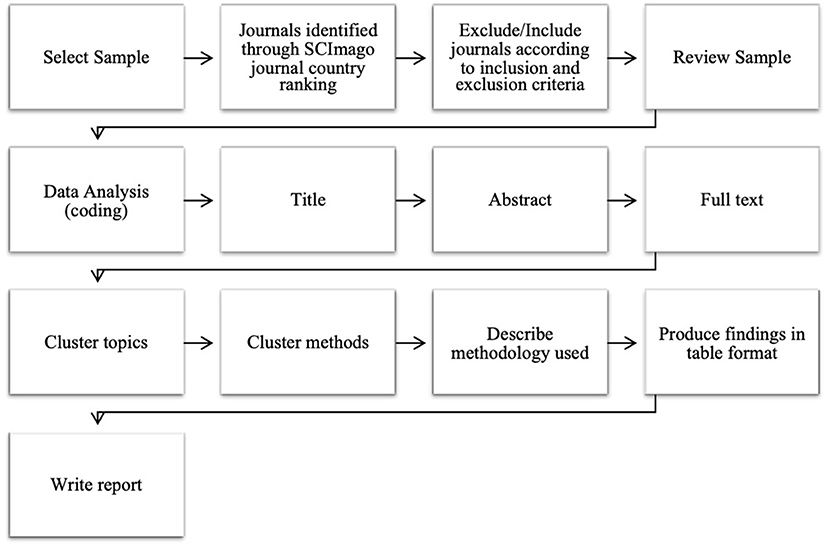
Figure 1 . Systematised review procedure.
According to Johnston et al. (2019) , “literature screening, selection, and data extraction/analyses” (p. 7) are specifically tailored to the aim of a review. Therefore, the steps followed in a systematic review must be reported in a comprehensive and transparent manner. The chosen systematised design adhered to the rigour expected from systematic reviews with regard to full search and data produced in tabular form ( Grant and Booth, 2009 ). The rigorous application of the systematic review is, therefore discussed in relation to these two elements.
Firstly, to ensure a comprehensive search, this research study promoted review transparency by following a clear protocol outlined according to each review stage before collecting data ( Johnston et al., 2019 ). This protocol was similar to that of Ferreira et al. (2016) and approved by three research committees/stakeholders and the researchers ( Johnston et al., 2019 ). The eligibility criteria for article inclusion was based on the research question and clearly stated, and the process of inclusion was recorded on an electronic spreadsheet to create an evidence trail ( Bandara et al., 2015 ; Johnston et al., 2019 ). Microsoft Excel spreadsheets are a popular tool for review studies and can increase the rigour of the review process ( Bandara et al., 2015 ). Screening for appropriate articles for inclusion forms an integral part of a systematic review process ( Johnston et al., 2019 ). This step was applied to two aspects of this research study: the choice of eligible journals and articles to be included. Suitable journals were selected by the first author and reviewed by the second and third authors. Initially, all articles from the chosen journals were included. Then, by process of elimination, those irrelevant to the research aim, i.e., interview articles or discussions etc., were excluded.
To ensure rigourous data extraction, data was first extracted by one reviewer, and an independent person verified the results for completeness and accuracy ( Johnston et al., 2019 ). The research question served as a guide for efficient, organised data extraction ( Johnston et al., 2019 ). Data was categorised according to the codes of interest, along with article identifiers for audit trails such as authors, title and aims of articles. The categorised data was based on the aim of the review ( Johnston et al., 2019 ) and synthesised in tabular form under methods used, how these methods were used, and for what topics in the field of psychology.
The initial search produced a total of 1,145 articles from the 5 journals identified. Inclusion and exclusion criteria resulted in a final sample of 999 articles ( Figure 2 ). Articles were co-coded into 84 codes, from which 10 themes were derived ( Table 1 ).
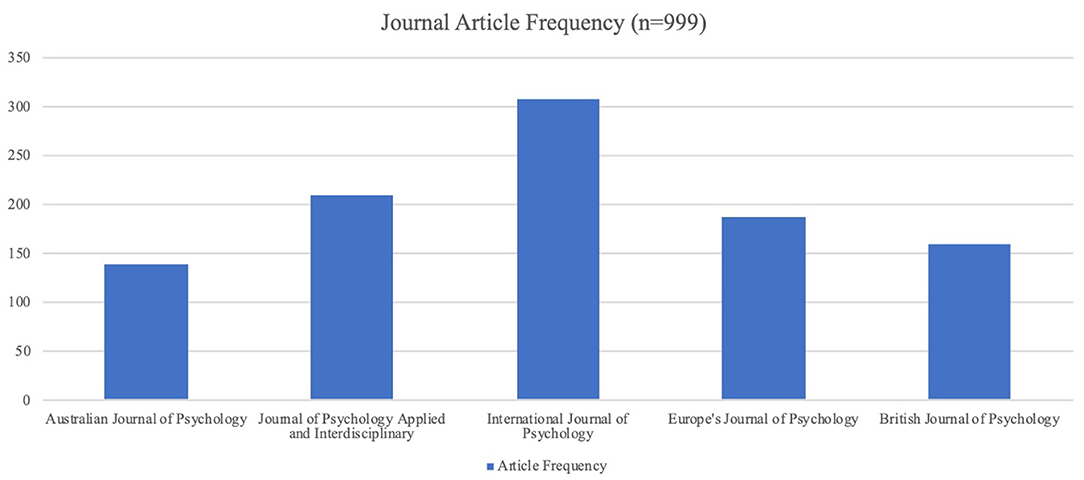
Figure 2 . Journal article frequency.
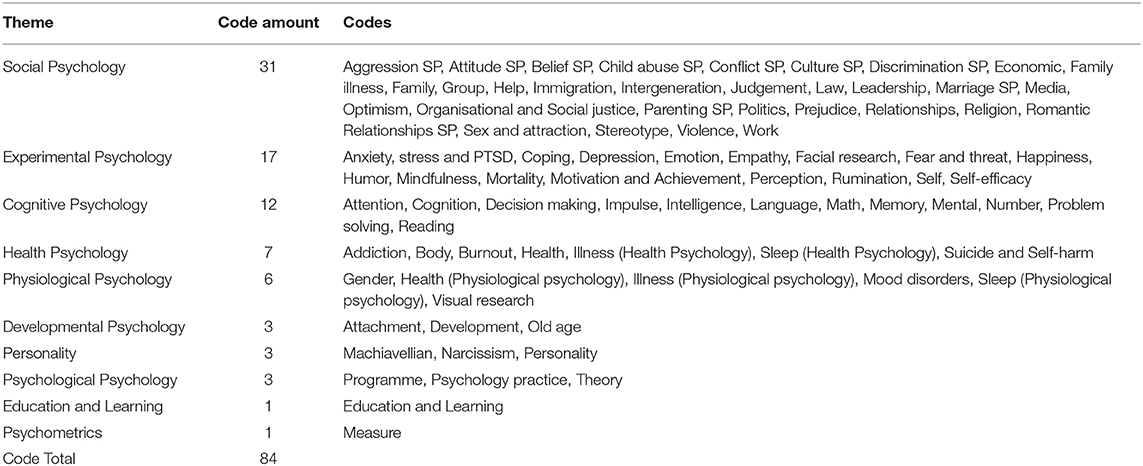
Table 1 . Codes used to form themes (research topics).
These 10 themes represent the topic section of our research question ( Figure 3 ). All these topics except, for the final one, psychological practice , were found to concur with the research areas in psychology as identified by Weiten (2010) . These research areas were chosen to represent the derived codes as they provided broad definitions that allowed for clear, concise categorisation of the vast amount of data. Article codes were categorised under particular themes/topics if they adhered to the research area definitions created by Weiten (2010) . It is important to note that these areas of research do not refer to specific disciplines in psychology, such as industrial psychology; but to broader fields that may encompass sub-interests of these disciplines.
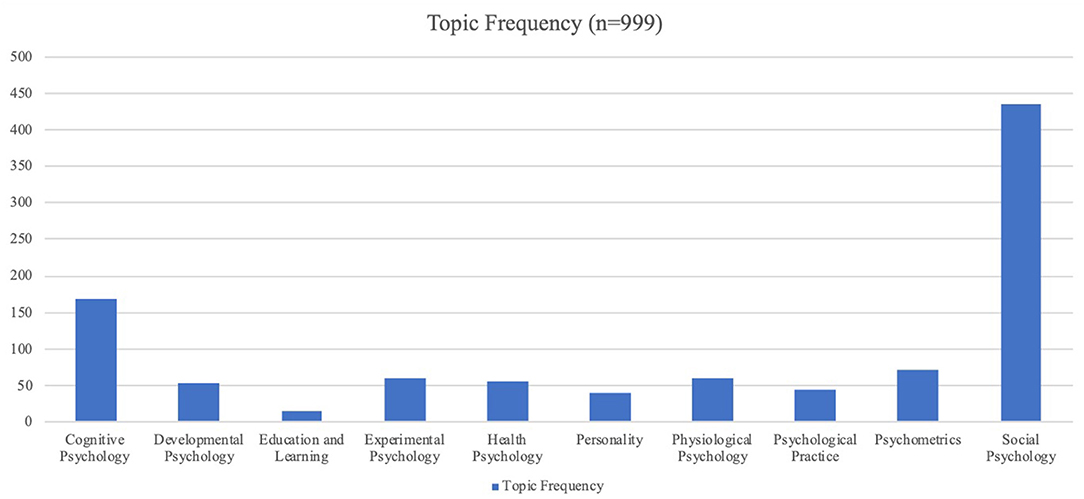
Figure 3 . Topic frequency (international sample).
In the case of developmental psychology , researchers conduct research into human development from childhood to old age. Social psychology includes research on behaviour governed by social drivers. Researchers in the field of educational psychology study how people learn and the best way to teach them. Health psychology aims to determine the effect of psychological factors on physiological health. Physiological psychology , on the other hand, looks at the influence of physiological aspects on behaviour. Experimental psychology is not the only theme that uses experimental research and focuses on the traditional core topics of psychology (for example, sensation). Cognitive psychology studies the higher mental processes. Psychometrics is concerned with measuring capacity or behaviour. Personality research aims to assess and describe consistency in human behaviour ( Weiten, 2010 ). The final theme of psychological practice refers to the experiences, techniques, and interventions employed by practitioners, researchers, and academia in the field of psychology.
Articles under these themes were further subdivided into methodologies: method, sampling, design, data collection, and data analysis. The categorisation was based on information stated in the articles and not inferred by the researchers. Data were compiled into two sets of results presented in this article. The first set addresses the aim of this study from the perspective of the topics identified. The second set of results represents a broad overview of the results from the perspective of the methodology employed. The second set of results are discussed in this article, while the first set is presented in table format. The discussion thus provides a broad overview of methods use in psychology (across all themes), while the table format provides readers with in-depth insight into methods used in the individual themes identified. We believe that presenting the data from both perspectives allow readers a broad understanding of the results. Due a large amount of information that made up our results, we followed Cichocka and Jost (2014) in simplifying our results. Please note that the numbers indicated in the table in terms of methodology differ from the total number of articles. Some articles employed more than one method/sampling technique/design/data collection method/data analysis in their studies.
What follows is the results for what methods are used, how these methods are used, and which topics in psychology they are applied to . Percentages are reported to the second decimal in order to highlight small differences in the occurrence of methodology.
Firstly, with regard to the research methods used, our results show that researchers are more likely to use quantitative research methods (90.22%) compared to all other research methods. Qualitative research was the second most common research method but only made up about 4.79% of the general method usage. Reviews occurred almost as much as qualitative studies (3.91%), as the third most popular method. Mixed-methods research studies (0.98%) occurred across most themes, whereas multi-method research was indicated in only one study and amounted to 0.10% of the methods identified. The specific use of each method in the topics identified is shown in Table 2 and Figure 4 .

Table 2 . Research methods in psychology.
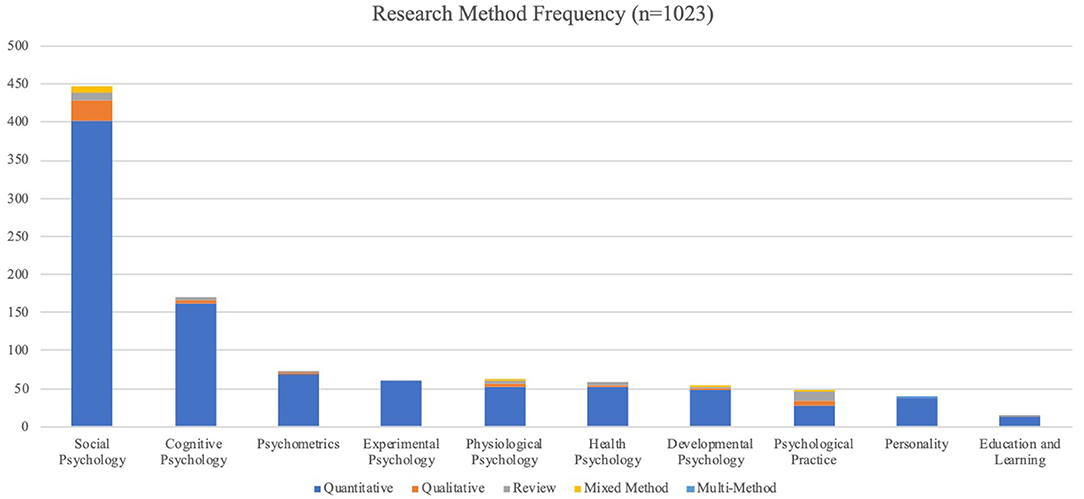
Figure 4 . Research method frequency in topics.
Secondly, in the case of how these research methods are employed , our study indicated the following.
Sampling −78.34% of the studies in the collected articles did not specify a sampling method. From the remainder of the studies, 13 types of sampling methods were identified. These sampling methods included broad categorisation of a sample as, for example, a probability or non-probability sample. General samples of convenience were the methods most likely to be applied (10.34%), followed by random sampling (3.51%), snowball sampling (2.73%), and purposive (1.37%) and cluster sampling (1.27%). The remainder of the sampling methods occurred to a more limited extent (0–1.0%). See Table 3 and Figure 5 for sampling methods employed in each topic.
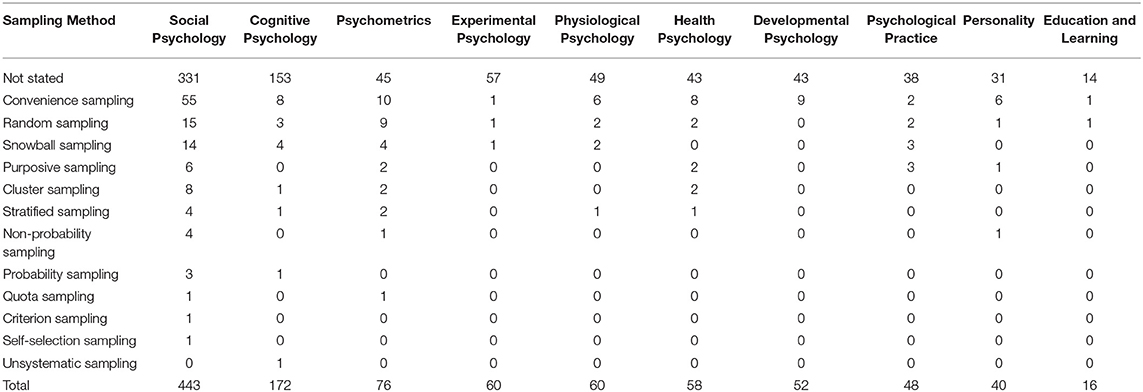
Table 3 . Sampling use in the field of psychology.
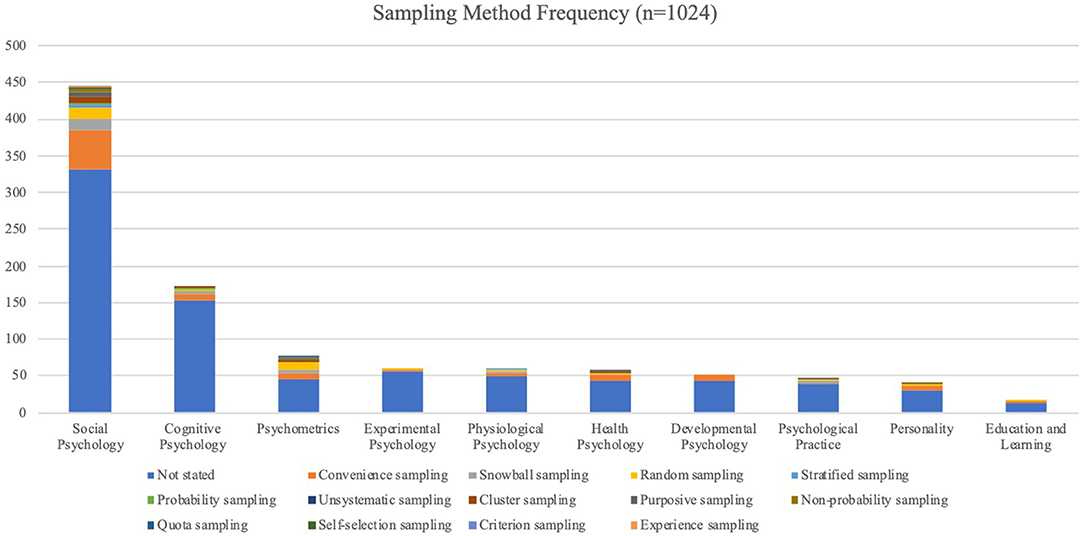
Figure 5 . Sampling method frequency in topics.
Designs were categorised based on the articles' statement thereof. Therefore, it is important to note that, in the case of quantitative studies, non-experimental designs (25.55%) were often indicated due to a lack of experiments and any other indication of design, which, according to Laher (2016) , is a reasonable categorisation. Non-experimental designs should thus be compared with experimental designs only in the description of data, as it could include the use of correlational/cross-sectional designs, which were not overtly stated by the authors. For the remainder of the research methods, “not stated” (7.12%) was assigned to articles without design types indicated.
From the 36 identified designs the most popular designs were cross-sectional (23.17%) and experimental (25.64%), which concurred with the high number of quantitative studies. Longitudinal studies (3.80%), the third most popular design, was used in both quantitative and qualitative studies. Qualitative designs consisted of ethnography (0.38%), interpretative phenomenological designs/phenomenology (0.28%), as well as narrative designs (0.28%). Studies that employed the review method were mostly categorised as “not stated,” with the most often stated review designs being systematic reviews (0.57%). The few mixed method studies employed exploratory, explanatory (0.09%), and concurrent designs (0.19%), with some studies referring to separate designs for the qualitative and quantitative methods. The one study that identified itself as a multi-method study used a longitudinal design. Please see how these designs were employed in each specific topic in Table 4 , Figure 6 .
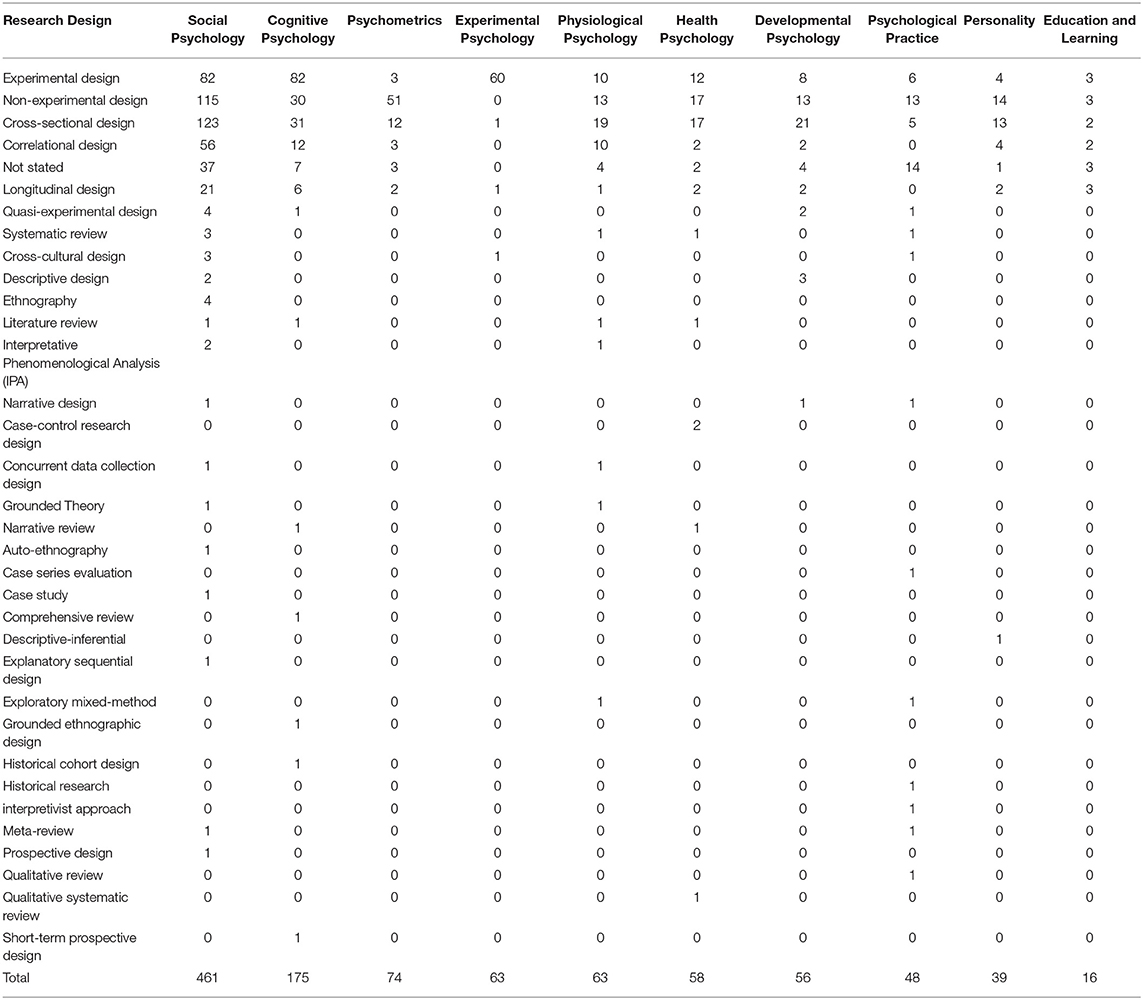
Table 4 . Design use in the field of psychology.
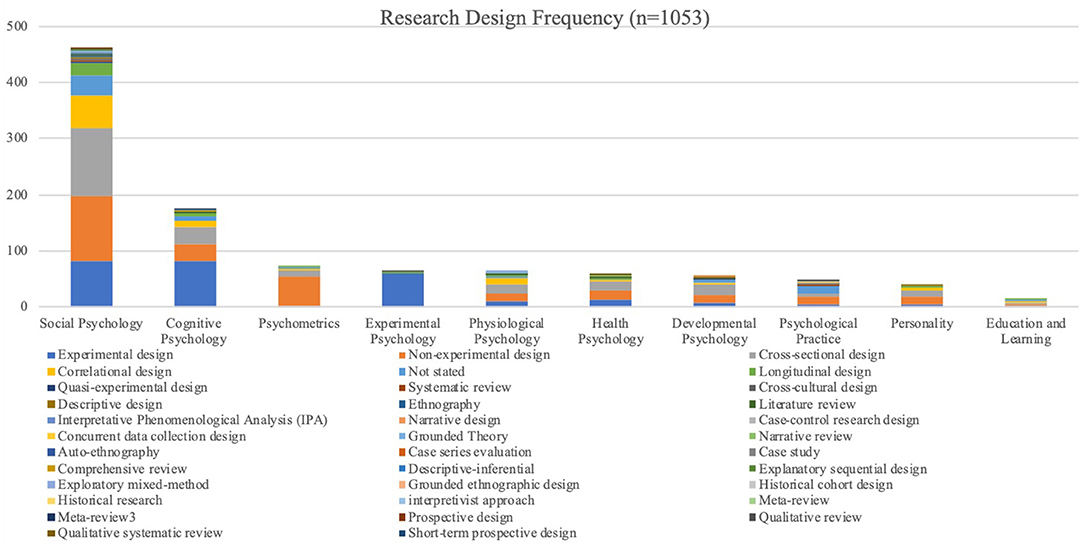
Figure 6 . Design frequency in topics.
Data collection and analysis —data collection included 30 methods, with the data collection method most often employed being questionnaires (57.84%). The experimental task (16.56%) was the second most preferred collection method, which included established or unique tasks designed by the researchers. Cognitive ability tests (6.84%) were also regularly used along with various forms of interviewing (7.66%). Table 5 and Figure 7 represent data collection use in the various topics. Data analysis consisted of 3,857 occurrences of data analysis categorised into ±188 various data analysis techniques shown in Table 6 and Figures 1 – 7 . Descriptive statistics were the most commonly used (23.49%) along with correlational analysis (17.19%). When using a qualitative method, researchers generally employed thematic analysis (0.52%) or different forms of analysis that led to coding and the creation of themes. Review studies presented few data analysis methods, with most studies categorising their results. Mixed method and multi-method studies followed the analysis methods identified for the qualitative and quantitative studies included.
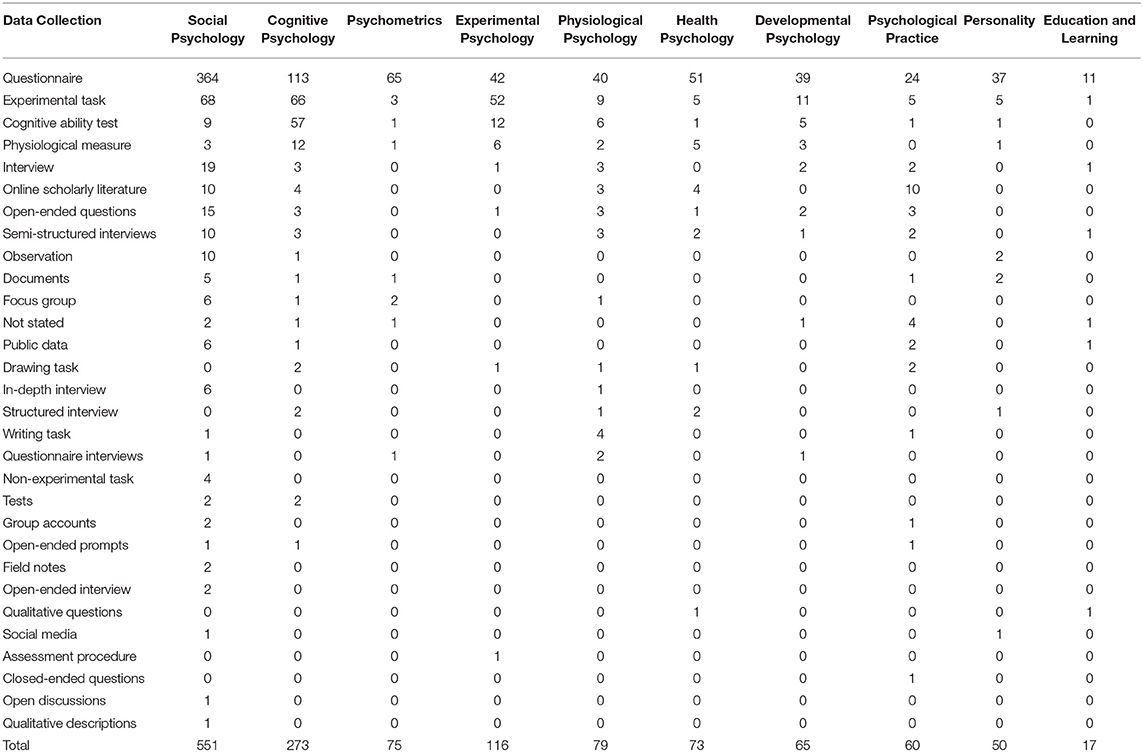
Table 5 . Data collection in the field of psychology.
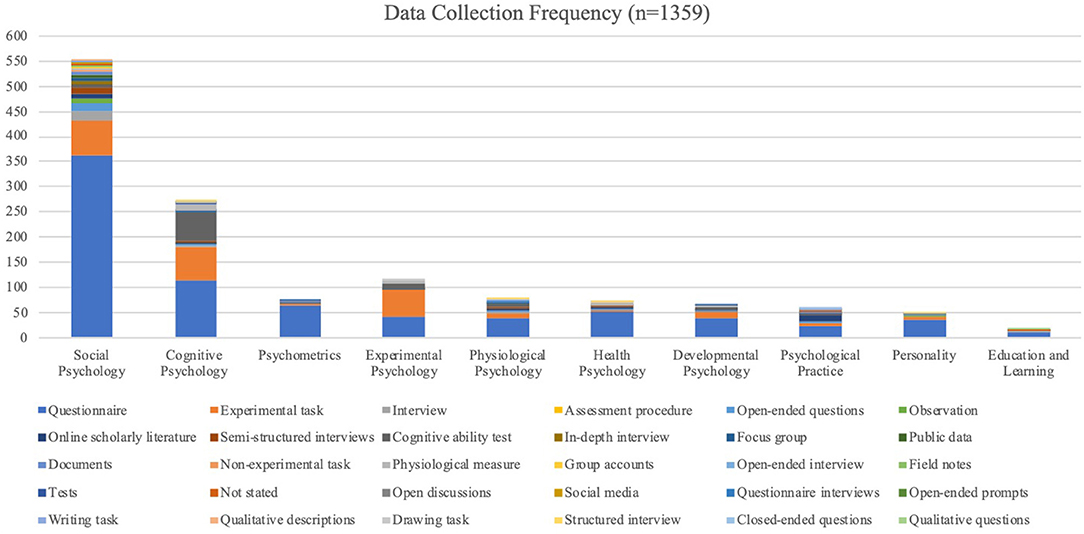
Figure 7 . Data collection frequency in topics.

Table 6 . Data analysis in the field of psychology.
Results of the topics researched in psychology can be seen in the tables, as previously stated in this article. It is noteworthy that, of the 10 topics, social psychology accounted for 43.54% of the studies, with cognitive psychology the second most popular research topic at 16.92%. The remainder of the topics only occurred in 4.0–7.0% of the articles considered. A list of the included 999 articles is available under the section “View Articles” on the following website: https://methodgarden.xtrapolate.io/ . This website was created by Scholtz et al. (2019) to visually present a research framework based on this Article's results.
This systematised review categorised full-length articles from five international journals across the span of 5 years to provide insight into the use of research methods in the field of psychology. Results indicated what methods are used how these methods are being used and for what topics (why) in the included sample of articles. The results should be seen as providing insight into method use and by no means a comprehensive representation of the aforementioned aim due to the limited sample. To our knowledge, this is the first research study to address this topic in this manner. Our discussion attempts to promote a productive way forward in terms of the key results for method use in psychology, especially in the field of academia ( Holloway, 2008 ).
With regard to the methods used, our data stayed true to literature, finding only common research methods ( Grant and Booth, 2009 ; Maree, 2016 ) that varied in the degree to which they were employed. Quantitative research was found to be the most popular method, as indicated by literature ( Breen and Darlaston-Jones, 2010 ; Counsell and Harlow, 2017 ) and previous studies in specific areas of psychology (see Coetzee and Van Zyl, 2014 ). Its long history as the first research method ( Leech et al., 2007 ) in the field of psychology as well as researchers' current application of mathematical approaches in their studies ( Toomela, 2010 ) might contribute to its popularity today. Whatever the case may be, our results show that, despite the growth in qualitative research ( Demuth, 2015 ; Smith and McGannon, 2018 ), quantitative research remains the first choice for article publication in these journals. Despite the included journals indicating openness to articles that apply any research methods. This finding may be due to qualitative research still being seen as a new method ( Burman and Whelan, 2011 ) or reviewers' standards being higher for qualitative studies ( Bluhm et al., 2011 ). Future research is encouraged into the possible biasness in publication of research methods, additionally further investigation with a different sample into the proclaimed growth of qualitative research may also provide different results.
Review studies were found to surpass that of multi-method and mixed method studies. To this effect Grant and Booth (2009) , state that the increased awareness, journal contribution calls as well as its efficiency in procuring research funds all promote the popularity of reviews. The low frequency of mixed method studies contradicts the view in literature that it's the third most utilised research method ( Tashakkori and Teddlie's, 2003 ). Its' low occurrence in this sample could be due to opposing views on mixing methods ( Gunasekare, 2015 ) or that authors prefer publishing in mixed method journals, when using this method, or its relative novelty ( Ivankova et al., 2016 ). Despite its low occurrence, the application of the mixed methods design in articles was methodologically clear in all cases which were not the case for the remainder of research methods.
Additionally, a substantial number of studies used a combination of methodologies that are not mixed or multi-method studies. Perceived fixed boundaries are according to literature often set aside, as confirmed by this result, in order to investigate the aim of a study, which could create a new and helpful way of understanding the world ( Gunasekare, 2015 ). According to Toomela (2010) , this is not unheard of and could be considered a form of “structural systemic science,” as in the case of qualitative methodology (observation) applied in quantitative studies (experimental design) for example. Based on this result, further research into this phenomenon as well as its implications for research methods such as multi and mixed methods is recommended.
Discerning how these research methods were applied, presented some difficulty. In the case of sampling, most studies—regardless of method—did mention some form of inclusion and exclusion criteria, but no definite sampling method. This result, along with the fact that samples often consisted of students from the researchers' own academic institutions, can contribute to literature and debates among academics ( Peterson and Merunka, 2014 ; Laher, 2016 ). Samples of convenience and students as participants especially raise questions about the generalisability and applicability of results ( Peterson and Merunka, 2014 ). This is because attention to sampling is important as inappropriate sampling can debilitate the legitimacy of interpretations ( Onwuegbuzie and Collins, 2017 ). Future investigation into the possible implications of this reported popular use of convenience samples for the field of psychology as well as the reason for this use could provide interesting insight, and is encouraged by this study.
Additionally, and this is indicated in Table 6 , articles seldom report the research designs used, which highlights the pressing aspect of the lack of rigour in the included sample. Rigour with regards to the applied empirical method is imperative in promoting psychology as a science ( American Psychological Association, 2020 ). Omitting parts of the research process in publication when it could have been used to inform others' research skills should be questioned, and the influence on the process of replicating results should be considered. Publications are often rejected due to a lack of rigour in the applied method and designs ( Fonseca, 2013 ; Laher, 2016 ), calling for increased clarity and knowledge of method application. Replication is a critical part of any field of scientific research and requires the “complete articulation” of the study methods used ( Drotar, 2010 , p. 804). The lack of thorough description could be explained by the requirements of certain journals to only report on certain aspects of a research process, especially with regard to the applied design (Laher, 20). However, naming aspects such as sampling and designs, is a requirement according to the APA's Journal Article Reporting Standards (JARS-Quant) ( Appelbaum et al., 2018 ). With very little information on how a study was conducted, authors lose a valuable opportunity to enhance research validity, enrich the knowledge of others, and contribute to the growth of psychology and methodology as a whole. In the case of this research study, it also restricted our results to only reported samples and designs, which indicated a preference for certain designs, such as cross-sectional designs for quantitative studies.
Data collection and analysis were for the most part clearly stated. A key result was the versatile use of questionnaires. Researchers would apply a questionnaire in various ways, for example in questionnaire interviews, online surveys, and written questionnaires across most research methods. This may highlight a trend for future research.
With regard to the topics these methods were employed for, our research study found a new field named “psychological practice.” This result may show the growing consciousness of researchers as part of the research process ( Denzin and Lincoln, 2003 ), psychological practice, and knowledge generation. The most popular of these topics was social psychology, which is generously covered in journals and by learning societies, as testaments of the institutional support and richness social psychology has in the field of psychology ( Chryssochoou, 2015 ). The APA's perspective on 2018 trends in psychology also identifies an increased amount of psychology focus on how social determinants are influencing people's health ( Deangelis, 2017 ).
This study was not without limitations and the following should be taken into account. Firstly, this study used a sample of five specific journals to address the aim of the research study, despite general journal aims (as stated on journal websites), this inclusion signified a bias towards the research methods published in these specific journals only and limited generalisability. A broader sample of journals over a different period of time, or a single journal over a longer period of time might provide different results. A second limitation is the use of Excel spreadsheets and an electronic system to log articles, which was a manual process and therefore left room for error ( Bandara et al., 2015 ). To address this potential issue, co-coding was performed to reduce error. Lastly, this article categorised data based on the information presented in the article sample; there was no interpretation of what methodology could have been applied or whether the methods stated adhered to the criteria for the methods used. Thus, a large number of articles that did not clearly indicate a research method or design could influence the results of this review. However, this in itself was also a noteworthy result. Future research could review research methods of a broader sample of journals with an interpretive review tool that increases rigour. Additionally, the authors also encourage the future use of systematised review designs as a way to promote a concise procedure in applying this design.
Our research study presented the use of research methods for published articles in the field of psychology as well as recommendations for future research based on these results. Insight into the complex questions identified in literature, regarding what methods are used how these methods are being used and for what topics (why) was gained. This sample preferred quantitative methods, used convenience sampling and presented a lack of rigorous accounts for the remaining methodologies. All methodologies that were clearly indicated in the sample were tabulated to allow researchers insight into the general use of methods and not only the most frequently used methods. The lack of rigorous account of research methods in articles was represented in-depth for each step in the research process and can be of vital importance to address the current replication crisis within the field of psychology. Recommendations for future research aimed to motivate research into the practical implications of the results for psychology, for example, publication bias and the use of convenience samples.
Ethics Statement
This study was cleared by the North-West University Health Research Ethics Committee: NWU-00115-17-S1.
Author Contributions
All authors listed have made a substantial, direct and intellectual contribution to the work, and approved it for publication.
Conflict of Interest
The authors declare that the research was conducted in the absence of any commercial or financial relationships that could be construed as a potential conflict of interest.
Aanstoos, C. M. (2014). Psychology . Available online at: http://eds.a.ebscohost.com.nwulib.nwu.ac.za/eds/detail/detail?sid=18de6c5c-2b03-4eac-94890145eb01bc70%40sessionmgr4006&vid$=$1&hid$=$4113&bdata$=$JnNpdGU9ZWRzL~WxpdmU%3d#AN$=$93871882&db$=$ers
Google Scholar
American Psychological Association (2020). Science of Psychology . Available online at: https://www.apa.org/action/science/
Appelbaum, M., Cooper, H., Kline, R. B., Mayo-Wilson, E., Nezu, A. M., and Rao, S. M. (2018). Journal article reporting standards for quantitative research in psychology: the APA Publications and Communications Board task force report. Am. Psychol. 73:3. doi: 10.1037/amp0000191
PubMed Abstract | CrossRef Full Text | Google Scholar
Bandara, W., Furtmueller, E., Gorbacheva, E., Miskon, S., and Beekhuyzen, J. (2015). Achieving rigor in literature reviews: insights from qualitative data analysis and tool-support. Commun. Ass. Inform. Syst. 37, 154–204. doi: 10.17705/1CAIS.03708
CrossRef Full Text | Google Scholar
Barr-Walker, J. (2017). Evidence-based information needs of public health workers: a systematized review. J. Med. Libr. Assoc. 105, 69–79. doi: 10.5195/JMLA.2017.109
Bittermann, A., and Fischer, A. (2018). How to identify hot topics in psychology using topic modeling. Z. Psychol. 226, 3–13. doi: 10.1027/2151-2604/a000318
Bluhm, D. J., Harman, W., Lee, T. W., and Mitchell, T. R. (2011). Qualitative research in management: a decade of progress. J. Manage. Stud. 48, 1866–1891. doi: 10.1111/j.1467-6486.2010.00972.x
Breen, L. J., and Darlaston-Jones, D. (2010). Moving beyond the enduring dominance of positivism in psychological research: implications for psychology in Australia. Aust. Psychol. 45, 67–76. doi: 10.1080/00050060903127481
Burman, E., and Whelan, P. (2011). Problems in / of Qualitative Research . Maidenhead: Open University Press/McGraw Hill.
Chaichanasakul, A., He, Y., Chen, H., Allen, G. E. K., Khairallah, T. S., and Ramos, K. (2011). Journal of Career Development: a 36-year content analysis (1972–2007). J. Career. Dev. 38, 440–455. doi: 10.1177/0894845310380223
Chryssochoou, X. (2015). Social Psychology. Inter. Encycl. Soc. Behav. Sci. 22, 532–537. doi: 10.1016/B978-0-08-097086-8.24095-6
Cichocka, A., and Jost, J. T. (2014). Stripped of illusions? Exploring system justification processes in capitalist and post-Communist societies. Inter. J. Psychol. 49, 6–29. doi: 10.1002/ijop.12011
Clay, R. A. (2017). Psychology is More Popular Than Ever. Monitor on Psychology: Trends Report . Available online at: https://www.apa.org/monitor/2017/11/trends-popular
Coetzee, M., and Van Zyl, L. E. (2014). A review of a decade's scholarly publications (2004–2013) in the South African Journal of Industrial Psychology. SA. J. Psychol . 40, 1–16. doi: 10.4102/sajip.v40i1.1227
Counsell, A., and Harlow, L. (2017). Reporting practices and use of quantitative methods in Canadian journal articles in psychology. Can. Psychol. 58, 140–147. doi: 10.1037/cap0000074
Deangelis, T. (2017). Targeting Social Factors That Undermine Health. Monitor on Psychology: Trends Report . Available online at: https://www.apa.org/monitor/2017/11/trend-social-factors
Demuth, C. (2015). New directions in qualitative research in psychology. Integr. Psychol. Behav. Sci. 49, 125–133. doi: 10.1007/s12124-015-9303-9
Denzin, N. K., and Lincoln, Y. (2003). The Landscape of Qualitative Research: Theories and Issues , 2nd Edn. London: Sage.
Drotar, D. (2010). A call for replications of research in pediatric psychology and guidance for authors. J. Pediatr. Psychol. 35, 801–805. doi: 10.1093/jpepsy/jsq049
Dweck, C. S. (2017). Is psychology headed in the right direction? Yes, no, and maybe. Perspect. Psychol. Sci. 12, 656–659. doi: 10.1177/1745691616687747
Earp, B. D., and Trafimow, D. (2015). Replication, falsification, and the crisis of confidence in social psychology. Front. Psychol. 6:621. doi: 10.3389/fpsyg.2015.00621
Ezeh, A. C., Izugbara, C. O., Kabiru, C. W., Fonn, S., Kahn, K., Manderson, L., et al. (2010). Building capacity for public and population health research in Africa: the consortium for advanced research training in Africa (CARTA) model. Glob. Health Action 3:5693. doi: 10.3402/gha.v3i0.5693
Ferreira, A. L. L., Bessa, M. M. M., Drezett, J., and De Abreu, L. C. (2016). Quality of life of the woman carrier of endometriosis: systematized review. Reprod. Clim. 31, 48–54. doi: 10.1016/j.recli.2015.12.002
Fonseca, M. (2013). Most Common Reasons for Journal Rejections . Available online at: http://www.editage.com/insights/most-common-reasons-for-journal-rejections
Gough, B., and Lyons, A. (2016). The future of qualitative research in psychology: accentuating the positive. Integr. Psychol. Behav. Sci. 50, 234–243. doi: 10.1007/s12124-015-9320-8
Grant, M. J., and Booth, A. (2009). A typology of reviews: an analysis of 14 review types and associated methodologies. Health Info. Libr. J. 26, 91–108. doi: 10.1111/j.1471-1842.2009.00848.x
Grix, J. (2002). Introducing students to the generic terminology of social research. Politics 22, 175–186. doi: 10.1111/1467-9256.00173
Gunasekare, U. L. T. P. (2015). Mixed research method as the third research paradigm: a literature review. Int. J. Sci. Res. 4, 361–368. Available online at: https://ssrn.com/abstract=2735996
Hengartner, M. P. (2018). Raising awareness for the replication crisis in clinical psychology by focusing on inconsistencies in psychotherapy Research: how much can we rely on published findings from efficacy trials? Front. Psychol. 9:256. doi: 10.3389/fpsyg.2018.00256
Holloway, W. (2008). Doing intellectual disagreement differently. Psychoanal. Cult. Soc. 13, 385–396. doi: 10.1057/pcs.2008.29
Ivankova, N. V., Creswell, J. W., and Plano Clark, V. L. (2016). “Foundations and Approaches to mixed methods research,” in First Steps in Research , 2nd Edn. K. Maree (Pretoria: Van Schaick Publishers), 306–335.
Johnson, M., Long, T., and White, A. (2001). Arguments for British pluralism in qualitative health research. J. Adv. Nurs. 33, 243–249. doi: 10.1046/j.1365-2648.2001.01659.x
Johnston, A., Kelly, S. E., Hsieh, S. C., Skidmore, B., and Wells, G. A. (2019). Systematic reviews of clinical practice guidelines: a methodological guide. J. Clin. Epidemiol. 108, 64–72. doi: 10.1016/j.jclinepi.2018.11.030
Ketchen, D. J. Jr., Boyd, B. K., and Bergh, D. D. (2008). Research methodology in strategic management: past accomplishments and future challenges. Organ. Res. Methods 11, 643–658. doi: 10.1177/1094428108319843
Ktepi, B. (2016). Data Analytics (DA) . Available online at: https://eds-b-ebscohost-com.nwulib.nwu.ac.za/eds/detail/detail?vid=2&sid=24c978f0-6685-4ed8-ad85-fa5bb04669b9%40sessionmgr101&bdata=JnNpdGU9ZWRzLWxpdmU%3d#AN=113931286&db=ers
Laher, S. (2016). Ostinato rigore: establishing methodological rigour in quantitative research. S. Afr. J. Psychol. 46, 316–327. doi: 10.1177/0081246316649121
Lee, C. (2015). The Myth of the Off-Limits Source . Available online at: http://blog.apastyle.org/apastyle/research/
Lee, T. W., Mitchell, T. R., and Sablynski, C. J. (1999). Qualitative research in organizational and vocational psychology, 1979–1999. J. Vocat. Behav. 55, 161–187. doi: 10.1006/jvbe.1999.1707
Leech, N. L., Anthony, J., and Onwuegbuzie, A. J. (2007). A typology of mixed methods research designs. Sci. Bus. Media B. V Qual. Quant 43, 265–275. doi: 10.1007/s11135-007-9105-3
Levitt, H. M., Motulsky, S. L., Wertz, F. J., Morrow, S. L., and Ponterotto, J. G. (2017). Recommendations for designing and reviewing qualitative research in psychology: promoting methodological integrity. Qual. Psychol. 4, 2–22. doi: 10.1037/qup0000082
Lowe, S. M., and Moore, S. (2014). Social networks and female reproductive choices in the developing world: a systematized review. Rep. Health 11:85. doi: 10.1186/1742-4755-11-85
Maree, K. (2016). “Planning a research proposal,” in First Steps in Research , 2nd Edn, ed K. Maree (Pretoria: Van Schaik Publishers), 49–70.
Maree, K., and Pietersen, J. (2016). “Sampling,” in First Steps in Research, 2nd Edn , ed K. Maree (Pretoria: Van Schaik Publishers), 191–202.
Ngulube, P. (2013). Blending qualitative and quantitative research methods in library and information science in sub-Saharan Africa. ESARBICA J. 32, 10–23. Available online at: http://hdl.handle.net/10500/22397 .
Nieuwenhuis, J. (2016). “Qualitative research designs and data-gathering techniques,” in First Steps in Research , 2nd Edn, ed K. Maree (Pretoria: Van Schaik Publishers), 71–102.
Nind, M., Kilburn, D., and Wiles, R. (2015). Using video and dialogue to generate pedagogic knowledge: teachers, learners and researchers reflecting together on the pedagogy of social research methods. Int. J. Soc. Res. Methodol. 18, 561–576. doi: 10.1080/13645579.2015.1062628
O'Cathain, A. (2009). Editorial: mixed methods research in the health sciences—a quiet revolution. J. Mix. Methods 3, 1–6. doi: 10.1177/1558689808326272
O'Neil, S., and Koekemoer, E. (2016). Two decades of qualitative research in psychology, industrial and organisational psychology and human resource management within South Africa: a critical review. SA J. Indust. Psychol. 42, 1–16. doi: 10.4102/sajip.v42i1.1350
Onwuegbuzie, A. J., and Collins, K. M. (2017). The role of sampling in mixed methods research enhancing inference quality. Köln Z Soziol. 2, 133–156. doi: 10.1007/s11577-017-0455-0
Perestelo-Pérez, L. (2013). Standards on how to develop and report systematic reviews in psychology and health. Int. J. Clin. Health Psychol. 13, 49–57. doi: 10.1016/S1697-2600(13)70007-3
Pericall, L. M. T., and Taylor, E. (2014). Family function and its relationship to injury severity and psychiatric outcome in children with acquired brain injury: a systematized review. Dev. Med. Child Neurol. 56, 19–30. doi: 10.1111/dmcn.12237
Peterson, R. A., and Merunka, D. R. (2014). Convenience samples of college students and research reproducibility. J. Bus. Res. 67, 1035–1041. doi: 10.1016/j.jbusres.2013.08.010
Ritchie, J., Lewis, J., and Elam, G. (2009). “Designing and selecting samples,” in Qualitative Research Practice: A Guide for Social Science Students and Researchers , 2nd Edn, ed J. Ritchie and J. Lewis (London: Sage), 1–23.
Sandelowski, M. (2011). When a cigar is not just a cigar: alternative perspectives on data and data analysis. Res. Nurs. Health 34, 342–352. doi: 10.1002/nur.20437
Sandelowski, M., Voils, C. I., and Knafl, G. (2009). On quantitizing. J. Mix. Methods Res. 3, 208–222. doi: 10.1177/1558689809334210
Scholtz, S. E., De Klerk, W., and De Beer, L. T. (2019). A data generated research framework for conducting research methods in psychological research.
Scimago Journal & Country Rank (2017). Available online at: http://www.scimagojr.com/journalrank.php?category=3201&year=2015
Scopus (2017a). About Scopus . Available online at: https://www.scopus.com/home.uri (accessed February 01, 2017).
Scopus (2017b). Document Search . Available online at: https://www.scopus.com/home.uri (accessed February 01, 2017).
Scott Jones, J., and Goldring, J. E. (2015). ‘I' m not a quants person'; key strategies in building competence and confidence in staff who teach quantitative research methods. Int. J. Soc. Res. Methodol. 18, 479–494. doi: 10.1080/13645579.2015.1062623
Smith, B., and McGannon, K. R. (2018). Developing rigor in quantitative research: problems and opportunities within sport and exercise psychology. Int. Rev. Sport Exerc. Psychol. 11, 101–121. doi: 10.1080/1750984X.2017.1317357
Stangor, C. (2011). Introduction to Psychology . Available online at: http://www.saylor.org/books/
Strydom, H. (2011). “Sampling in the quantitative paradigm,” in Research at Grass Roots; For the Social Sciences and Human Service Professions , 4th Edn, eds A. S. de Vos, H. Strydom, C. B. Fouché, and C. S. L. Delport (Pretoria: Van Schaik Publishers), 221–234.
Tashakkori, A., and Teddlie, C. (2003). Handbook of Mixed Methods in Social & Behavioural Research . Thousand Oaks, CA: SAGE publications.
Toomela, A. (2010). Quantitative methods in psychology: inevitable and useless. Front. Psychol. 1:29. doi: 10.3389/fpsyg.2010.00029
Truscott, D. M., Swars, S., Smith, S., Thornton-Reid, F., Zhao, Y., Dooley, C., et al. (2010). A cross-disciplinary examination of the prevalence of mixed methods in educational research: 1995–2005. Int. J. Soc. Res. Methodol. 13, 317–328. doi: 10.1080/13645570903097950
Weiten, W. (2010). Psychology Themes and Variations . Belmont, CA: Wadsworth.
Keywords: research methods, research approach, research trends, psychological research, systematised review, research designs, research topic
Citation: Scholtz SE, de Klerk W and de Beer LT (2020) The Use of Research Methods in Psychological Research: A Systematised Review. Front. Res. Metr. Anal. 5:1. doi: 10.3389/frma.2020.00001
Received: 30 December 2019; Accepted: 28 February 2020; Published: 20 March 2020.
Reviewed by:
Copyright © 2020 Scholtz, de Klerk and de Beer. This is an open-access article distributed under the terms of the Creative Commons Attribution License (CC BY) . The use, distribution or reproduction in other forums is permitted, provided the original author(s) and the copyright owner(s) are credited and that the original publication in this journal is cited, in accordance with accepted academic practice. No use, distribution or reproduction is permitted which does not comply with these terms.
*Correspondence: Salomé Elizabeth Scholtz, 22308563@nwu.ac.za
Want to create or adapt books like this? Learn more about how Pressbooks supports open publishing practices.
Ch 2: Psychological Research Methods

Have you ever wondered whether the violence you see on television affects your behavior? Are you more likely to behave aggressively in real life after watching people behave violently in dramatic situations on the screen? Or, could seeing fictional violence actually get aggression out of your system, causing you to be more peaceful? How are children influenced by the media they are exposed to? A psychologist interested in the relationship between behavior and exposure to violent images might ask these very questions.
The topic of violence in the media today is contentious. Since ancient times, humans have been concerned about the effects of new technologies on our behaviors and thinking processes. The Greek philosopher Socrates, for example, worried that writing—a new technology at that time—would diminish people’s ability to remember because they could rely on written records rather than committing information to memory. In our world of quickly changing technologies, questions about the effects of media continue to emerge. Is it okay to talk on a cell phone while driving? Are headphones good to use in a car? What impact does text messaging have on reaction time while driving? These are types of questions that psychologist David Strayer asks in his lab.
Watch this short video to see how Strayer utilizes the scientific method to reach important conclusions regarding technology and driving safety.
You can view the transcript for “Understanding driver distraction” here (opens in new window) .
How can we go about finding answers that are supported not by mere opinion, but by evidence that we can all agree on? The findings of psychological research can help us navigate issues like this.
Introduction to the Scientific Method
Learning objectives.
- Explain the steps of the scientific method
- Describe why the scientific method is important to psychology
- Summarize the processes of informed consent and debriefing
- Explain how research involving humans or animals is regulated

Scientists are engaged in explaining and understanding how the world around them works, and they are able to do so by coming up with theories that generate hypotheses that are testable and falsifiable. Theories that stand up to their tests are retained and refined, while those that do not are discarded or modified. In this way, research enables scientists to separate fact from simple opinion. Having good information generated from research aids in making wise decisions both in public policy and in our personal lives. In this section, you’ll see how psychologists use the scientific method to study and understand behavior.
The Scientific Process

The goal of all scientists is to better understand the world around them. Psychologists focus their attention on understanding behavior, as well as the cognitive (mental) and physiological (body) processes that underlie behavior. In contrast to other methods that people use to understand the behavior of others, such as intuition and personal experience, the hallmark of scientific research is that there is evidence to support a claim. Scientific knowledge is empirical : It is grounded in objective, tangible evidence that can be observed time and time again, regardless of who is observing.
While behavior is observable, the mind is not. If someone is crying, we can see the behavior. However, the reason for the behavior is more difficult to determine. Is the person crying due to being sad, in pain, or happy? Sometimes we can learn the reason for someone’s behavior by simply asking a question, like “Why are you crying?” However, there are situations in which an individual is either uncomfortable or unwilling to answer the question honestly, or is incapable of answering. For example, infants would not be able to explain why they are crying. In such circumstances, the psychologist must be creative in finding ways to better understand behavior. This module explores how scientific knowledge is generated, and how important that knowledge is in forming decisions in our personal lives and in the public domain.
Process of Scientific Research
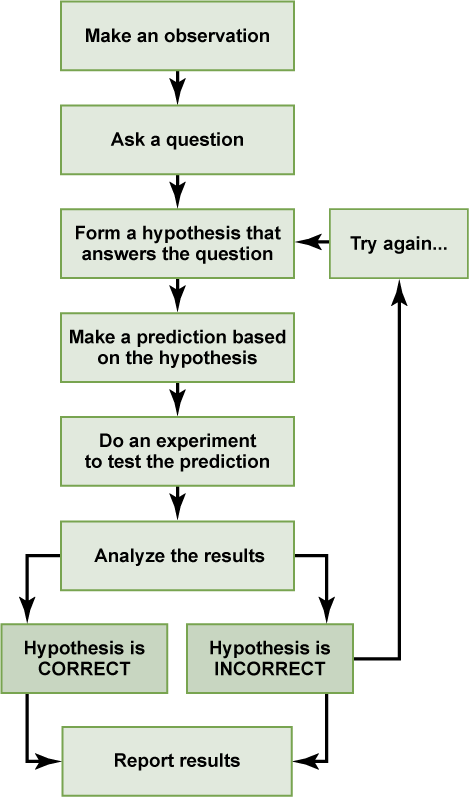
Scientific knowledge is advanced through a process known as the scientific method. Basically, ideas (in the form of theories and hypotheses) are tested against the real world (in the form of empirical observations), and those empirical observations lead to more ideas that are tested against the real world, and so on.
The basic steps in the scientific method are:
- Observe a natural phenomenon and define a question about it
- Make a hypothesis, or potential solution to the question
- Test the hypothesis
- If the hypothesis is true, find more evidence or find counter-evidence
- If the hypothesis is false, create a new hypothesis or try again
- Draw conclusions and repeat–the scientific method is never-ending, and no result is ever considered perfect
In order to ask an important question that may improve our understanding of the world, a researcher must first observe natural phenomena. By making observations, a researcher can define a useful question. After finding a question to answer, the researcher can then make a prediction (a hypothesis) about what he or she thinks the answer will be. This prediction is usually a statement about the relationship between two or more variables. After making a hypothesis, the researcher will then design an experiment to test his or her hypothesis and evaluate the data gathered. These data will either support or refute the hypothesis. Based on the conclusions drawn from the data, the researcher will then find more evidence to support the hypothesis, look for counter-evidence to further strengthen the hypothesis, revise the hypothesis and create a new experiment, or continue to incorporate the information gathered to answer the research question.
Basic Principles of the Scientific Method
Two key concepts in the scientific approach are theory and hypothesis. A theory is a well-developed set of ideas that propose an explanation for observed phenomena that can be used to make predictions about future observations. A hypothesis is a testable prediction that is arrived at logically from a theory. It is often worded as an if-then statement (e.g., if I study all night, I will get a passing grade on the test). The hypothesis is extremely important because it bridges the gap between the realm of ideas and the real world. As specific hypotheses are tested, theories are modified and refined to reflect and incorporate the result of these tests.
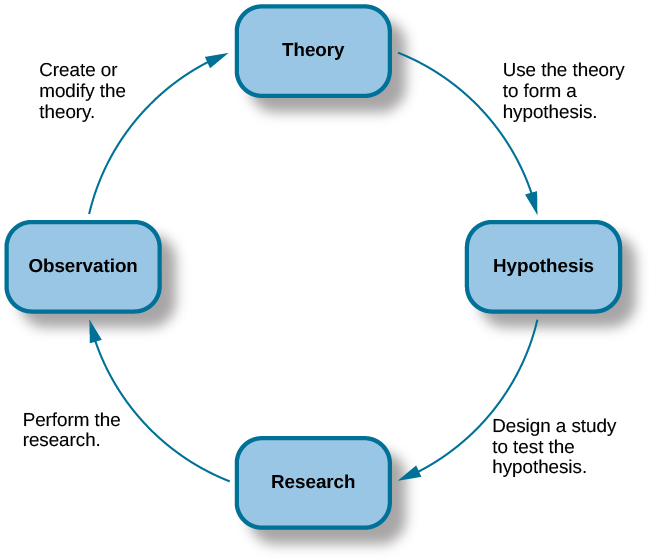
Other key components in following the scientific method include verifiability, predictability, falsifiability, and fairness. Verifiability means that an experiment must be replicable by another researcher. To achieve verifiability, researchers must make sure to document their methods and clearly explain how their experiment is structured and why it produces certain results.
Predictability in a scientific theory implies that the theory should enable us to make predictions about future events. The precision of these predictions is a measure of the strength of the theory.
Falsifiability refers to whether a hypothesis can be disproved. For a hypothesis to be falsifiable, it must be logically possible to make an observation or do a physical experiment that would show that there is no support for the hypothesis. Even when a hypothesis cannot be shown to be false, that does not necessarily mean it is not valid. Future testing may disprove the hypothesis. This does not mean that a hypothesis has to be shown to be false, just that it can be tested.
To determine whether a hypothesis is supported or not supported, psychological researchers must conduct hypothesis testing using statistics. Hypothesis testing is a type of statistics that determines the probability of a hypothesis being true or false. If hypothesis testing reveals that results were “statistically significant,” this means that there was support for the hypothesis and that the researchers can be reasonably confident that their result was not due to random chance. If the results are not statistically significant, this means that the researchers’ hypothesis was not supported.
Fairness implies that all data must be considered when evaluating a hypothesis. A researcher cannot pick and choose what data to keep and what to discard or focus specifically on data that support or do not support a particular hypothesis. All data must be accounted for, even if they invalidate the hypothesis.
Applying the Scientific Method
To see how this process works, let’s consider a specific theory and a hypothesis that might be generated from that theory. As you’ll learn in a later module, the James-Lange theory of emotion asserts that emotional experience relies on the physiological arousal associated with the emotional state. If you walked out of your home and discovered a very aggressive snake waiting on your doorstep, your heart would begin to race and your stomach churn. According to the James-Lange theory, these physiological changes would result in your feeling of fear. A hypothesis that could be derived from this theory might be that a person who is unaware of the physiological arousal that the sight of the snake elicits will not feel fear.
Remember that a good scientific hypothesis is falsifiable, or capable of being shown to be incorrect. Recall from the introductory module that Sigmund Freud had lots of interesting ideas to explain various human behaviors (Figure 5). However, a major criticism of Freud’s theories is that many of his ideas are not falsifiable; for example, it is impossible to imagine empirical observations that would disprove the existence of the id, the ego, and the superego—the three elements of personality described in Freud’s theories. Despite this, Freud’s theories are widely taught in introductory psychology texts because of their historical significance for personality psychology and psychotherapy, and these remain the root of all modern forms of therapy.
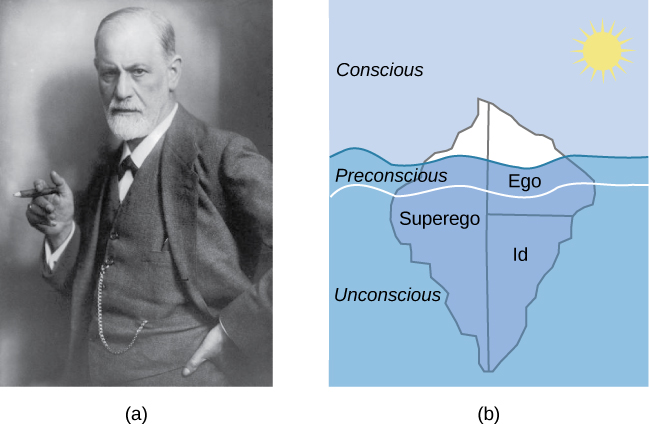
In contrast, the James-Lange theory does generate falsifiable hypotheses, such as the one described above. Some individuals who suffer significant injuries to their spinal columns are unable to feel the bodily changes that often accompany emotional experiences. Therefore, we could test the hypothesis by determining how emotional experiences differ between individuals who have the ability to detect these changes in their physiological arousal and those who do not. In fact, this research has been conducted and while the emotional experiences of people deprived of an awareness of their physiological arousal may be less intense, they still experience emotion (Chwalisz, Diener, & Gallagher, 1988).
Link to Learning
Why the scientific method is important for psychology.
The use of the scientific method is one of the main features that separates modern psychology from earlier philosophical inquiries about the mind. Compared to chemistry, physics, and other “natural sciences,” psychology has long been considered one of the “social sciences” because of the subjective nature of the things it seeks to study. Many of the concepts that psychologists are interested in—such as aspects of the human mind, behavior, and emotions—are subjective and cannot be directly measured. Psychologists often rely instead on behavioral observations and self-reported data, which are considered by some to be illegitimate or lacking in methodological rigor. Applying the scientific method to psychology, therefore, helps to standardize the approach to understanding its very different types of information.
The scientific method allows psychological data to be replicated and confirmed in many instances, under different circumstances, and by a variety of researchers. Through replication of experiments, new generations of psychologists can reduce errors and broaden the applicability of theories. It also allows theories to be tested and validated instead of simply being conjectures that could never be verified or falsified. All of this allows psychologists to gain a stronger understanding of how the human mind works.
Scientific articles published in journals and psychology papers written in the style of the American Psychological Association (i.e., in “APA style”) are structured around the scientific method. These papers include an Introduction, which introduces the background information and outlines the hypotheses; a Methods section, which outlines the specifics of how the experiment was conducted to test the hypothesis; a Results section, which includes the statistics that tested the hypothesis and state whether it was supported or not supported, and a Discussion and Conclusion, which state the implications of finding support for, or no support for, the hypothesis. Writing articles and papers that adhere to the scientific method makes it easy for future researchers to repeat the study and attempt to replicate the results.
Ethics in Research
Today, scientists agree that good research is ethical in nature and is guided by a basic respect for human dignity and safety. However, as you will read in the Tuskegee Syphilis Study, this has not always been the case. Modern researchers must demonstrate that the research they perform is ethically sound. This section presents how ethical considerations affect the design and implementation of research conducted today.
Research Involving Human Participants
Any experiment involving the participation of human subjects is governed by extensive, strict guidelines designed to ensure that the experiment does not result in harm. Any research institution that receives federal support for research involving human participants must have access to an institutional review board (IRB) . The IRB is a committee of individuals often made up of members of the institution’s administration, scientists, and community members (Figure 6). The purpose of the IRB is to review proposals for research that involves human participants. The IRB reviews these proposals with the principles mentioned above in mind, and generally, approval from the IRB is required in order for the experiment to proceed.

An institution’s IRB requires several components in any experiment it approves. For one, each participant must sign an informed consent form before they can participate in the experiment. An informed consent form provides a written description of what participants can expect during the experiment, including potential risks and implications of the research. It also lets participants know that their involvement is completely voluntary and can be discontinued without penalty at any time. Furthermore, the informed consent guarantees that any data collected in the experiment will remain completely confidential. In cases where research participants are under the age of 18, the parents or legal guardians are required to sign the informed consent form.
While the informed consent form should be as honest as possible in describing exactly what participants will be doing, sometimes deception is necessary to prevent participants’ knowledge of the exact research question from affecting the results of the study. Deception involves purposely misleading experiment participants in order to maintain the integrity of the experiment, but not to the point where the deception could be considered harmful. For example, if we are interested in how our opinion of someone is affected by their attire, we might use deception in describing the experiment to prevent that knowledge from affecting participants’ responses. In cases where deception is involved, participants must receive a full debriefing upon conclusion of the study—complete, honest information about the purpose of the experiment, how the data collected will be used, the reasons why deception was necessary, and information about how to obtain additional information about the study.
Dig Deeper: Ethics and the Tuskegee Syphilis Study
Unfortunately, the ethical guidelines that exist for research today were not always applied in the past. In 1932, poor, rural, black, male sharecroppers from Tuskegee, Alabama, were recruited to participate in an experiment conducted by the U.S. Public Health Service, with the aim of studying syphilis in black men (Figure 7). In exchange for free medical care, meals, and burial insurance, 600 men agreed to participate in the study. A little more than half of the men tested positive for syphilis, and they served as the experimental group (given that the researchers could not randomly assign participants to groups, this represents a quasi-experiment). The remaining syphilis-free individuals served as the control group. However, those individuals that tested positive for syphilis were never informed that they had the disease.
While there was no treatment for syphilis when the study began, by 1947 penicillin was recognized as an effective treatment for the disease. Despite this, no penicillin was administered to the participants in this study, and the participants were not allowed to seek treatment at any other facilities if they continued in the study. Over the course of 40 years, many of the participants unknowingly spread syphilis to their wives (and subsequently their children born from their wives) and eventually died because they never received treatment for the disease. This study was discontinued in 1972 when the experiment was discovered by the national press (Tuskegee University, n.d.). The resulting outrage over the experiment led directly to the National Research Act of 1974 and the strict ethical guidelines for research on humans described in this chapter. Why is this study unethical? How were the men who participated and their families harmed as a function of this research?
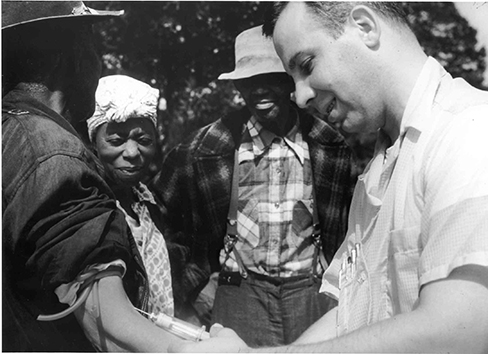
Learn more about the Tuskegee Syphilis Study on the CDC website .
Research Involving Animal Subjects

This does not mean that animal researchers are immune to ethical concerns. Indeed, the humane and ethical treatment of animal research subjects is a critical aspect of this type of research. Researchers must design their experiments to minimize any pain or distress experienced by animals serving as research subjects.
Whereas IRBs review research proposals that involve human participants, animal experimental proposals are reviewed by an Institutional Animal Care and Use Committee (IACUC) . An IACUC consists of institutional administrators, scientists, veterinarians, and community members. This committee is charged with ensuring that all experimental proposals require the humane treatment of animal research subjects. It also conducts semi-annual inspections of all animal facilities to ensure that the research protocols are being followed. No animal research project can proceed without the committee’s approval.
Introduction to Approaches to Research
- Differentiate between descriptive, correlational, and experimental research
- Explain the strengths and weaknesses of case studies, naturalistic observation, and surveys
- Describe the strength and weaknesses of archival research
- Compare longitudinal and cross-sectional approaches to research
- Explain what a correlation coefficient tells us about the relationship between variables
- Describe why correlation does not mean causation
- Describe the experimental process, including ways to control for bias
- Identify and differentiate between independent and dependent variables

Psychologists use descriptive, experimental, and correlational methods to conduct research. Descriptive, or qualitative, methods include the case study, naturalistic observation, surveys, archival research, longitudinal research, and cross-sectional research.
Experiments are conducted in order to determine cause-and-effect relationships. In ideal experimental design, the only difference between the experimental and control groups is whether participants are exposed to the experimental manipulation. Each group goes through all phases of the experiment, but each group will experience a different level of the independent variable: the experimental group is exposed to the experimental manipulation, and the control group is not exposed to the experimental manipulation. The researcher then measures the changes that are produced in the dependent variable in each group. Once data is collected from both groups, it is analyzed statistically to determine if there are meaningful differences between the groups.
When scientists passively observe and measure phenomena it is called correlational research. Here, psychologists do not intervene and change behavior, as they do in experiments. In correlational research, they identify patterns of relationships, but usually cannot infer what causes what. Importantly, with correlational research, you can examine only two variables at a time, no more and no less.
Watch It: More on Research
If you enjoy learning through lectures and want an interesting and comprehensive summary of this section, then click on the Youtube link to watch a lecture given by MIT Professor John Gabrieli . Start at the 30:45 minute mark and watch through the end to hear examples of actual psychological studies and how they were analyzed. Listen for references to independent and dependent variables, experimenter bias, and double-blind studies. In the lecture, you’ll learn about breaking social norms, “WEIRD” research, why expectations matter, how a warm cup of coffee might make you nicer, why you should change your answer on a multiple choice test, and why praise for intelligence won’t make you any smarter.
You can view the transcript for “Lec 2 | MIT 9.00SC Introduction to Psychology, Spring 2011” here (opens in new window) .
Descriptive Research
There are many research methods available to psychologists in their efforts to understand, describe, and explain behavior and the cognitive and biological processes that underlie it. Some methods rely on observational techniques. Other approaches involve interactions between the researcher and the individuals who are being studied—ranging from a series of simple questions to extensive, in-depth interviews—to well-controlled experiments.
The three main categories of psychological research are descriptive, correlational, and experimental research. Research studies that do not test specific relationships between variables are called descriptive, or qualitative, studies . These studies are used to describe general or specific behaviors and attributes that are observed and measured. In the early stages of research it might be difficult to form a hypothesis, especially when there is not any existing literature in the area. In these situations designing an experiment would be premature, as the question of interest is not yet clearly defined as a hypothesis. Often a researcher will begin with a non-experimental approach, such as a descriptive study, to gather more information about the topic before designing an experiment or correlational study to address a specific hypothesis. Descriptive research is distinct from correlational research , in which psychologists formally test whether a relationship exists between two or more variables. Experimental research goes a step further beyond descriptive and correlational research and randomly assigns people to different conditions, using hypothesis testing to make inferences about how these conditions affect behavior. It aims to determine if one variable directly impacts and causes another. Correlational and experimental research both typically use hypothesis testing, whereas descriptive research does not.
Each of these research methods has unique strengths and weaknesses, and each method may only be appropriate for certain types of research questions. For example, studies that rely primarily on observation produce incredible amounts of information, but the ability to apply this information to the larger population is somewhat limited because of small sample sizes. Survey research, on the other hand, allows researchers to easily collect data from relatively large samples. While this allows for results to be generalized to the larger population more easily, the information that can be collected on any given survey is somewhat limited and subject to problems associated with any type of self-reported data. Some researchers conduct archival research by using existing records. While this can be a fairly inexpensive way to collect data that can provide insight into a number of research questions, researchers using this approach have no control on how or what kind of data was collected.
Correlational research can find a relationship between two variables, but the only way a researcher can claim that the relationship between the variables is cause and effect is to perform an experiment. In experimental research, which will be discussed later in the text, there is a tremendous amount of control over variables of interest. While this is a powerful approach, experiments are often conducted in very artificial settings. This calls into question the validity of experimental findings with regard to how they would apply in real-world settings. In addition, many of the questions that psychologists would like to answer cannot be pursued through experimental research because of ethical concerns.
The three main types of descriptive studies are, naturalistic observation, case studies, and surveys.
Naturalistic Observation
If you want to understand how behavior occurs, one of the best ways to gain information is to simply observe the behavior in its natural context. However, people might change their behavior in unexpected ways if they know they are being observed. How do researchers obtain accurate information when people tend to hide their natural behavior? As an example, imagine that your professor asks everyone in your class to raise their hand if they always wash their hands after using the restroom. Chances are that almost everyone in the classroom will raise their hand, but do you think hand washing after every trip to the restroom is really that universal?
This is very similar to the phenomenon mentioned earlier in this module: many individuals do not feel comfortable answering a question honestly. But if we are committed to finding out the facts about hand washing, we have other options available to us.
Suppose we send a classmate into the restroom to actually watch whether everyone washes their hands after using the restroom. Will our observer blend into the restroom environment by wearing a white lab coat, sitting with a clipboard, and staring at the sinks? We want our researcher to be inconspicuous—perhaps standing at one of the sinks pretending to put in contact lenses while secretly recording the relevant information. This type of observational study is called naturalistic observation : observing behavior in its natural setting. To better understand peer exclusion, Suzanne Fanger collaborated with colleagues at the University of Texas to observe the behavior of preschool children on a playground. How did the observers remain inconspicuous over the duration of the study? They equipped a few of the children with wireless microphones (which the children quickly forgot about) and observed while taking notes from a distance. Also, the children in that particular preschool (a “laboratory preschool”) were accustomed to having observers on the playground (Fanger, Frankel, & Hazen, 2012).

It is critical that the observer be as unobtrusive and as inconspicuous as possible: when people know they are being watched, they are less likely to behave naturally. If you have any doubt about this, ask yourself how your driving behavior might differ in two situations: In the first situation, you are driving down a deserted highway during the middle of the day; in the second situation, you are being followed by a police car down the same deserted highway (Figure 9).
It should be pointed out that naturalistic observation is not limited to research involving humans. Indeed, some of the best-known examples of naturalistic observation involve researchers going into the field to observe various kinds of animals in their own environments. As with human studies, the researchers maintain their distance and avoid interfering with the animal subjects so as not to influence their natural behaviors. Scientists have used this technique to study social hierarchies and interactions among animals ranging from ground squirrels to gorillas. The information provided by these studies is invaluable in understanding how those animals organize socially and communicate with one another. The anthropologist Jane Goodall, for example, spent nearly five decades observing the behavior of chimpanzees in Africa (Figure 10). As an illustration of the types of concerns that a researcher might encounter in naturalistic observation, some scientists criticized Goodall for giving the chimps names instead of referring to them by numbers—using names was thought to undermine the emotional detachment required for the objectivity of the study (McKie, 2010).
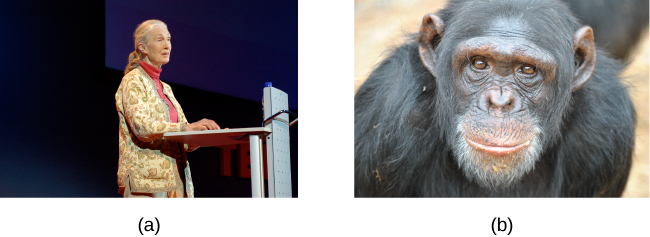
The greatest benefit of naturalistic observation is the validity, or accuracy, of information collected unobtrusively in a natural setting. Having individuals behave as they normally would in a given situation means that we have a higher degree of ecological validity, or realism, than we might achieve with other research approaches. Therefore, our ability to generalize the findings of the research to real-world situations is enhanced. If done correctly, we need not worry about people or animals modifying their behavior simply because they are being observed. Sometimes, people may assume that reality programs give us a glimpse into authentic human behavior. However, the principle of inconspicuous observation is violated as reality stars are followed by camera crews and are interviewed on camera for personal confessionals. Given that environment, we must doubt how natural and realistic their behaviors are.
The major downside of naturalistic observation is that they are often difficult to set up and control. In our restroom study, what if you stood in the restroom all day prepared to record people’s hand washing behavior and no one came in? Or, what if you have been closely observing a troop of gorillas for weeks only to find that they migrated to a new place while you were sleeping in your tent? The benefit of realistic data comes at a cost. As a researcher you have no control of when (or if) you have behavior to observe. In addition, this type of observational research often requires significant investments of time, money, and a good dose of luck.
Sometimes studies involve structured observation. In these cases, people are observed while engaging in set, specific tasks. An excellent example of structured observation comes from Strange Situation by Mary Ainsworth (you will read more about this in the module on lifespan development). The Strange Situation is a procedure used to evaluate attachment styles that exist between an infant and caregiver. In this scenario, caregivers bring their infants into a room filled with toys. The Strange Situation involves a number of phases, including a stranger coming into the room, the caregiver leaving the room, and the caregiver’s return to the room. The infant’s behavior is closely monitored at each phase, but it is the behavior of the infant upon being reunited with the caregiver that is most telling in terms of characterizing the infant’s attachment style with the caregiver.
Another potential problem in observational research is observer bias . Generally, people who act as observers are closely involved in the research project and may unconsciously skew their observations to fit their research goals or expectations. To protect against this type of bias, researchers should have clear criteria established for the types of behaviors recorded and how those behaviors should be classified. In addition, researchers often compare observations of the same event by multiple observers, in order to test inter-rater reliability : a measure of reliability that assesses the consistency of observations by different observers.
Case Studies
In 2011, the New York Times published a feature story on Krista and Tatiana Hogan, Canadian twin girls. These particular twins are unique because Krista and Tatiana are conjoined twins, connected at the head. There is evidence that the two girls are connected in a part of the brain called the thalamus, which is a major sensory relay center. Most incoming sensory information is sent through the thalamus before reaching higher regions of the cerebral cortex for processing.
The implications of this potential connection mean that it might be possible for one twin to experience the sensations of the other twin. For instance, if Krista is watching a particularly funny television program, Tatiana might smile or laugh even if she is not watching the program. This particular possibility has piqued the interest of many neuroscientists who seek to understand how the brain uses sensory information.
These twins represent an enormous resource in the study of the brain, and since their condition is very rare, it is likely that as long as their family agrees, scientists will follow these girls very closely throughout their lives to gain as much information as possible (Dominus, 2011).
In observational research, scientists are conducting a clinical or case study when they focus on one person or just a few individuals. Indeed, some scientists spend their entire careers studying just 10–20 individuals. Why would they do this? Obviously, when they focus their attention on a very small number of people, they can gain a tremendous amount of insight into those cases. The richness of information that is collected in clinical or case studies is unmatched by any other single research method. This allows the researcher to have a very deep understanding of the individuals and the particular phenomenon being studied.
If clinical or case studies provide so much information, why are they not more frequent among researchers? As it turns out, the major benefit of this particular approach is also a weakness. As mentioned earlier, this approach is often used when studying individuals who are interesting to researchers because they have a rare characteristic. Therefore, the individuals who serve as the focus of case studies are not like most other people. If scientists ultimately want to explain all behavior, focusing attention on such a special group of people can make it difficult to generalize any observations to the larger population as a whole. Generalizing refers to the ability to apply the findings of a particular research project to larger segments of society. Again, case studies provide enormous amounts of information, but since the cases are so specific, the potential to apply what’s learned to the average person may be very limited.
Often, psychologists develop surveys as a means of gathering data. Surveys are lists of questions to be answered by research participants, and can be delivered as paper-and-pencil questionnaires, administered electronically, or conducted verbally (Figure 11). Generally, the survey itself can be completed in a short time, and the ease of administering a survey makes it easy to collect data from a large number of people.
Surveys allow researchers to gather data from larger samples than may be afforded by other research methods . A sample is a subset of individuals selected from a population , which is the overall group of individuals that the researchers are interested in. Researchers study the sample and seek to generalize their findings to the population.
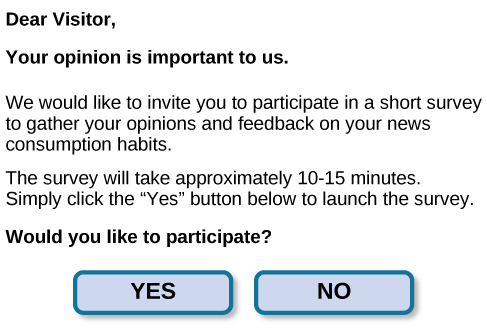
There is both strength and weakness of the survey in comparison to case studies. By using surveys, we can collect information from a larger sample of people. A larger sample is better able to reflect the actual diversity of the population, thus allowing better generalizability. Therefore, if our sample is sufficiently large and diverse, we can assume that the data we collect from the survey can be generalized to the larger population with more certainty than the information collected through a case study. However, given the greater number of people involved, we are not able to collect the same depth of information on each person that would be collected in a case study.
Another potential weakness of surveys is something we touched on earlier in this chapter: people don’t always give accurate responses. They may lie, misremember, or answer questions in a way that they think makes them look good. For example, people may report drinking less alcohol than is actually the case.
Any number of research questions can be answered through the use of surveys. One real-world example is the research conducted by Jenkins, Ruppel, Kizer, Yehl, and Griffin (2012) about the backlash against the US Arab-American community following the terrorist attacks of September 11, 2001. Jenkins and colleagues wanted to determine to what extent these negative attitudes toward Arab-Americans still existed nearly a decade after the attacks occurred. In one study, 140 research participants filled out a survey with 10 questions, including questions asking directly about the participant’s overt prejudicial attitudes toward people of various ethnicities. The survey also asked indirect questions about how likely the participant would be to interact with a person of a given ethnicity in a variety of settings (such as, “How likely do you think it is that you would introduce yourself to a person of Arab-American descent?”). The results of the research suggested that participants were unwilling to report prejudicial attitudes toward any ethnic group. However, there were significant differences between their pattern of responses to questions about social interaction with Arab-Americans compared to other ethnic groups: they indicated less willingness for social interaction with Arab-Americans compared to the other ethnic groups. This suggested that the participants harbored subtle forms of prejudice against Arab-Americans, despite their assertions that this was not the case (Jenkins et al., 2012).
Think It Over
Archival research.
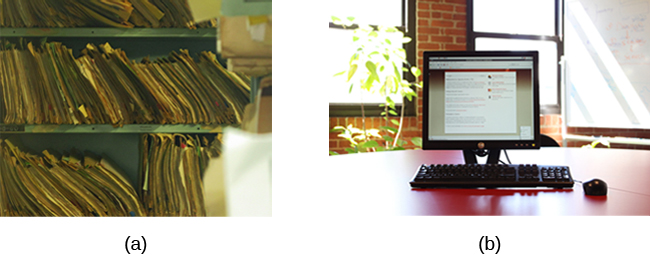
In comparing archival research to other research methods, there are several important distinctions. For one, the researcher employing archival research never directly interacts with research participants. Therefore, the investment of time and money to collect data is considerably less with archival research. Additionally, researchers have no control over what information was originally collected. Therefore, research questions have to be tailored so they can be answered within the structure of the existing data sets. There is also no guarantee of consistency between the records from one source to another, which might make comparing and contrasting different data sets problematic.
Longitudinal and Cross-Sectional Research
Sometimes we want to see how people change over time, as in studies of human development and lifespan. When we test the same group of individuals repeatedly over an extended period of time, we are conducting longitudinal research. Longitudinal research is a research design in which data-gathering is administered repeatedly over an extended period of time. For example, we may survey a group of individuals about their dietary habits at age 20, retest them a decade later at age 30, and then again at age 40.
Another approach is cross-sectional research . In cross-sectional research, a researcher compares multiple segments of the population at the same time. Using the dietary habits example above, the researcher might directly compare different groups of people by age. Instead of observing a group of people for 20 years to see how their dietary habits changed from decade to decade, the researcher would study a group of 20-year-old individuals and compare them to a group of 30-year-old individuals and a group of 40-year-old individuals. While cross-sectional research requires a shorter-term investment, it is also limited by differences that exist between the different generations (or cohorts) that have nothing to do with age per se, but rather reflect the social and cultural experiences of different generations of individuals make them different from one another.
To illustrate this concept, consider the following survey findings. In recent years there has been significant growth in the popular support of same-sex marriage. Many studies on this topic break down survey participants into different age groups. In general, younger people are more supportive of same-sex marriage than are those who are older (Jones, 2013). Does this mean that as we age we become less open to the idea of same-sex marriage, or does this mean that older individuals have different perspectives because of the social climates in which they grew up? Longitudinal research is a powerful approach because the same individuals are involved in the research project over time, which means that the researchers need to be less concerned with differences among cohorts affecting the results of their study.
Often longitudinal studies are employed when researching various diseases in an effort to understand particular risk factors. Such studies often involve tens of thousands of individuals who are followed for several decades. Given the enormous number of people involved in these studies, researchers can feel confident that their findings can be generalized to the larger population. The Cancer Prevention Study-3 (CPS-3) is one of a series of longitudinal studies sponsored by the American Cancer Society aimed at determining predictive risk factors associated with cancer. When participants enter the study, they complete a survey about their lives and family histories, providing information on factors that might cause or prevent the development of cancer. Then every few years the participants receive additional surveys to complete. In the end, hundreds of thousands of participants will be tracked over 20 years to determine which of them develop cancer and which do not.
Clearly, this type of research is important and potentially very informative. For instance, earlier longitudinal studies sponsored by the American Cancer Society provided some of the first scientific demonstrations of the now well-established links between increased rates of cancer and smoking (American Cancer Society, n.d.) (Figure 13).

As with any research strategy, longitudinal research is not without limitations. For one, these studies require an incredible time investment by the researcher and research participants. Given that some longitudinal studies take years, if not decades, to complete, the results will not be known for a considerable period of time. In addition to the time demands, these studies also require a substantial financial investment. Many researchers are unable to commit the resources necessary to see a longitudinal project through to the end.
Research participants must also be willing to continue their participation for an extended period of time, and this can be problematic. People move, get married and take new names, get ill, and eventually die. Even without significant life changes, some people may simply choose to discontinue their participation in the project. As a result, the attrition rates, or reduction in the number of research participants due to dropouts, in longitudinal studies are quite high and increases over the course of a project. For this reason, researchers using this approach typically recruit many participants fully expecting that a substantial number will drop out before the end. As the study progresses, they continually check whether the sample still represents the larger population, and make adjustments as necessary.
Correlational Research
Did you know that as sales in ice cream increase, so does the overall rate of crime? Is it possible that indulging in your favorite flavor of ice cream could send you on a crime spree? Or, after committing crime do you think you might decide to treat yourself to a cone? There is no question that a relationship exists between ice cream and crime (e.g., Harper, 2013), but it would be pretty foolish to decide that one thing actually caused the other to occur.
It is much more likely that both ice cream sales and crime rates are related to the temperature outside. When the temperature is warm, there are lots of people out of their houses, interacting with each other, getting annoyed with one another, and sometimes committing crimes. Also, when it is warm outside, we are more likely to seek a cool treat like ice cream. How do we determine if there is indeed a relationship between two things? And when there is a relationship, how can we discern whether it is attributable to coincidence or causation?

Correlation Does Not Indicate Causation
Correlational research is useful because it allows us to discover the strength and direction of relationships that exist between two variables. However, correlation is limited because establishing the existence of a relationship tells us little about cause and effect . While variables are sometimes correlated because one does cause the other, it could also be that some other factor, a confounding variable , is actually causing the systematic movement in our variables of interest. In the ice cream/crime rate example mentioned earlier, temperature is a confounding variable that could account for the relationship between the two variables.
Even when we cannot point to clear confounding variables, we should not assume that a correlation between two variables implies that one variable causes changes in another. This can be frustrating when a cause-and-effect relationship seems clear and intuitive. Think back to our discussion of the research done by the American Cancer Society and how their research projects were some of the first demonstrations of the link between smoking and cancer. It seems reasonable to assume that smoking causes cancer, but if we were limited to correlational research , we would be overstepping our bounds by making this assumption.

Unfortunately, people mistakenly make claims of causation as a function of correlations all the time. Such claims are especially common in advertisements and news stories. For example, recent research found that people who eat cereal on a regular basis achieve healthier weights than those who rarely eat cereal (Frantzen, Treviño, Echon, Garcia-Dominic, & DiMarco, 2013; Barton et al., 2005). Guess how the cereal companies report this finding. Does eating cereal really cause an individual to maintain a healthy weight, or are there other possible explanations, such as, someone at a healthy weight is more likely to regularly eat a healthy breakfast than someone who is obese or someone who avoids meals in an attempt to diet (Figure 15)? While correlational research is invaluable in identifying relationships among variables, a major limitation is the inability to establish causality. Psychologists want to make statements about cause and effect, but the only way to do that is to conduct an experiment to answer a research question. The next section describes how scientific experiments incorporate methods that eliminate, or control for, alternative explanations, which allow researchers to explore how changes in one variable cause changes in another variable.
Watch this clip from Freakonomics for an example of how correlation does not indicate causation.
You can view the transcript for “Correlation vs. Causality: Freakonomics Movie” here (opens in new window) .
Illusory Correlations
The temptation to make erroneous cause-and-effect statements based on correlational research is not the only way we tend to misinterpret data. We also tend to make the mistake of illusory correlations, especially with unsystematic observations. Illusory correlations , or false correlations, occur when people believe that relationships exist between two things when no such relationship exists. One well-known illusory correlation is the supposed effect that the moon’s phases have on human behavior. Many people passionately assert that human behavior is affected by the phase of the moon, and specifically, that people act strangely when the moon is full (Figure 16).

There is no denying that the moon exerts a powerful influence on our planet. The ebb and flow of the ocean’s tides are tightly tied to the gravitational forces of the moon. Many people believe, therefore, that it is logical that we are affected by the moon as well. After all, our bodies are largely made up of water. A meta-analysis of nearly 40 studies consistently demonstrated, however, that the relationship between the moon and our behavior does not exist (Rotton & Kelly, 1985). While we may pay more attention to odd behavior during the full phase of the moon, the rates of odd behavior remain constant throughout the lunar cycle.
Why are we so apt to believe in illusory correlations like this? Often we read or hear about them and simply accept the information as valid. Or, we have a hunch about how something works and then look for evidence to support that hunch, ignoring evidence that would tell us our hunch is false; this is known as confirmation bias . Other times, we find illusory correlations based on the information that comes most easily to mind, even if that information is severely limited. And while we may feel confident that we can use these relationships to better understand and predict the world around us, illusory correlations can have significant drawbacks. For example, research suggests that illusory correlations—in which certain behaviors are inaccurately attributed to certain groups—are involved in the formation of prejudicial attitudes that can ultimately lead to discriminatory behavior (Fiedler, 2004).
We all have a tendency to make illusory correlations from time to time. Try to think of an illusory correlation that is held by you, a family member, or a close friend. How do you think this illusory correlation came about and what can be done in the future to combat them?
Experiments
Causality: conducting experiments and using the data, experimental hypothesis.
In order to conduct an experiment, a researcher must have a specific hypothesis to be tested. As you’ve learned, hypotheses can be formulated either through direct observation of the real world or after careful review of previous research. For example, if you think that children should not be allowed to watch violent programming on television because doing so would cause them to behave more violently, then you have basically formulated a hypothesis—namely, that watching violent television programs causes children to behave more violently. How might you have arrived at this particular hypothesis? You may have younger relatives who watch cartoons featuring characters using martial arts to save the world from evildoers, with an impressive array of punching, kicking, and defensive postures. You notice that after watching these programs for a while, your young relatives mimic the fighting behavior of the characters portrayed in the cartoon (Figure 17).

These sorts of personal observations are what often lead us to formulate a specific hypothesis, but we cannot use limited personal observations and anecdotal evidence to rigorously test our hypothesis. Instead, to find out if real-world data supports our hypothesis, we have to conduct an experiment.
Designing an Experiment
The most basic experimental design involves two groups: the experimental group and the control group. The two groups are designed to be the same except for one difference— experimental manipulation. The experimental group gets the experimental manipulation—that is, the treatment or variable being tested (in this case, violent TV images)—and the control group does not. Since experimental manipulation is the only difference between the experimental and control groups, we can be sure that any differences between the two are due to experimental manipulation rather than chance.
In our example of how violent television programming might affect violent behavior in children, we have the experimental group view violent television programming for a specified time and then measure their violent behavior. We measure the violent behavior in our control group after they watch nonviolent television programming for the same amount of time. It is important for the control group to be treated similarly to the experimental group, with the exception that the control group does not receive the experimental manipulation. Therefore, we have the control group watch non-violent television programming for the same amount of time as the experimental group.
We also need to precisely define, or operationalize, what is considered violent and nonviolent. An operational definition is a description of how we will measure our variables, and it is important in allowing others understand exactly how and what a researcher measures in a particular experiment. In operationalizing violent behavior, we might choose to count only physical acts like kicking or punching as instances of this behavior, or we also may choose to include angry verbal exchanges. Whatever we determine, it is important that we operationalize violent behavior in such a way that anyone who hears about our study for the first time knows exactly what we mean by violence. This aids peoples’ ability to interpret our data as well as their capacity to repeat our experiment should they choose to do so.
Once we have operationalized what is considered violent television programming and what is considered violent behavior from our experiment participants, we need to establish how we will run our experiment. In this case, we might have participants watch a 30-minute television program (either violent or nonviolent, depending on their group membership) before sending them out to a playground for an hour where their behavior is observed and the number and type of violent acts is recorded.
Ideally, the people who observe and record the children’s behavior are unaware of who was assigned to the experimental or control group, in order to control for experimenter bias. Experimenter bias refers to the possibility that a researcher’s expectations might skew the results of the study. Remember, conducting an experiment requires a lot of planning, and the people involved in the research project have a vested interest in supporting their hypotheses. If the observers knew which child was in which group, it might influence how much attention they paid to each child’s behavior as well as how they interpreted that behavior. By being blind to which child is in which group, we protect against those biases. This situation is a single-blind study , meaning that one of the groups (participants) are unaware as to which group they are in (experiment or control group) while the researcher who developed the experiment knows which participants are in each group.

In a double-blind study , both the researchers and the participants are blind to group assignments. Why would a researcher want to run a study where no one knows who is in which group? Because by doing so, we can control for both experimenter and participant expectations. If you are familiar with the phrase placebo effect, you already have some idea as to why this is an important consideration. The placebo effect occurs when people’s expectations or beliefs influence or determine their experience in a given situation. In other words, simply expecting something to happen can actually make it happen.
The placebo effect is commonly described in terms of testing the effectiveness of a new medication. Imagine that you work in a pharmaceutical company, and you think you have a new drug that is effective in treating depression. To demonstrate that your medication is effective, you run an experiment with two groups: The experimental group receives the medication, and the control group does not. But you don’t want participants to know whether they received the drug or not.
Why is that? Imagine that you are a participant in this study, and you have just taken a pill that you think will improve your mood. Because you expect the pill to have an effect, you might feel better simply because you took the pill and not because of any drug actually contained in the pill—this is the placebo effect.
To make sure that any effects on mood are due to the drug and not due to expectations, the control group receives a placebo (in this case a sugar pill). Now everyone gets a pill, and once again neither the researcher nor the experimental participants know who got the drug and who got the sugar pill. Any differences in mood between the experimental and control groups can now be attributed to the drug itself rather than to experimenter bias or participant expectations (Figure 18).
Independent and Dependent Variables
In a research experiment, we strive to study whether changes in one thing cause changes in another. To achieve this, we must pay attention to two important variables, or things that can be changed, in any experimental study: the independent variable and the dependent variable. An independent variable is manipulated or controlled by the experimenter. In a well-designed experimental study, the independent variable is the only important difference between the experimental and control groups. In our example of how violent television programs affect children’s display of violent behavior, the independent variable is the type of program—violent or nonviolent—viewed by participants in the study (Figure 19). A dependent variable is what the researcher measures to see how much effect the independent variable had. In our example, the dependent variable is the number of violent acts displayed by the experimental participants.
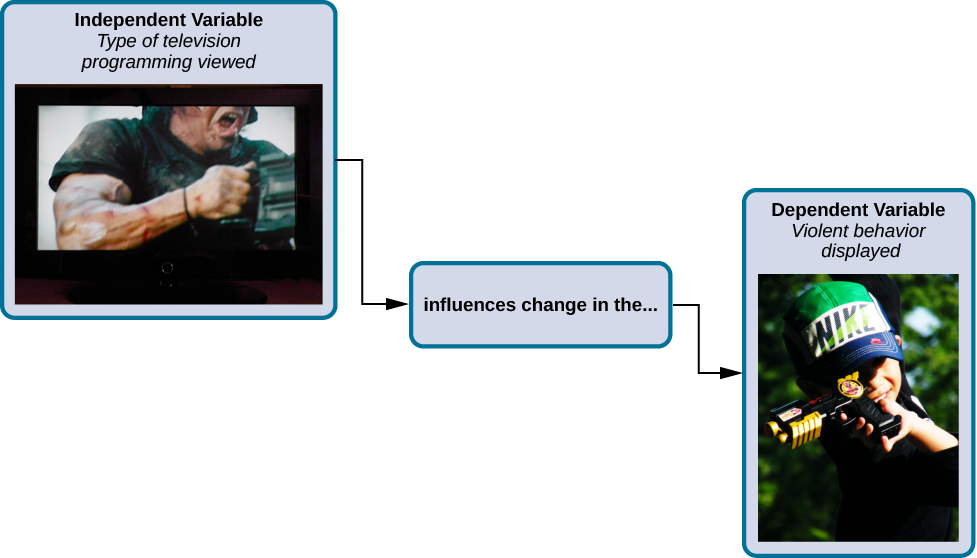
We expect that the dependent variable will change as a function of the independent variable. In other words, the dependent variable depends on the independent variable. A good way to think about the relationship between the independent and dependent variables is with this question: What effect does the independent variable have on the dependent variable? Returning to our example, what effect does watching a half hour of violent television programming or nonviolent television programming have on the number of incidents of physical aggression displayed on the playground?
Selecting and Assigning Experimental Participants
Now that our study is designed, we need to obtain a sample of individuals to include in our experiment. Our study involves human participants so we need to determine who to include. Participants are the subjects of psychological research, and as the name implies, individuals who are involved in psychological research actively participate in the process. Often, psychological research projects rely on college students to serve as participants. In fact, the vast majority of research in psychology subfields has historically involved students as research participants (Sears, 1986; Arnett, 2008). But are college students truly representative of the general population? College students tend to be younger, more educated, more liberal, and less diverse than the general population. Although using students as test subjects is an accepted practice, relying on such a limited pool of research participants can be problematic because it is difficult to generalize findings to the larger population.
Our hypothetical experiment involves children, and we must first generate a sample of child participants. Samples are used because populations are usually too large to reasonably involve every member in our particular experiment (Figure 20). If possible, we should use a random sample (there are other types of samples, but for the purposes of this section, we will focus on random samples). A random sample is a subset of a larger population in which every member of the population has an equal chance of being selected. Random samples are preferred because if the sample is large enough we can be reasonably sure that the participating individuals are representative of the larger population. This means that the percentages of characteristics in the sample—sex, ethnicity, socioeconomic level, and any other characteristics that might affect the results—are close to those percentages in the larger population.
In our example, let’s say we decide our population of interest is fourth graders. But all fourth graders is a very large population, so we need to be more specific; instead we might say our population of interest is all fourth graders in a particular city. We should include students from various income brackets, family situations, races, ethnicities, religions, and geographic areas of town. With this more manageable population, we can work with the local schools in selecting a random sample of around 200 fourth graders who we want to participate in our experiment.
In summary, because we cannot test all of the fourth graders in a city, we want to find a group of about 200 that reflects the composition of that city. With a representative group, we can generalize our findings to the larger population without fear of our sample being biased in some way.

Now that we have a sample, the next step of the experimental process is to split the participants into experimental and control groups through random assignment. With random assignment , all participants have an equal chance of being assigned to either group. There is statistical software that will randomly assign each of the fourth graders in the sample to either the experimental or the control group.
Random assignment is critical for sound experimental design. With sufficiently large samples, random assignment makes it unlikely that there are systematic differences between the groups. So, for instance, it would be very unlikely that we would get one group composed entirely of males, a given ethnic identity, or a given religious ideology. This is important because if the groups were systematically different before the experiment began, we would not know the origin of any differences we find between the groups: Were the differences preexisting, or were they caused by manipulation of the independent variable? Random assignment allows us to assume that any differences observed between experimental and control groups result from the manipulation of the independent variable.
Issues to Consider
While experiments allow scientists to make cause-and-effect claims, they are not without problems. True experiments require the experimenter to manipulate an independent variable, and that can complicate many questions that psychologists might want to address. For instance, imagine that you want to know what effect sex (the independent variable) has on spatial memory (the dependent variable). Although you can certainly look for differences between males and females on a task that taps into spatial memory, you cannot directly control a person’s sex. We categorize this type of research approach as quasi-experimental and recognize that we cannot make cause-and-effect claims in these circumstances.
Experimenters are also limited by ethical constraints. For instance, you would not be able to conduct an experiment designed to determine if experiencing abuse as a child leads to lower levels of self-esteem among adults. To conduct such an experiment, you would need to randomly assign some experimental participants to a group that receives abuse, and that experiment would be unethical.
Introduction to Statistical Thinking
Psychologists use statistics to assist them in analyzing data, and also to give more precise measurements to describe whether something is statistically significant. Analyzing data using statistics enables researchers to find patterns, make claims, and share their results with others. In this section, you’ll learn about some of the tools that psychologists use in statistical analysis.
- Define reliability and validity
- Describe the importance of distributional thinking and the role of p-values in statistical inference
- Describe the role of random sampling and random assignment in drawing cause-and-effect conclusions
- Describe the basic structure of a psychological research article
Interpreting Experimental Findings
Once data is collected from both the experimental and the control groups, a statistical analysis is conducted to find out if there are meaningful differences between the two groups. A statistical analysis determines how likely any difference found is due to chance (and thus not meaningful). In psychology, group differences are considered meaningful, or significant, if the odds that these differences occurred by chance alone are 5 percent or less. Stated another way, if we repeated this experiment 100 times, we would expect to find the same results at least 95 times out of 100.
The greatest strength of experiments is the ability to assert that any significant differences in the findings are caused by the independent variable. This occurs because random selection, random assignment, and a design that limits the effects of both experimenter bias and participant expectancy should create groups that are similar in composition and treatment. Therefore, any difference between the groups is attributable to the independent variable, and now we can finally make a causal statement. If we find that watching a violent television program results in more violent behavior than watching a nonviolent program, we can safely say that watching violent television programs causes an increase in the display of violent behavior.
Reporting Research
When psychologists complete a research project, they generally want to share their findings with other scientists. The American Psychological Association (APA) publishes a manual detailing how to write a paper for submission to scientific journals. Unlike an article that might be published in a magazine like Psychology Today, which targets a general audience with an interest in psychology, scientific journals generally publish peer-reviewed journal articles aimed at an audience of professionals and scholars who are actively involved in research themselves.
A peer-reviewed journal article is read by several other scientists (generally anonymously) with expertise in the subject matter. These peer reviewers provide feedback—to both the author and the journal editor—regarding the quality of the draft. Peer reviewers look for a strong rationale for the research being described, a clear description of how the research was conducted, and evidence that the research was conducted in an ethical manner. They also look for flaws in the study’s design, methods, and statistical analyses. They check that the conclusions drawn by the authors seem reasonable given the observations made during the research. Peer reviewers also comment on how valuable the research is in advancing the discipline’s knowledge. This helps prevent unnecessary duplication of research findings in the scientific literature and, to some extent, ensures that each research article provides new information. Ultimately, the journal editor will compile all of the peer reviewer feedback and determine whether the article will be published in its current state (a rare occurrence), published with revisions, or not accepted for publication.
Peer review provides some degree of quality control for psychological research. Poorly conceived or executed studies can be weeded out, and even well-designed research can be improved by the revisions suggested. Peer review also ensures that the research is described clearly enough to allow other scientists to replicate it, meaning they can repeat the experiment using different samples to determine reliability. Sometimes replications involve additional measures that expand on the original finding. In any case, each replication serves to provide more evidence to support the original research findings. Successful replications of published research make scientists more apt to adopt those findings, while repeated failures tend to cast doubt on the legitimacy of the original article and lead scientists to look elsewhere. For example, it would be a major advancement in the medical field if a published study indicated that taking a new drug helped individuals achieve a healthy weight without changing their diet. But if other scientists could not replicate the results, the original study’s claims would be questioned.
Dig Deeper: The Vaccine-Autism Myth and the Retraction of Published Studies
Some scientists have claimed that routine childhood vaccines cause some children to develop autism, and, in fact, several peer-reviewed publications published research making these claims. Since the initial reports, large-scale epidemiological research has suggested that vaccinations are not responsible for causing autism and that it is much safer to have your child vaccinated than not. Furthermore, several of the original studies making this claim have since been retracted.
A published piece of work can be rescinded when data is called into question because of falsification, fabrication, or serious research design problems. Once rescinded, the scientific community is informed that there are serious problems with the original publication. Retractions can be initiated by the researcher who led the study, by research collaborators, by the institution that employed the researcher, or by the editorial board of the journal in which the article was originally published. In the vaccine-autism case, the retraction was made because of a significant conflict of interest in which the leading researcher had a financial interest in establishing a link between childhood vaccines and autism (Offit, 2008). Unfortunately, the initial studies received so much media attention that many parents around the world became hesitant to have their children vaccinated (Figure 21). For more information about how the vaccine/autism story unfolded, as well as the repercussions of this story, take a look at Paul Offit’s book, Autism’s False Prophets: Bad Science, Risky Medicine, and the Search for a Cure.

Reliability and Validity
Dig deeper: everyday connection: how valid is the sat.
Standardized tests like the SAT are supposed to measure an individual’s aptitude for a college education, but how reliable and valid are such tests? Research conducted by the College Board suggests that scores on the SAT have high predictive validity for first-year college students’ GPA (Kobrin, Patterson, Shaw, Mattern, & Barbuti, 2008). In this context, predictive validity refers to the test’s ability to effectively predict the GPA of college freshmen. Given that many institutions of higher education require the SAT for admission, this high degree of predictive validity might be comforting.
However, the emphasis placed on SAT scores in college admissions has generated some controversy on a number of fronts. For one, some researchers assert that the SAT is a biased test that places minority students at a disadvantage and unfairly reduces the likelihood of being admitted into a college (Santelices & Wilson, 2010). Additionally, some research has suggested that the predictive validity of the SAT is grossly exaggerated in how well it is able to predict the GPA of first-year college students. In fact, it has been suggested that the SAT’s predictive validity may be overestimated by as much as 150% (Rothstein, 2004). Many institutions of higher education are beginning to consider de-emphasizing the significance of SAT scores in making admission decisions (Rimer, 2008).
In 2014, College Board president David Coleman expressed his awareness of these problems, recognizing that college success is more accurately predicted by high school grades than by SAT scores. To address these concerns, he has called for significant changes to the SAT exam (Lewin, 2014).
Statistical Significance

Does drinking coffee actually increase your life expectancy? A recent study (Freedman, Park, Abnet, Hollenbeck, & Sinha, 2012) found that men who drank at least six cups of coffee a day also had a 10% lower chance of dying (women’s chances were 15% lower) than those who drank none. Does this mean you should pick up or increase your own coffee habit? We will explore these results in more depth in the next section about drawing conclusions from statistics. Modern society has become awash in studies such as this; you can read about several such studies in the news every day.
Conducting such a study well, and interpreting the results of such studies requires understanding basic ideas of statistics , the science of gaining insight from data. Key components to a statistical investigation are:
- Planning the study: Start by asking a testable research question and deciding how to collect data. For example, how long was the study period of the coffee study? How many people were recruited for the study, how were they recruited, and from where? How old were they? What other variables were recorded about the individuals? Were changes made to the participants’ coffee habits during the course of the study?
- Examining the data: What are appropriate ways to examine the data? What graphs are relevant, and what do they reveal? What descriptive statistics can be calculated to summarize relevant aspects of the data, and what do they reveal? What patterns do you see in the data? Are there any individual observations that deviate from the overall pattern, and what do they reveal? For example, in the coffee study, did the proportions differ when we compared the smokers to the non-smokers?
- Inferring from the data: What are valid statistical methods for drawing inferences “beyond” the data you collected? In the coffee study, is the 10%–15% reduction in risk of death something that could have happened just by chance?
- Drawing conclusions: Based on what you learned from your data, what conclusions can you draw? Who do you think these conclusions apply to? (Were the people in the coffee study older? Healthy? Living in cities?) Can you draw a cause-and-effect conclusion about your treatments? (Are scientists now saying that the coffee drinking is the cause of the decreased risk of death?)
Notice that the numerical analysis (“crunching numbers” on the computer) comprises only a small part of overall statistical investigation. In this section, you will see how we can answer some of these questions and what questions you should be asking about any statistical investigation you read about.
Distributional Thinking
When data are collected to address a particular question, an important first step is to think of meaningful ways to organize and examine the data. Let’s take a look at an example.
Example 1 : Researchers investigated whether cancer pamphlets are written at an appropriate level to be read and understood by cancer patients (Short, Moriarty, & Cooley, 1995). Tests of reading ability were given to 63 patients. In addition, readability level was determined for a sample of 30 pamphlets, based on characteristics such as the lengths of words and sentences in the pamphlet. The results, reported in terms of grade levels, are displayed in Figure 23.

- Data vary . More specifically, values of a variable (such as reading level of a cancer patient or readability level of a cancer pamphlet) vary.
- Analyzing the pattern of variation, called the distribution of the variable, often reveals insights.
Addressing the research question of whether the cancer pamphlets are written at appropriate levels for the cancer patients requires comparing the two distributions. A naïve comparison might focus only on the centers of the distributions. Both medians turn out to be ninth grade, but considering only medians ignores the variability and the overall distributions of these data. A more illuminating approach is to compare the entire distributions, for example with a graph, as in Figure 24.
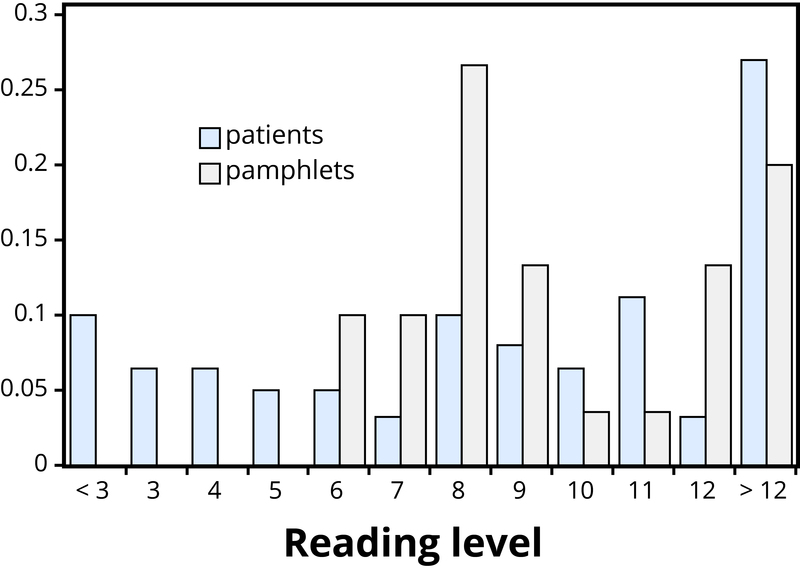
Figure 24 makes clear that the two distributions are not well aligned at all. The most glaring discrepancy is that many patients (17/63, or 27%, to be precise) have a reading level below that of the most readable pamphlet. These patients will need help to understand the information provided in the cancer pamphlets. Notice that this conclusion follows from considering the distributions as a whole, not simply measures of center or variability, and that the graph contrasts those distributions more immediately than the frequency tables.
Finding Significance in Data
Even when we find patterns in data, often there is still uncertainty in various aspects of the data. For example, there may be potential for measurement errors (even your own body temperature can fluctuate by almost 1°F over the course of the day). Or we may only have a “snapshot” of observations from a more long-term process or only a small subset of individuals from the population of interest. In such cases, how can we determine whether patterns we see in our small set of data is convincing evidence of a systematic phenomenon in the larger process or population? Let’s take a look at another example.
Example 2 : In a study reported in the November 2007 issue of Nature , researchers investigated whether pre-verbal infants take into account an individual’s actions toward others in evaluating that individual as appealing or aversive (Hamlin, Wynn, & Bloom, 2007). In one component of the study, 10-month-old infants were shown a “climber” character (a piece of wood with “googly” eyes glued onto it) that could not make it up a hill in two tries. Then the infants were shown two scenarios for the climber’s next try, one where the climber was pushed to the top of the hill by another character (“helper”), and one where the climber was pushed back down the hill by another character (“hinderer”). The infant was alternately shown these two scenarios several times. Then the infant was presented with two pieces of wood (representing the helper and the hinderer characters) and asked to pick one to play with.
The researchers found that of the 16 infants who made a clear choice, 14 chose to play with the helper toy. One possible explanation for this clear majority result is that the helping behavior of the one toy increases the infants’ likelihood of choosing that toy. But are there other possible explanations? What about the color of the toy? Well, prior to collecting the data, the researchers arranged so that each color and shape (red square and blue circle) would be seen by the same number of infants. Or maybe the infants had right-handed tendencies and so picked whichever toy was closer to their right hand?
Well, prior to collecting the data, the researchers arranged it so half the infants saw the helper toy on the right and half on the left. Or, maybe the shapes of these wooden characters (square, triangle, circle) had an effect? Perhaps, but again, the researchers controlled for this by rotating which shape was the helper toy, the hinderer toy, and the climber. When designing experiments, it is important to control for as many variables as might affect the responses as possible. It is beginning to appear that the researchers accounted for all the other plausible explanations. But there is one more important consideration that cannot be controlled—if we did the study again with these 16 infants, they might not make the same choices. In other words, there is some randomness inherent in their selection process.
Maybe each infant had no genuine preference at all, and it was simply “random luck” that led to 14 infants picking the helper toy. Although this random component cannot be controlled, we can apply a probability model to investigate the pattern of results that would occur in the long run if random chance were the only factor.
If the infants were equally likely to pick between the two toys, then each infant had a 50% chance of picking the helper toy. It’s like each infant tossed a coin, and if it landed heads, the infant picked the helper toy. So if we tossed a coin 16 times, could it land heads 14 times? Sure, it’s possible, but it turns out to be very unlikely. Getting 14 (or more) heads in 16 tosses is about as likely as tossing a coin and getting 9 heads in a row. This probability is referred to as a p-value . The p-value represents the likelihood that experimental results happened by chance. Within psychology, the most common standard for p-values is “p < .05”. What this means is that there is less than a 5% probability that the results happened just by random chance, and therefore a 95% probability that the results reflect a meaningful pattern in human psychology. We call this statistical significance .
So, in the study above, if we assume that each infant was choosing equally, then the probability that 14 or more out of 16 infants would choose the helper toy is found to be 0.0021. We have only two logical possibilities: either the infants have a genuine preference for the helper toy, or the infants have no preference (50/50) and an outcome that would occur only 2 times in 1,000 iterations happened in this study. Because this p-value of 0.0021 is quite small, we conclude that the study provides very strong evidence that these infants have a genuine preference for the helper toy.
If we compare the p-value to some cut-off value, like 0.05, we see that the p=value is smaller. Because the p-value is smaller than that cut-off value, then we reject the hypothesis that only random chance was at play here. In this case, these researchers would conclude that significantly more than half of the infants in the study chose the helper toy, giving strong evidence of a genuine preference for the toy with the helping behavior.
Drawing Conclusions from Statistics
Generalizability.

One limitation to the study mentioned previously about the babies choosing the “helper” toy is that the conclusion only applies to the 16 infants in the study. We don’t know much about how those 16 infants were selected. Suppose we want to select a subset of individuals (a sample ) from a much larger group of individuals (the population ) in such a way that conclusions from the sample can be generalized to the larger population. This is the question faced by pollsters every day.
Example 3 : The General Social Survey (GSS) is a survey on societal trends conducted every other year in the United States. Based on a sample of about 2,000 adult Americans, researchers make claims about what percentage of the U.S. population consider themselves to be “liberal,” what percentage consider themselves “happy,” what percentage feel “rushed” in their daily lives, and many other issues. The key to making these claims about the larger population of all American adults lies in how the sample is selected. The goal is to select a sample that is representative of the population, and a common way to achieve this goal is to select a r andom sample that gives every member of the population an equal chance of being selected for the sample. In its simplest form, random sampling involves numbering every member of the population and then using a computer to randomly select the subset to be surveyed. Most polls don’t operate exactly like this, but they do use probability-based sampling methods to select individuals from nationally representative panels.
In 2004, the GSS reported that 817 of 977 respondents (or 83.6%) indicated that they always or sometimes feel rushed. This is a clear majority, but we again need to consider variation due to random sampling . Fortunately, we can use the same probability model we did in the previous example to investigate the probable size of this error. (Note, we can use the coin-tossing model when the actual population size is much, much larger than the sample size, as then we can still consider the probability to be the same for every individual in the sample.) This probability model predicts that the sample result will be within 3 percentage points of the population value (roughly 1 over the square root of the sample size, the margin of error. A statistician would conclude, with 95% confidence, that between 80.6% and 86.6% of all adult Americans in 2004 would have responded that they sometimes or always feel rushed.
The key to the margin of error is that when we use a probability sampling method, we can make claims about how often (in the long run, with repeated random sampling) the sample result would fall within a certain distance from the unknown population value by chance (meaning by random sampling variation) alone. Conversely, non-random samples are often suspect to bias, meaning the sampling method systematically over-represents some segments of the population and under-represents others. We also still need to consider other sources of bias, such as individuals not responding honestly. These sources of error are not measured by the margin of error.
Cause and Effect
In many research studies, the primary question of interest concerns differences between groups. Then the question becomes how were the groups formed (e.g., selecting people who already drink coffee vs. those who don’t). In some studies, the researchers actively form the groups themselves. But then we have a similar question—could any differences we observe in the groups be an artifact of that group-formation process? Or maybe the difference we observe in the groups is so large that we can discount a “fluke” in the group-formation process as a reasonable explanation for what we find?
Example 4 : A psychology study investigated whether people tend to display more creativity when they are thinking about intrinsic (internal) or extrinsic (external) motivations (Ramsey & Schafer, 2002, based on a study by Amabile, 1985). The subjects were 47 people with extensive experience with creative writing. Subjects began by answering survey questions about either intrinsic motivations for writing (such as the pleasure of self-expression) or extrinsic motivations (such as public recognition). Then all subjects were instructed to write a haiku, and those poems were evaluated for creativity by a panel of judges. The researchers conjectured beforehand that subjects who were thinking about intrinsic motivations would display more creativity than subjects who were thinking about extrinsic motivations. The creativity scores from the 47 subjects in this study are displayed in Figure 26, where higher scores indicate more creativity.

In this example, the key question is whether the type of motivation affects creativity scores. In particular, do subjects who were asked about intrinsic motivations tend to have higher creativity scores than subjects who were asked about extrinsic motivations?
Figure 26 reveals that both motivation groups saw considerable variability in creativity scores, and these scores have considerable overlap between the groups. In other words, it’s certainly not always the case that those with extrinsic motivations have higher creativity than those with intrinsic motivations, but there may still be a statistical tendency in this direction. (Psychologist Keith Stanovich (2013) refers to people’s difficulties with thinking about such probabilistic tendencies as “the Achilles heel of human cognition.”)
The mean creativity score is 19.88 for the intrinsic group, compared to 15.74 for the extrinsic group, which supports the researchers’ conjecture. Yet comparing only the means of the two groups fails to consider the variability of creativity scores in the groups. We can measure variability with statistics using, for instance, the standard deviation: 5.25 for the extrinsic group and 4.40 for the intrinsic group. The standard deviations tell us that most of the creativity scores are within about 5 points of the mean score in each group. We see that the mean score for the intrinsic group lies within one standard deviation of the mean score for extrinsic group. So, although there is a tendency for the creativity scores to be higher in the intrinsic group, on average, the difference is not extremely large.
We again want to consider possible explanations for this difference. The study only involved individuals with extensive creative writing experience. Although this limits the population to which we can generalize, it does not explain why the mean creativity score was a bit larger for the intrinsic group than for the extrinsic group. Maybe women tend to receive higher creativity scores? Here is where we need to focus on how the individuals were assigned to the motivation groups. If only women were in the intrinsic motivation group and only men in the extrinsic group, then this would present a problem because we wouldn’t know if the intrinsic group did better because of the different type of motivation or because they were women. However, the researchers guarded against such a problem by randomly assigning the individuals to the motivation groups. Like flipping a coin, each individual was just as likely to be assigned to either type of motivation. Why is this helpful? Because this random assignment tends to balance out all the variables related to creativity we can think of, and even those we don’t think of in advance, between the two groups. So we should have a similar male/female split between the two groups; we should have a similar age distribution between the two groups; we should have a similar distribution of educational background between the two groups; and so on. Random assignment should produce groups that are as similar as possible except for the type of motivation, which presumably eliminates all those other variables as possible explanations for the observed tendency for higher scores in the intrinsic group.
But does this always work? No, so by “luck of the draw” the groups may be a little different prior to answering the motivation survey. So then the question is, is it possible that an unlucky random assignment is responsible for the observed difference in creativity scores between the groups? In other words, suppose each individual’s poem was going to get the same creativity score no matter which group they were assigned to, that the type of motivation in no way impacted their score. Then how often would the random-assignment process alone lead to a difference in mean creativity scores as large (or larger) than 19.88 – 15.74 = 4.14 points?
We again want to apply to a probability model to approximate a p-value , but this time the model will be a bit different. Think of writing everyone’s creativity scores on an index card, shuffling up the index cards, and then dealing out 23 to the extrinsic motivation group and 24 to the intrinsic motivation group, and finding the difference in the group means. We (better yet, the computer) can repeat this process over and over to see how often, when the scores don’t change, random assignment leads to a difference in means at least as large as 4.41. Figure 27 shows the results from 1,000 such hypothetical random assignments for these scores.
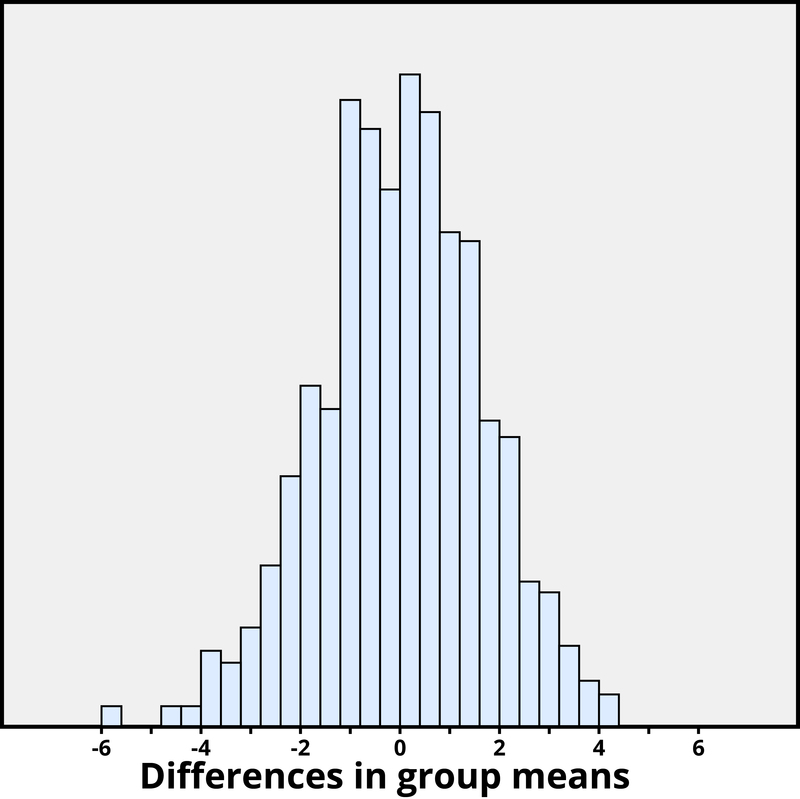
Only 2 of the 1,000 simulated random assignments produced a difference in group means of 4.41 or larger. In other words, the approximate p-value is 2/1000 = 0.002. This small p-value indicates that it would be very surprising for the random assignment process alone to produce such a large difference in group means. Therefore, as with Example 2, we have strong evidence that focusing on intrinsic motivations tends to increase creativity scores, as compared to thinking about extrinsic motivations.
Notice that the previous statement implies a cause-and-effect relationship between motivation and creativity score; is such a strong conclusion justified? Yes, because of the random assignment used in the study. That should have balanced out any other variables between the two groups, so now that the small p-value convinces us that the higher mean in the intrinsic group wasn’t just a coincidence, the only reasonable explanation left is the difference in the type of motivation. Can we generalize this conclusion to everyone? Not necessarily—we could cautiously generalize this conclusion to individuals with extensive experience in creative writing similar the individuals in this study, but we would still want to know more about how these individuals were selected to participate.

Statistical thinking involves the careful design of a study to collect meaningful data to answer a focused research question, detailed analysis of patterns in the data, and drawing conclusions that go beyond the observed data. Random sampling is paramount to generalizing results from our sample to a larger population, and random assignment is key to drawing cause-and-effect conclusions. With both kinds of randomness, probability models help us assess how much random variation we can expect in our results, in order to determine whether our results could happen by chance alone and to estimate a margin of error.
So where does this leave us with regard to the coffee study mentioned previously (the Freedman, Park, Abnet, Hollenbeck, & Sinha, 2012 found that men who drank at least six cups of coffee a day had a 10% lower chance of dying (women 15% lower) than those who drank none)? We can answer many of the questions:
- This was a 14-year study conducted by researchers at the National Cancer Institute.
- The results were published in the June issue of the New England Journal of Medicine , a respected, peer-reviewed journal.
- The study reviewed coffee habits of more than 402,000 people ages 50 to 71 from six states and two metropolitan areas. Those with cancer, heart disease, and stroke were excluded at the start of the study. Coffee consumption was assessed once at the start of the study.
- About 52,000 people died during the course of the study.
- People who drank between two and five cups of coffee daily showed a lower risk as well, but the amount of reduction increased for those drinking six or more cups.
- The sample sizes were fairly large and so the p-values are quite small, even though percent reduction in risk was not extremely large (dropping from a 12% chance to about 10%–11%).
- Whether coffee was caffeinated or decaffeinated did not appear to affect the results.
- This was an observational study, so no cause-and-effect conclusions can be drawn between coffee drinking and increased longevity, contrary to the impression conveyed by many news headlines about this study. In particular, it’s possible that those with chronic diseases don’t tend to drink coffee.
This study needs to be reviewed in the larger context of similar studies and consistency of results across studies, with the constant caution that this was not a randomized experiment. Whereas a statistical analysis can still “adjust” for other potential confounding variables, we are not yet convinced that researchers have identified them all or completely isolated why this decrease in death risk is evident. Researchers can now take the findings of this study and develop more focused studies that address new questions.
Explore these outside resources to learn more about applied statistics:
- Video about p-values: P-Value Extravaganza
- Interactive web applets for teaching and learning statistics
- Inter-university Consortium for Political and Social Research where you can find and analyze data.
- The Consortium for the Advancement of Undergraduate Statistics
- Find a recent research article in your field and answer the following: What was the primary research question? How were individuals selected to participate in the study? Were summary results provided? How strong is the evidence presented in favor or against the research question? Was random assignment used? Summarize the main conclusions from the study, addressing the issues of statistical significance, statistical confidence, generalizability, and cause and effect. Do you agree with the conclusions drawn from this study, based on the study design and the results presented?
- Is it reasonable to use a random sample of 1,000 individuals to draw conclusions about all U.S. adults? Explain why or why not.
How to Read Research
In this course and throughout your academic career, you’ll be reading journal articles (meaning they were published by experts in a peer-reviewed journal) and reports that explain psychological research. It’s important to understand the format of these articles so that you can read them strategically and understand the information presented. Scientific articles vary in content or structure, depending on the type of journal to which they will be submitted. Psychological articles and many papers in the social sciences follow the writing guidelines and format dictated by the American Psychological Association (APA). In general, the structure follows: abstract, introduction, methods, results, discussion, and references.
- Abstract : the abstract is the concise summary of the article. It summarizes the most important features of the manuscript, providing the reader with a global first impression on the article. It is generally just one paragraph that explains the experiment as well as a short synopsis of the results.
- Introduction : this section provides background information about the origin and purpose of performing the experiment or study. It reviews previous research and presents existing theories on the topic.
- Method : this section covers the methodologies used to investigate the research question, including the identification of participants , procedures , and materials as well as a description of the actual procedure . It should be sufficiently detailed to allow for replication.
- Results : the results section presents key findings of the research, including reference to indicators of statistical significance.
- Discussion : this section provides an interpretation of the findings, states their significance for current research, and derives implications for theory and practice. Alternative interpretations for findings are also provided, particularly when it is not possible to conclude for the directionality of the effects. In the discussion, authors also acknowledge the strengths and limitations/weaknesses of the study and offer concrete directions about for future research.
Watch this 3-minute video for an explanation on how to read scholarly articles. Look closely at the example article shared just before the two minute mark.
https://digitalcommons.coastal.edu/kimbel-library-instructional-videos/9/
Practice identifying these key components in the following experiment: Food-Induced Emotional Resonance Improves Emotion Recognition.
In this chapter, you learned to
- define and apply the scientific method to psychology
- describe the strengths and weaknesses of descriptive, experimental, and correlational research
- define the basic elements of a statistical investigation
Putting It Together: Psychological Research
Psychologists use the scientific method to examine human behavior and mental processes. Some of the methods you learned about include descriptive, experimental, and correlational research designs.
Watch the CrashCourse video to review the material you learned, then read through the following examples and see if you can come up with your own design for each type of study.
You can view the transcript for “Psychological Research: Crash Course Psychology #2” here (opens in new window).
Case Study: a detailed analysis of a particular person, group, business, event, etc. This approach is commonly used to to learn more about rare examples with the goal of describing that particular thing.
- Ted Bundy was one of America’s most notorious serial killers who murdered at least 30 women and was executed in 1989. Dr. Al Carlisle evaluated Bundy when he was first arrested and conducted a psychological analysis of Bundy’s development of his sexual fantasies merging into reality (Ramsland, 2012). Carlisle believes that there was a gradual evolution of three processes that guided his actions: fantasy, dissociation, and compartmentalization (Ramsland, 2012). Read Imagining Ted Bundy (http://goo.gl/rGqcUv) for more information on this case study.
Naturalistic Observation : a researcher unobtrusively collects information without the participant’s awareness.
- Drain and Engelhardt (2013) observed six nonverbal children with autism’s evoked and spontaneous communicative acts. Each of the children attended a school for children with autism and were in different classes. They were observed for 30 minutes of each school day. By observing these children without them knowing, they were able to see true communicative acts without any external influences.
Survey : participants are asked to provide information or responses to questions on a survey or structure assessment.
- Educational psychologists can ask students to report their grade point average and what, if anything, they eat for breakfast on an average day. A healthy breakfast has been associated with better academic performance (Digangi’s 1999).
- Anderson (1987) tried to find the relationship between uncomfortably hot temperatures and aggressive behavior, which was then looked at with two studies done on violent and nonviolent crime. Based on previous research that had been done by Anderson and Anderson (1984), it was predicted that violent crimes would be more prevalent during the hotter time of year and the years in which it was hotter weather in general. The study confirmed this prediction.
Longitudinal Study: researchers recruit a sample of participants and track them for an extended period of time.
- In a study of a representative sample of 856 children Eron and his colleagues (1972) found that a boy’s exposure to media violence at age eight was significantly related to his aggressive behavior ten years later, after he graduated from high school.
Cross-Sectional Study: researchers gather participants from different groups (commonly different ages) and look for differences between the groups.
- In 1996, Russell surveyed people of varying age groups and found that people in their 20s tend to report being more lonely than people in their 70s.
Correlational Design: two different variables are measured to determine whether there is a relationship between them.
- Thornhill et al. (2003) had people rate how physically attractive they found other people to be. They then had them separately smell t-shirts those people had worn (without knowing which clothes belonged to whom) and rate how good or bad their body oder was. They found that the more attractive someone was the more pleasant their body order was rated to be.
- Clinical psychologists can test a new pharmaceutical treatment for depression by giving some patients the new pill and others an already-tested one to see which is the more effective treatment.
American Cancer Society. (n.d.). History of the cancer prevention studies. Retrieved from http://www.cancer.org/research/researchtopreventcancer/history-cancer-prevention-study
American Psychological Association. (2009). Publication Manual of the American Psychological Association (6th ed.). Washington, DC: Author.
American Psychological Association. (n.d.). Research with animals in psychology. Retrieved from https://www.apa.org/research/responsible/research-animals.pdf
Arnett, J. (2008). The neglected 95%: Why American psychology needs to become less American. American Psychologist, 63(7), 602–614.
Barton, B. A., Eldridge, A. L., Thompson, D., Affenito, S. G., Striegel-Moore, R. H., Franko, D. L., . . . Crockett, S. J. (2005). The relationship of breakfast and cereal consumption to nutrient intake and body mass index: The national heart, lung, and blood institute growth and health study. Journal of the American Dietetic Association, 105(9), 1383–1389. Retrieved from http://dx.doi.org/10.1016/j.jada.2005.06.003
Chwalisz, K., Diener, E., & Gallagher, D. (1988). Autonomic arousal feedback and emotional experience: Evidence from the spinal cord injured. Journal of Personality and Social Psychology, 54, 820–828.
Dominus, S. (2011, May 25). Could conjoined twins share a mind? New York Times Sunday Magazine. Retrieved from http://www.nytimes.com/2011/05/29/magazine/could-conjoined-twins-share-a-mind.html?_r=5&hp&
Fanger, S. M., Frankel, L. A., & Hazen, N. (2012). Peer exclusion in preschool children’s play: Naturalistic observations in a playground setting. Merrill-Palmer Quarterly, 58, 224–254.
Fiedler, K. (2004). Illusory correlation. In R. F. Pohl (Ed.), Cognitive illusions: A handbook on fallacies and biases in thinking, judgment and memory (pp. 97–114). New York, NY: Psychology Press.
Frantzen, L. B., Treviño, R. P., Echon, R. M., Garcia-Dominic, O., & DiMarco, N. (2013). Association between frequency of ready-to-eat cereal consumption, nutrient intakes, and body mass index in fourth- to sixth-grade low-income minority children. Journal of the Academy of Nutrition and Dietetics, 113(4), 511–519.
Harper, J. (2013, July 5). Ice cream and crime: Where cold cuisine and hot disputes intersect. The Times-Picaune. Retrieved from http://www.nola.com/crime/index.ssf/2013/07/ice_cream_and_crime_where_hot.html
Jenkins, W. J., Ruppel, S. E., Kizer, J. B., Yehl, J. L., & Griffin, J. L. (2012). An examination of post 9-11 attitudes towards Arab Americans. North American Journal of Psychology, 14, 77–84.
Jones, J. M. (2013, May 13). Same-sex marriage support solidifies above 50% in U.S. Gallup Politics. Retrieved from http://www.gallup.com/poll/162398/sex-marriage-support-solidifies-above.aspx
Kobrin, J. L., Patterson, B. F., Shaw, E. J., Mattern, K. D., & Barbuti, S. M. (2008). Validity of the SAT for predicting first-year college grade point average (Research Report No. 2008-5). Retrieved from https://research.collegeboard.org/sites/default/files/publications/2012/7/researchreport-2008-5-validity-sat-predicting-first-year-college-grade-point-average.pdf
Lewin, T. (2014, March 5). A new SAT aims to realign with schoolwork. New York Times. Retreived from http://www.nytimes.com/2014/03/06/education/major-changes-in-sat-announced-by-college-board.html.
Lowry, M., Dean, K., & Manders, K. (2010). The link between sleep quantity and academic performance for the college student. Sentience: The University of Minnesota Undergraduate Journal of Psychology, 3(Spring), 16–19. Retrieved from http://www.psych.umn.edu/sentience/files/SENTIENCE_Vol3.pdf
McKie, R. (2010, June 26). Chimps with everything: Jane Goodall’s 50 years in the jungle. The Guardian. Retrieved from http://www.theguardian.com/science/2010/jun/27/jane-goodall-chimps-africa-interview
Offit, P. (2008). Autism’s false prophets: Bad science, risky medicine, and the search for a cure. New York: Columbia University Press.
Perkins, H. W., Haines, M. P., & Rice, R. (2005). Misperceiving the college drinking norm and related problems: A nationwide study of exposure to prevention information, perceived norms and student alcohol misuse. J. Stud. Alcohol, 66(4), 470–478.
Rimer, S. (2008, September 21). College panel calls for less focus on SATs. The New York Times. Retrieved from http://www.nytimes.com/2008/09/22/education/22admissions.html?_r=0
Rothstein, J. M. (2004). College performance predictions and the SAT. Journal of Econometrics, 121, 297–317.
Rotton, J., & Kelly, I. W. (1985). Much ado about the full moon: A meta-analysis of lunar-lunacy research. Psychological Bulletin, 97(2), 286–306. doi:10.1037/0033-2909.97.2.286
Santelices, M. V., & Wilson, M. (2010). Unfair treatment? The case of Freedle, the SAT, and the standardization approach to differential item functioning. Harvard Education Review, 80, 106–134.
Sears, D. O. (1986). College sophomores in the laboratory: Influences of a narrow data base on social psychology’s view of human nature. Journal of Personality and Social Psychology, 51, 515–530.
Tuskegee University. (n.d.). About the USPHS Syphilis Study. Retrieved from http://www.tuskegee.edu/about_us/centers_of_excellence/bioethics_center/about_the_usphs_syphilis_study.aspx.
CC licensed content, Original
- Psychological Research Methods. Provided by : Karenna Malavanti. License : CC BY-SA: Attribution ShareAlike
CC licensed content, Shared previously
- Psychological Research. Provided by : OpenStax College. License : CC BY: Attribution . License Terms : Download for free at https://openstax.org/books/psychology-2e/pages/1-introduction. Located at : https://openstax.org/books/psychology-2e/pages/2-introduction .
- Why It Matters: Psychological Research. Provided by : Lumen Learning. License : CC BY: Attribution Located at: https://pressbooks.online.ucf.edu/lumenpsychology/chapter/introduction-15/
- Introduction to The Scientific Method. Provided by : Lumen Learning. License : CC BY: Attribution Located at: https://pressbooks.online.ucf.edu/lumenpsychology/chapter/outcome-the-scientific-method/
- Research picture. Authored by : Mediterranean Center of Medical Sciences. Provided by : Flickr. License : CC BY: Attribution Located at : https://www.flickr.com/photos/mcmscience/17664002728 .
- The Scientific Process. Provided by : Lumen Learning. License : CC BY-SA: Attribution ShareAlike Located at: https://pressbooks.online.ucf.edu/lumenpsychology/chapter/reading-the-scientific-process/
- Ethics in Research. Provided by : Lumen Learning. License : CC BY: Attribution Located at: https://pressbooks.online.ucf.edu/lumenpsychology/chapter/ethics/
- Ethics. Authored by : OpenStax College. Located at : https://openstax.org/books/psychology-2e/pages/2-4-ethics . License : CC BY: Attribution . License Terms : Download for free at https://openstax.org/books/psychology-2e/pages/1-introduction .
- Introduction to Approaches to Research. Provided by : Lumen Learning. License : CC BY-NC-SA: Attribution NonCommercial ShareAlike Located at: https://pressbooks.online.ucf.edu/lumenpsychology/chapter/outcome-approaches-to-research/
- Lec 2 | MIT 9.00SC Introduction to Psychology, Spring 2011. Authored by : John Gabrieli. Provided by : MIT OpenCourseWare. License : CC BY-NC-SA: Attribution-NonCommercial-ShareAlike Located at : https://www.youtube.com/watch?v=syXplPKQb_o .
- Paragraph on correlation. Authored by : Christie Napa Scollon. Provided by : Singapore Management University. License : CC BY-NC-SA: Attribution-NonCommercial-ShareAlike Located at : http://nobaproject.com/modules/research-designs?r=MTc0ODYsMjMzNjQ%3D . Project : The Noba Project.
- Descriptive Research. Provided by : Lumen Learning. License : CC BY-SA: Attribution ShareAlike Located at: https://pressbooks.online.ucf.edu/lumenpsychology/chapter/reading-clinical-or-case-studies/
- Approaches to Research. Authored by : OpenStax College. License : CC BY: Attribution . License Terms : Download for free at https://openstax.org/books/psychology-2e/pages/1-introduction. Located at : https://openstax.org/books/psychology-2e/pages/2-2-approaches-to-research
- Analyzing Findings. Authored by : OpenStax College. Located at : https://openstax.org/books/psychology-2e/pages/2-3-analyzing-findings . License : CC BY: Attribution . License Terms : Download for free at https://openstax.org/books/psychology-2e/pages/1-introduction.
- Experiments. Provided by : Lumen Learning. License : CC BY: Attribution Located at: https://pressbooks.online.ucf.edu/lumenpsychology/chapter/reading-conducting-experiments/
- Research Review. Authored by : Jessica Traylor for Lumen Learning. License : CC BY: Attribution Located at: https://pressbooks.online.ucf.edu/lumenpsychology/chapter/reading-conducting-experiments/
- Introduction to Statistics. Provided by : Lumen Learning. License : CC BY: Attribution Located at: https://pressbooks.online.ucf.edu/lumenpsychology/chapter/outcome-statistical-thinking/
- histogram. Authored by : Fisher’s Iris flower data set. Provided by : Wikipedia.
- License : CC BY-SA: Attribution-ShareAlike Located at : https://en.wikipedia.org/wiki/Wikipedia:Meetup/DC/Statistics_Edit-a-thon#/media/File:Fisher_iris_versicolor_sepalwidth.svg .
- Statistical Thinking. Authored by : Beth Chance and Allan Rossman . Provided by : California Polytechnic State University, San Luis Obispo.
- License : CC BY-NC-SA: Attribution-NonCommerci al-S hareAlike . License Terms : http://nobaproject.com/license-agreement Located at : http://nobaproject.com/modules/statistical-thinking . Project : The Noba Project.
- Drawing Conclusions from Statistics. Authored by: Pat Carroll and Lumen Learning. Provided by : Lumen Learning. License : CC BY: Attribution Located at: https://pressbooks.online.ucf.edu/lumenpsychology/chapter/reading-drawing-conclusions-from-statistics/
- Statistical Thinking. Authored by : Beth Chance and Allan Rossman, California Polytechnic State University, San Luis Obispo. Provided by : Noba. License: CC BY-NC-SA: Attribution-NonCommercial-ShareAlike Located at : http://nobaproject.com/modules/statistical-thinking .
- The Replication Crisis. Authored by : Colin Thomas William. Provided by : Ivy Tech Community College. License: CC BY: Attribution
- How to Read Research. Provided by : Lumen Learning. License : CC BY: Attribution Located at: https://pressbooks.online.ucf.edu/lumenpsychology/chapter/how-to-read-research/
- What is a Scholarly Article? Kimbel Library First Year Experience Instructional Videos. 9. Authored by: Joshua Vossler, John Watts, and Tim Hodge. Provided by : Coastal Carolina University License : CC BY NC ND: Attribution-NonCommercial-NoDerivatives Located at : https://digitalcommons.coastal.edu/kimbel-library-instructional-videos/9/
- Putting It Together: Psychological Research. Provided by : Lumen Learning. License : CC BY: Attribution Located at: https://pressbooks.online.ucf.edu/lumenpsychology/chapter/putting-it-together-psychological-research/
- Research. Provided by : Lumen Learning. License : CC BY: Attribution Located at:
All rights reserved content
- Understanding Driver Distraction. Provided by : American Psychological Association. License : Other. License Terms: Standard YouTube License Located at : https://www.youtube.com/watch?v=XToWVxS_9lA&list=PLxf85IzktYWJ9MrXwt5GGX3W-16XgrwPW&index=9 .
- Correlation vs. Causality: Freakonomics Movie. License : Other. License Terms : Standard YouTube License Located at : https://www.youtube.com/watch?v=lbODqslc4Tg.
- Psychological Research – Crash Course Psychology #2. Authored by : Hank Green. Provided by : Crash Course. License : Other. License Terms : Standard YouTube License Located at : https://www.youtube.com/watch?v=hFV71QPvX2I .
Public domain content
- Researchers review documents. Authored by : National Cancer Institute. Provided by : Wikimedia. Located at : https://commons.wikimedia.org/wiki/File:Researchers_review_documents.jpg . License : Public Domain: No Known Copyright
grounded in objective, tangible evidence that can be observed time and time again, regardless of who is observing
well-developed set of ideas that propose an explanation for observed phenomena
(plural: hypotheses) tentative and testable statement about the relationship between two or more variables
an experiment must be replicable by another researcher
implies that a theory should enable us to make predictions about future events
able to be disproven by experimental results
implies that all data must be considered when evaluating a hypothesis
committee of administrators, scientists, and community members that reviews proposals for research involving human participants
process of informing a research participant about what to expect during an experiment, any risks involved, and the implications of the research, and then obtaining the person’s consent to participate
purposely misleading experiment participants in order to maintain the integrity of the experiment
when an experiment involved deception, participants are told complete and truthful information about the experiment at its conclusion
committee of administrators, scientists, veterinarians, and community members that reviews proposals for research involving non-human animals
research studies that do not test specific relationships between variables
research investigating the relationship between two or more variables
research method that uses hypothesis testing to make inferences about how one variable impacts and causes another
observation of behavior in its natural setting
inferring that the results for a sample apply to the larger population
when observations may be skewed to align with observer expectations
measure of agreement among observers on how they record and classify a particular event
observational research study focusing on one or a few people
list of questions to be answered by research participants—given as paper-and-pencil questionnaires, administered electronically, or conducted verbally—allowing researchers to collect data from a large number of people
subset of individuals selected from the larger population
overall group of individuals that the researchers are interested in
method of research using past records or data sets to answer various research questions, or to search for interesting patterns or relationships
studies in which the same group of individuals is surveyed or measured repeatedly over an extended period of time
compares multiple segments of a population at a single time
reduction in number of research participants as some drop out of the study over time
relationship between two or more variables; when two variables are correlated, one variable changes as the other does
number from -1 to +1, indicating the strength and direction of the relationship between variables, and usually represented by r
two variables change in the same direction, both becoming either larger or smaller
two variables change in different directions, with one becoming larger as the other becomes smaller; a negative correlation is not the same thing as no correlation
changes in one variable cause the changes in the other variable; can be determined only through an experimental research design
unanticipated outside factor that affects both variables of interest, often giving the false impression that changes in one variable causes changes in the other variable, when, in actuality, the outside factor causes changes in both variables
seeing relationships between two things when in reality no such relationship exists
tendency to ignore evidence that disproves ideas or beliefs
group designed to answer the research question; experimental manipulation is the only difference between the experimental and control groups, so any differences between the two are due to experimental manipulation rather than chance
serves as a basis for comparison and controls for chance factors that might influence the results of the study—by holding such factors constant across groups so that the experimental manipulation is the only difference between groups
description of what actions and operations will be used to measure the dependent variables and manipulate the independent variables
researcher expectations skew the results of the study
experiment in which the researcher knows which participants are in the experimental group and which are in the control group
experiment in which both the researchers and the participants are blind to group assignments
people's expectations or beliefs influencing or determining their experience in a given situation
variable that is influenced or controlled by the experimenter; in a sound experimental study, the independent variable is the only important difference between the experimental and control group
variable that the researcher measures to see how much effect the independent variable had
subjects of psychological research
subset of a larger population in which every member of the population has an equal chance of being selected
method of experimental group assignment in which all participants have an equal chance of being assigned to either group
consistency and reproducibility of a given result
accuracy of a given result in measuring what it is designed to measure
determines how likely any difference between experimental groups is due to chance
statistical probability that represents the likelihood that experimental results happened by chance
Psychological Science is the scientific study of mind, brain, and behavior. We will explore what it means to be human in this class. It has never been more important for us to understand what makes people tick, how to evaluate information critically, and the importance of history. Psychology can also help you in your future career; indeed, there are very little jobs out there with no human interaction!
Because psychology is a science, we analyze human behavior through the scientific method. There are several ways to investigate human phenomena, such as observation, experiments, and more. We will discuss the basics, pros and cons of each! We will also dig deeper into the important ethical guidelines that psychologists must follow in order to do research. Lastly, we will briefly introduce ourselves to statistics, the language of scientific research. While reading the content in these chapters, try to find examples of material that can fit with the themes of the course.
To get us started:
- The study of the mind moved away Introspection to reaction time studies as we learned more about empiricism
- Psychologists work in careers outside of the typical "clinician" role. We advise in human factors, education, policy, and more!
- While completing an observation study, psychologists will work to aggregate common themes to explain the behavior of the group (sample) as a whole. In doing so, we still allow for normal variation from the group!
- The IRB and IACUC are important in ensuring ethics are maintained for both human and animal subjects
Psychological Science: Understanding Human Behavior Copyright © by Karenna Malavanti is licensed under a Creative Commons Attribution-NonCommercial-ShareAlike 4.0 International License , except where otherwise noted.
Share This Book
Experimental Design: Types, Examples & Methods
Saul Mcleod, PhD
Editor-in-Chief for Simply Psychology
BSc (Hons) Psychology, MRes, PhD, University of Manchester
Saul Mcleod, PhD., is a qualified psychology teacher with over 18 years of experience in further and higher education. He has been published in peer-reviewed journals, including the Journal of Clinical Psychology.
Learn about our Editorial Process
Olivia Guy-Evans, MSc
Associate Editor for Simply Psychology
BSc (Hons) Psychology, MSc Psychology of Education
Olivia Guy-Evans is a writer and associate editor for Simply Psychology. She has previously worked in healthcare and educational sectors.
On This Page:
Experimental design refers to how participants are allocated to different groups in an experiment. Types of design include repeated measures, independent groups, and matched pairs designs.
Probably the most common way to design an experiment in psychology is to divide the participants into two groups, the experimental group and the control group, and then introduce a change to the experimental group, not the control group.
The researcher must decide how he/she will allocate their sample to the different experimental groups. For example, if there are 10 participants, will all 10 participants participate in both groups (e.g., repeated measures), or will the participants be split in half and take part in only one group each?
Three types of experimental designs are commonly used:
1. Independent Measures
Independent measures design, also known as between-groups , is an experimental design where different participants are used in each condition of the independent variable. This means that each condition of the experiment includes a different group of participants.
This should be done by random allocation, ensuring that each participant has an equal chance of being assigned to one group.
Independent measures involve using two separate groups of participants, one in each condition. For example:
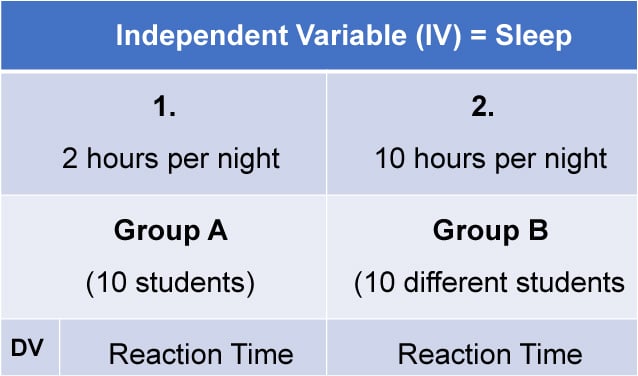
- Con : More people are needed than with the repeated measures design (i.e., more time-consuming).
- Pro : Avoids order effects (such as practice or fatigue) as people participate in one condition only. If a person is involved in several conditions, they may become bored, tired, and fed up by the time they come to the second condition or become wise to the requirements of the experiment!
- Con : Differences between participants in the groups may affect results, for example, variations in age, gender, or social background. These differences are known as participant variables (i.e., a type of extraneous variable ).
- Control : After the participants have been recruited, they should be randomly assigned to their groups. This should ensure the groups are similar, on average (reducing participant variables).
2. Repeated Measures Design
Repeated Measures design is an experimental design where the same participants participate in each independent variable condition. This means that each experiment condition includes the same group of participants.
Repeated Measures design is also known as within-groups or within-subjects design .
- Pro : As the same participants are used in each condition, participant variables (i.e., individual differences) are reduced.
- Con : There may be order effects. Order effects refer to the order of the conditions affecting the participants’ behavior. Performance in the second condition may be better because the participants know what to do (i.e., practice effect). Or their performance might be worse in the second condition because they are tired (i.e., fatigue effect). This limitation can be controlled using counterbalancing.
- Pro : Fewer people are needed as they participate in all conditions (i.e., saves time).
- Control : To combat order effects, the researcher counter-balances the order of the conditions for the participants. Alternating the order in which participants perform in different conditions of an experiment.
Counterbalancing
Suppose we used a repeated measures design in which all of the participants first learned words in “loud noise” and then learned them in “no noise.”
We expect the participants to learn better in “no noise” because of order effects, such as practice. However, a researcher can control for order effects using counterbalancing.
The sample would be split into two groups: experimental (A) and control (B). For example, group 1 does ‘A’ then ‘B,’ and group 2 does ‘B’ then ‘A.’ This is to eliminate order effects.
Although order effects occur for each participant, they balance each other out in the results because they occur equally in both groups.
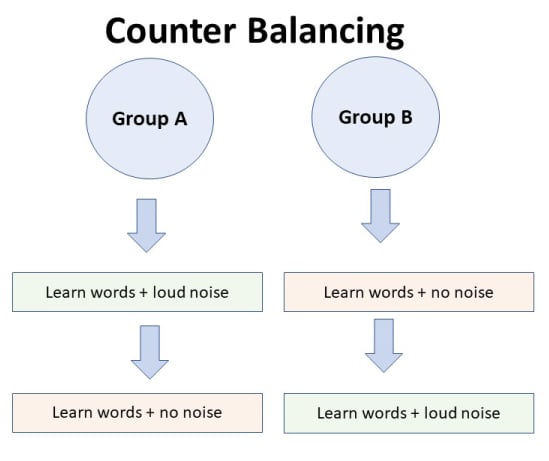
3. Matched Pairs Design
A matched pairs design is an experimental design where pairs of participants are matched in terms of key variables, such as age or socioeconomic status. One member of each pair is then placed into the experimental group and the other member into the control group .
One member of each matched pair must be randomly assigned to the experimental group and the other to the control group.
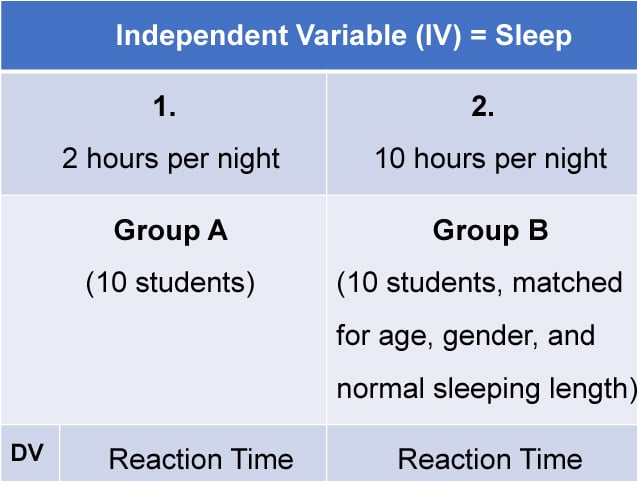
- Con : If one participant drops out, you lose 2 PPs’ data.
- Pro : Reduces participant variables because the researcher has tried to pair up the participants so that each condition has people with similar abilities and characteristics.
- Con : Very time-consuming trying to find closely matched pairs.
- Pro : It avoids order effects, so counterbalancing is not necessary.
- Con : Impossible to match people exactly unless they are identical twins!
- Control : Members of each pair should be randomly assigned to conditions. However, this does not solve all these problems.
Experimental design refers to how participants are allocated to an experiment’s different conditions (or IV levels). There are three types:
1. Independent measures / between-groups : Different participants are used in each condition of the independent variable.
2. Repeated measures /within groups : The same participants take part in each condition of the independent variable.
3. Matched pairs : Each condition uses different participants, but they are matched in terms of important characteristics, e.g., gender, age, intelligence, etc.
Learning Check
Read about each of the experiments below. For each experiment, identify (1) which experimental design was used; and (2) why the researcher might have used that design.
1 . To compare the effectiveness of two different types of therapy for depression, depressed patients were assigned to receive either cognitive therapy or behavior therapy for a 12-week period.
The researchers attempted to ensure that the patients in the two groups had similar severity of depressed symptoms by administering a standardized test of depression to each participant, then pairing them according to the severity of their symptoms.
2 . To assess the difference in reading comprehension between 7 and 9-year-olds, a researcher recruited each group from a local primary school. They were given the same passage of text to read and then asked a series of questions to assess their understanding.
3 . To assess the effectiveness of two different ways of teaching reading, a group of 5-year-olds was recruited from a primary school. Their level of reading ability was assessed, and then they were taught using scheme one for 20 weeks.
At the end of this period, their reading was reassessed, and a reading improvement score was calculated. They were then taught using scheme two for a further 20 weeks, and another reading improvement score for this period was calculated. The reading improvement scores for each child were then compared.
4 . To assess the effect of the organization on recall, a researcher randomly assigned student volunteers to two conditions.
Condition one attempted to recall a list of words that were organized into meaningful categories; condition two attempted to recall the same words, randomly grouped on the page.
Experiment Terminology
Ecological validity.
The degree to which an investigation represents real-life experiences.

Experimenter effects
These are the ways that the experimenter can accidentally influence the participant through their appearance or behavior.
Demand characteristics
The clues in an experiment lead the participants to think they know what the researcher is looking for (e.g., the experimenter’s body language).
Independent variable (IV)
The variable the experimenter manipulates (i.e., changes) is assumed to have a direct effect on the dependent variable.
Dependent variable (DV)
Variable the experimenter measures. This is the outcome (i.e., the result) of a study.
Extraneous variables (EV)
All variables which are not independent variables but could affect the results (DV) of the experiment. Extraneous variables should be controlled where possible.
Confounding variables
Variable(s) that have affected the results (DV), apart from the IV. A confounding variable could be an extraneous variable that has not been controlled.
Random Allocation
Randomly allocating participants to independent variable conditions means that all participants should have an equal chance of taking part in each condition.
The principle of random allocation is to avoid bias in how the experiment is carried out and limit the effects of participant variables.
Order effects
Changes in participants’ performance due to their repeating the same or similar test more than once. Examples of order effects include:
(i) practice effect: an improvement in performance on a task due to repetition, for example, because of familiarity with the task;
(ii) fatigue effect: a decrease in performance of a task due to repetition, for example, because of boredom or tiredness.
Related Articles
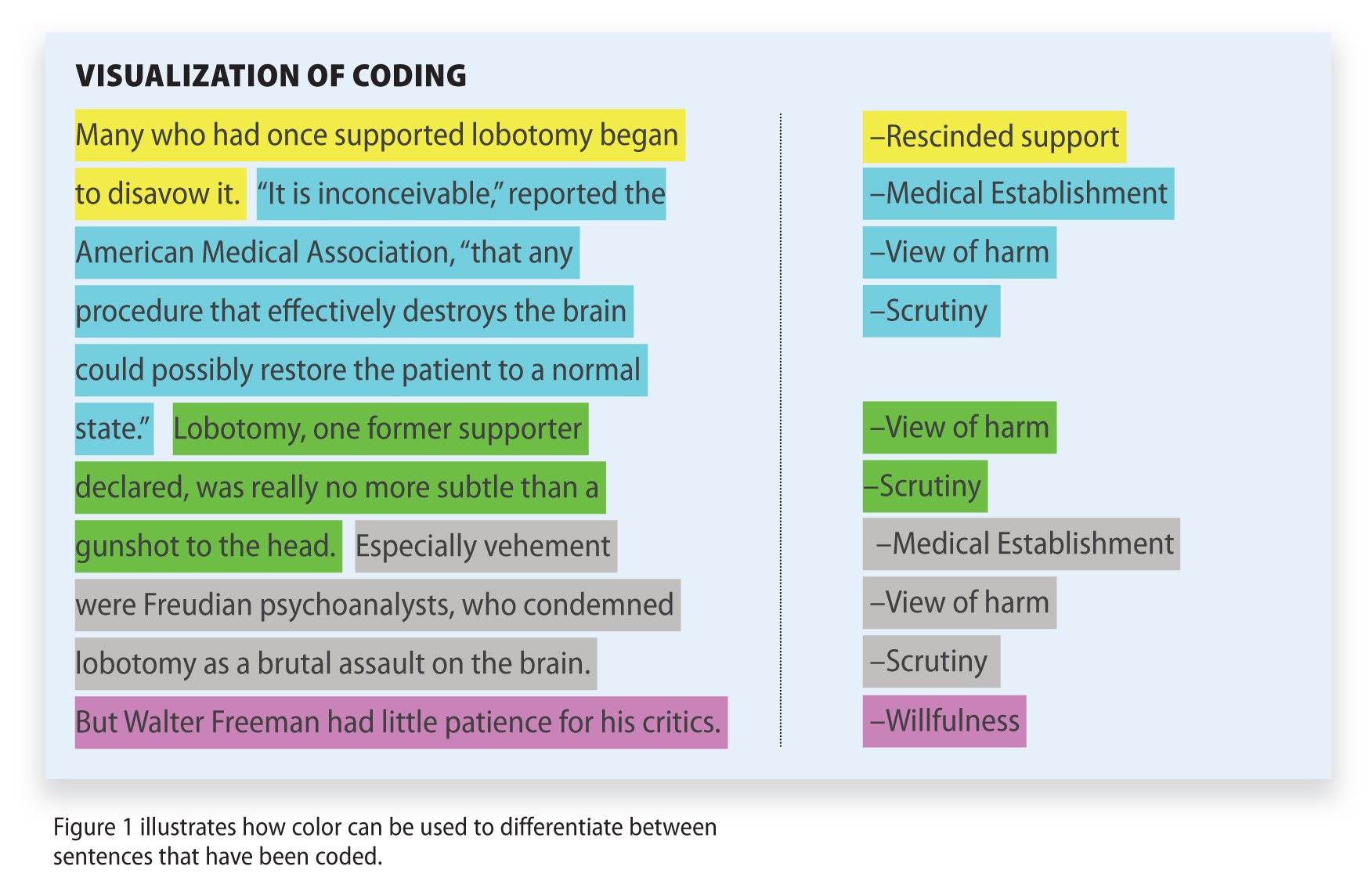
Research Methodology
Qualitative Data Coding

What Is a Focus Group?

Cross-Cultural Research Methodology In Psychology

What Is Internal Validity In Research?

Research Methodology , Statistics
What Is Face Validity In Research? Importance & How To Measure

Criterion Validity: Definition & Examples

The Freedom of Friends with Benefits
The Rise of the FWB
- Find a Therapist
Verified by Psychology Today
- Psychiatrists
- Treatment Centers
- Support Groups
Professionals
Therapists Sign Up | Login
Psychology Today: Health, Help, Happiness + Find a Therapist
Today’s essentials today’s essential reads.

The Power of Imagination in Achieving Your Goals
Noam Shpancer Ph.D. on June 1, 2024 in Insight Therapy
Research finds strong links between some aspects of goal setting and pursuit and well-being.

Mastering Irrational Anger—Yours and Others'
Evan Parks Psy.D. on June 1, 2024 in Pain Rehabilitation
There are beliefs that underlie healthy and unhealthy anger and tools for helping yourself and others manage emotional distress.

Psychedelics
The stoned ape theory revisited.
Mitchell B. Liester M.D. on June 1, 2024 in The Leading Edge
Have psychedelics played a role in the evolution of human consciousness? Ethnobotanist Terrence McKenna claimed they have, and evidence now indicates McKenna may have been right.

Here's What Shapes the Importance of a "Body Count"
Andrew G. Thomas PhD CPsychol MBACP on May 31, 2024 in Darwin Does Dating
Discover why the timing of past relationships can significantly impact perceptions of "body count" and what it means for long-term relationship prospects.

- Neuroscience
In the “I” of the Beholder: How Art Speaks to an Individual
Marwa Azab Ph.D. on June 2, 2024 in Neuroscience in Everyday Life
Art speaks to our soul, reflecting our identity. It’s not just what we see, it’s who we are. Our genes, experiences, and self shape its beauty.

How To Be Your Own Relationship Therapist: 7 Skills
Robert Taibbi L.C.S.W. on June 2, 2024 in Fixing Families
Therapy is a set of lenses through which clinicians are trained to view problems and solutions. Here are some of the basic skills that you can apply to your relationships.

Mental Health Stigma
Self-compassion reduces stigma in chronic physical illness.
Bernard Golden, Ph.D. on June 2, 2024 in Overcoming Destructive Anger
Those with chronic physical illness often internalize stigma associated with the illness; i.e., HIV+, Hepatitis B, Lung cancer. Cultivating self-compassion reduces such stigma.

The Record-Setting Rise of Single Living in the US
Bella DePaulo Ph.D. on June 2, 2024 in Living Single
People who live alone and people who are not married (whether they live alone or not) have too often felt like the odd person out. But they aren’t.

Family Dynamics
Managing the impact of a struggling adult child on siblings.
Jeffrey Bernstein Ph.D. on June 1, 2024 in Liking the Child You Love
When one adult child struggles, the entire family's dynamics can shift, creating a delicate balancing act to ensure that all siblings feel supported, valued, and understood.

Body Language
Is your body language offensive to others.
Ronald E. Riggio Ph.D. on June 1, 2024 in Cutting-Edge Leadership
Do you know how body language is conveyed and interpreted by others, which nonverbal cues are viewed positively and negatively?

- Relationships
Connecting in Divisive Times
Layne Dalfen on June 1, 2024 in Understanding Dreams
In these very turbulent times, here's an example of how our worst nightmares, once understood, offer us positive problem solving options.

Self-Esteem
Experiencing low self-esteem here's an overlooked antidote.
Ruth Gotian Ed.D., M.S. on June 1, 2024 in Optimizing Success
Struggling with low self-esteem? Mentoring can transform your confidence and career.

High School Student Researches Fascism and Emerging Themes
Jenny Grant Rankin PhD on June 1, 2024 in Much More Than Common Core
Authentic Exploratory Research gets students to dig deep.

What Animal Tracking Can Teach You About Self-Awareness
Gregg Levoy on June 1, 2024 in Passion!
Animal tracks are like signs of any kind—they point to something, lead to something. Here’s how the art of tracking can help you become a more mindful tracker of your own life.

Managing Turbulence During Air Travel
Tom Bunn L.C.S.W. on June 1, 2024 in Conquer Fear Of Flying
Wearing a seat belt is all you need to do to be physically safe. To feel safe, you may need to change the "valence code" associated with turbulence from negative to positive

Stop Jolting People in Conversation
Mitch Abblett Ph.D. on June 1, 2024 in Momentology
We all have bad communication habits that spark less-than-ideal reactions in our relationships. Here's how to own and replace these defensiveness-poking habits.

Struggling to Learn Something Hard? You're Not Alone.
Nancy K. Napier Ph.D. on June 1, 2024 in Creativity Without Borders
How do artists create something from nothing: Lessons from some of the best

My Dance With Alzheimer’s
Greg O'Brien on June 1, 2024 in On Pluto
Personal Perspective: It's OK not to be perfect, especially with Alzheimer's disease. There’s no guilt here; in fact, there’s inner strength.

"Thinking at a Distance" in the Age of AI
John Nosta on June 1, 2024 in The Digital Self
"Thinking at a distance" with large language models sparks human-AI cognitive capacity transcending biological limits, but it risks existential "entangled mind" miscalibration.

How to Make a First Impression

The Timeless Moments You Share with Your Friends
Susan Krauss Whitbourne PhD, ABPP on June 1, 2024 in Fulfillment at Any Age
With the numerous responsibilities and time demands of adult life, it can be difficult to maintain friendships. A recent study shows how those bonds can remain preserved forever.

Subverting Stress to Improve Your Sex Drive
Nicole K. McNichols Ph.D. on June 1, 2024 in Everyone on Top
Struggling with low sexual desire? Discover how a new intervention could help.

The Boiling Frog Syndrome: A Metaphor for Burnout
Shannon A Swales on June 1, 2024 in Lessons From a Burnt Out Psychologist
The boiling frog syndrome has surprising relevance to the experience of human burnout and how it sneaks up on us.

What Psychedelics and Acceptance Commitment Therapy May Share
Jennifer Gerlach LCSW on June 1, 2024 in Beyond Mental Health
Do Psychedelics and Acceptance Commitment Therapy share a mechanism of change?

Hallucination
Can someone negatively hallucinate.
Anthony D. Smith LMHC on June 1, 2024 in Up and Running
Hallucinations aren't always sensory perceptions of things that aren't there. Whether from hypnosis or psychosis, people can also "negatively hallucinate/"

5 Ways to Overcome the Sunday Scaries
Emily Hylton-Jean Ph.D., MPH on June 1, 2024 in Mapping Your Mental Health Journey
If your anxiety about Monday morning is starting earlier and earlier each Sunday, this post is for you.

Counseling the World Family
Ran D. Anbar M.D. on June 1, 2024 in Understanding Hypnosis
How can we improve our interactions with each other and contribute to more peaceful and successful resolutions to the many conflicts we face today?

Moving Away From Reductionist Thinking in Misophonia
Jennifer J. Brout Psy.D, LPC on May 31, 2024 in Noises Off
Is misophonia neurological or behavioral? Genetic or learned? Understanding misophonia defies binary thinking. Learn how to apply both/and thinking to conceptualize misophonia.

How to Know If You're Experiencing Prolonged Grief
Diane N Solomon Ph.D., PMHNP-BC, CNM (Ret.) on May 31, 2024 in The Narrative Nurse Practitioner
If it's been over a year since you lost someone, and you're still "not yourself," you may have prolonged grief. Here's what you can do about it.

Gen Z Takes on Mental Health
John G. Cottone Ph.D. on May 31, 2024 in The Cube
A Gen Z teen talks about mental health and how she and her peers hear the messages they receive from the adults in their lives.

Preparing for and Handling Difficult Conversations at Work
Robyne Hanley-Dafoe Ed.D. on May 31, 2024 in Everyday Resilience
Sometimes, the most thoughtful and considerate action leaders can take is to go through difficult conversations rather than around them.

- Chronic Pain
Psilocybin Is Proving to Be Beneficial for Chronic Pain
Dan Mager MSW on May 31, 2024 in Some Assembly Required
Published in the December 2023 issue of Current Biology, recent research has demonstrated that psilocybin can significantly reduce chronic pain.

Mind Reading
You can’t read minds.
Julie Radico Psy.D. ABPP on May 31, 2024 in You Are Enough
Mind reading can have a negative impact on the way you view yourself, others, and the world. It’s important that you notice when you are falling into this thinking trap.

The Current Psychedelic Therapy Landscape
Adi Zuloff-Shani Ph.D. on May 31, 2024 in Psychedelics to the Rescue
With the urgent need for mental health solutions, psychedelic treatments are developed carefully, while underground therapists offer a stopgap measure.
- Find a Treatment Center
- Find a Psychiatrist
- Find a Support Group
- Find Online Therapy
- United States
- Brooklyn, NY
- Chicago, IL
- Houston, TX
- Los Angeles, CA
- New York, NY
- Portland, OR
- San Diego, CA
- San Francisco, CA
- Seattle, WA
- Washington, DC
- Asperger's
- Bipolar Disorder
- Eating Disorders
- Passive Aggression
- Personality
- Goal Setting
- Positive Psychology
- Stopping Smoking
- Low Sexual Desire
- Child Development
- Self Tests NEW
- Therapy Center
- Diagnosis Dictionary
- Types of Therapy

At any moment, someone’s aggravating behavior or our own bad luck can set us off on an emotional spiral that threatens to derail our entire day. Here’s how we can face our triggers with less reactivity so that we can get on with our lives.
- Emotional Intelligence
- Gaslighting
- Affective Forecasting
- Systematic Review
- Open access
- Published: 30 May 2024
The effectiveness of interventions for offending behaviours in adults with autism spectrum disorders (ASD): a systematic PRISMA review
- Jody Salter 1 , 2 &
- Sarah Blainey 1 , 3
BMC Psychology volume 12 , Article number: 316 ( 2024 ) Cite this article
43 Accesses
1 Altmetric
Metrics details
Previous research has suggested that the core features of autism spectrum disorders (ASD) may contribute to offending behaviours and increased vulnerability within the Criminal Justice System. To date, there is a paucity of evidence assessing the effectiveness of interventions for offending behaviour in adults with ASD but without co-occurring intellectual disability (ID) across a broad range of forensic settings. The lack of robust evidence is concerning, as limited effectiveness may contribute to an increased likelihood of prolonged incarceration, particularly in the most restrictive settings. A PRISMA systematic review was conducted with a narrative synthesis to: (a) evaluate the evidence of the effectiveness of interventions aimed at reducing recidivism, (b) assess whether the core features of ASD impact the effectiveness of these interventions, and (c) identify additional factors that may affect the effectiveness of interventions within this population. Seven studies involving ten male participants were identified. The findings suggest that interventions for offending behaviours in adults with ASD without intellectual disability (ID) are largely inadequate, and that core ASD features need to be considered. Additionally, a complex interplay of risk factors potentially impacting intervention effectiveness was suggested. Limitations include heterogeneity across intervention types, measures of effectiveness, and what constitutes effectiveness. Despite the limited number of studies and data quality, the review aligns with a growing body of literature highlighting vulnerability and a need for evidence-based interventions for people with ASD. The review also discusses the broader implications of ineffective interventions.
Peer Review reports
Introduction
Autism spectrum disorders (ASD) represent a group of complex and highly heterogeneous neurodevelopmental disorders. A diagnosis of ASD is based on the presence of two core features: impairments in social communication and interaction (SCI), and restrictive and repetitive behaviours (RRBs) [ 1 ].
Phenotypic manifestations of the core features often present with varying degrees of social disengagement, difficulties in establishing and sustaining relationships, social naivety, lack of eye contact, and difficulties in interpreting facial expressions [ 2 ]. RRBs manifest as intense and highly restrictive special interests, a strong inclination for environmental consistency [ 3 ], cognitive rigidity, and hyper-or hypo sensory responses to the environment [ 4 ].
Additional factors modulate and influence these core features, including the extent of sensory and motor impairments, language and cognitive abilities, adaptive functioning, gender and the presence of co-occurring psychiatric disorders [ 5 , 6 , 7 ]. The increasing recognition of ASD has resulted in significantly higher diagnosis rates across all age groups [ 8 ], which are currently estimated to be 1 in 57 in England [ 9 ]. Consequently, this increase in diagnoses has led to a greater representation of individuals with ASD within the criminal justice system (CJS).
ASD in the criminal justice system
An increasing body of research has highlighted the significant vulnerability experienced by individuals with ASD while navigating the CJS. This vulnerability becomes evident throughout multiple stages of the criminal justice process, ranging from initial encounters with police [ 10 ] through to police interviews [ 11 ], to court room proceedings [ 12 ] and prison services [ 13 ]. This heightened vulnerability is exacerbated by the reported general lack of understanding of ASD within the CJS, among both professionals and the general public [ 13 , 14 , 15 , 16 ].
Individuals with ASD and co-occurring intellectual disability (ID) are often identified and diverted from the criminal justice system (CJS). This is due to a recognition of their reduced culpability, a result of impairments in both intellectual and adaptive functioning [ 15 ]. In contrast, individuals with ASD but without co-occurring ID, the population on which this review focuses, exhibit significant deficits in adaptive functioning despite their intellectual capabilities. This difference is often referred to as the IQ functioning gap and is unique to individuals with ASD [ 17 ]. Despite impairments in adaptive functioning, this population is considered intellectually capable. Therefore, they are generally perceived as culpable and sufficiently competent to navigate the complexities of the CJS and receive a fair trial. This contrast raises further questions concerning culpability ranging from criminal responsibility to the appropriateness of sentencing.
Following conviction, when an offence has met the custody threshold, offenders with ASD are typically diverted to the community or prison. Alternatively, if detained under the Mental Health Act 1983 (the legislative framework governing mental healthcare and treatment in England and Wales), they may be detained in a secure hospital environment (classified as low, medium, or high security).
Estimating the prevalence of ASD within the UK prison population is difficult because of a lack of routine assessment; nonetheless, ASD is estimated to range between 1% and 4.4% [ 5 ]. Research has shown a disproportionately high prevalence of ASD in secure hospital settings (6.5%), exceeding the estimate for the general population [ 18 ].
Qualitative studies examining the experiences of prisoners with ASD without co-occurring ID have highlighted their increased vulnerability to bullying, exploitation, and social anxiety in prison [ 13 ]. In addition, research aimed at evaluating the prevalence of the broader autistic phenotype among a prison population, as well as comparing their mental health characteristics to those without, revealed a significant risk of self-harm and suicide in individuals presenting with autistic traits. Within this cohort, of the 240 prisoners assessed, 46 displayed significant autistic traits, with 12 meeting the diagnostic criteria for ASD. Notably, only two of these individuals had been previously recognised by the prison as having ASD. This finding highlights the under recognition of ASD and emphasises the heightened vulnerability of this population to a range of mental health risks within the prison environment [ 5 ].
Although it may be logical to assume that a secure hospital setting may better meet the treatment needs of people with ASD than a prison setting, current evidence suggests otherwise. Concerns have been raised, including the high likelihood of long-term seclusion in people with ASD compared to those without ASD [ 19 ] and significantly longer than average stays within secure hospital settings [ 20 ].
Despite several initiatives aimed at improving the recognition of ASD within the prison population [ 21 ], a recent UK government report on ‘neurodiversity’ [ 22 ], a term encompassing various conditions that fall into the broader category of neurodevelopmental disorders (NDDs) including ASD, highlighted three notable areas of concern. These included a greater likelihood of neurodivergent individuals being held on remand, inappropriately pleading guilty, and judges often failing to recognise a defendant’s neurodivergence as a mitigating factor when sentencing. These findings demonstrate that much work is needed to address the challenges faced by individuals with ASD and neurodivergent conditions in the CJS.
ASD and risk of offending
While there is insufficient evidence to suggest that individuals with ASD are at greater risk of engaging in offending behaviours [ 23 ], it has been suggested that the core features of ASD may contribute to the risk of offending behaviours [ 24 , 25 ]. Risk factors for offending behaviour in the general population are associated with the cumulative influence of various factors, including alcohol and drug abuse, low socioeconomic status, mental disorders, adversity, child abuse, and traumatic brain injury [ 26 , 27 , 28 ]. Less is known about the risk factors for offending behaviour within the ASD population, with the exception of co-occurring psychiatric disorders, such as personality disorders and psychosis [ 5 ].
Research suggests that individuals diagnosed with ASD early in life face barriers to services throughout their lifespan, resulting in unmet education, health, and therapeutic needs [ 29 , 30 ]. Research suggests that certain demographic groups, such as women [ 31 , 32 ], individuals from ethnic minorities, and those from lower socioeconomic backgrounds [ 9 , 33 ], are far more likely to be underdiagnosed. This in turn increases the risk of unmet needs [ 34 , 35 ]. These factors may contribute as variables that collectively increase the overall cumulative risk of engaging in offending behaviours.
Forensic interventions
Interventions for offending behaviour often use cognitive-behavioural techniques to reduce recidivism, with an emphasis on perspective-taking, self-and relationship management, and problem solving. In the United Kingdom, the Ministry of Justice requires a sufficient evidence base for the accreditation of forensic interventions. This accreditation aims to promote high-quality programs in prisons and community settings to reduce recidivism [ 36 ].
Cognitive behavioural therapy (CBT) is widely recognised as one of the most effective interventions for offending behaviours [ 37 ]. There is evidence that CBT reduces recidivism by 20–30% in the general offending population [ 38 , 39 ]. However, there is little evidence to support the effectiveness of such interventions for offending behaviour in forensic secure settings, often yielding inconsistent findings [ 40 ].
Beyond forensic settings, evidence suggests that adapted CBT is effective for individuals with ASD [ 41 , 42 ]. These adjustments are necessary due to the core features of ASD and challenges in areas such as perspective taking and cognitive rigidity, both of which are conducive to successful therapeutic outcomes in this population [ 43 ]. Additionally, evidence supports the use of social skills training [ 44 ] and group-based social skills interventions in adults with ASD [ 41 ] However, there is no consensus regarding the specific adaptations most beneficial for individuals with ASD.
Furthermore, the lack of appropriate outcome measures has been reported to be a barrier to determining the effectiveness of interventions within secure forensic hospital settings [ 45 , 46 , 47 ]. Despite the evidence for CBT use within the general offender population and for individuals with ASD outside forensic settings, there are reports that the implementation of these interventions is not effective for individuals detained within secure hospital settings [ 19 , 48 , 49 ].
The increasing recognition of the vulnerability of individuals with ASD within the CJS highlights the urgent need for a systematic evaluation of the effectiveness of interventions for offending behaviours in adults with ASD. While previous research has examined interventions for individuals with ASD and co-occurring ID [ 49 ], a significant research gap remains regarding the effectiveness of forensic interventions for individuals with ASD but without co-occurring ID [ 14 ].
This systematic review aims to address this gap by conducting a comprehensive evaluation of intervention effectiveness in an ASD population without co-occurring ID.
Research aims
This systematic review is guided by the following research objectives:
To systematically review and evaluate the effectiveness of interventions for offending behaviours in adults with ASD without co-occurring ID, as reported in the literature;
To ascertain whether the core features of ASD impact the effectiveness of the identified interventions; and.
To identify additional risk factors that may impact the effectiveness of interventions in this population.
Inclusion criteria
Each potentially eligible study was screened based on the inclusion and exclusion criteria described in the PICO framework below [ 50 ].
Population.
Participants included adults aged 18 years and older diagnosed with ASD, as defined by the authors in the literature. Studies involving participants with co-occurring ASD and ID and those that did not differentiate between these two populations were excluded.
Intervention & Outcomes.
Our review aimed to identify studies that objectively and/or subjectively measured the effectiveness of therapeutic or pharmacological interventions for reducing recidivism in individuals with ASD exhibiting offending behaviours. These included interventions delivered in all categories, namely, prisons, probation supervision, and secure hospitals.
Study Design and Comparison.
All primary research studies were included, regardless of publication date or country of origin. Studies that were peer-reviewed (e.g., grey literature and conference abstracts), systematic reviews, and those not published in English were excluded. An inclusion-exclusion criterion related to the type of comparison conducted in individual studies was not imposed.
Search strategy
The search was conducted on the 27th of March 2021 across five databases, covering a broad timeframe and utilising international terminology. The databases included:
Embase (1974 to 2021).
Ovid MEDLINE(R) and Epub ahead of print, In-process, In data-review and other Non-Indexed Citations.
Ovid MEDLINE(R) Daily.
Global Health (1973 to March 2021).
APA PsychInfo (1806 to February 2021).
Furthermore, a web-based search using Google Scholar was conducted with the same search terms. The first 15 pages of results were manually reviewed; however, no additional studies meeting the inclusion criteria were found. Additionally, the reference lists and citations of relevant reviews were manually checked, but this did not yield any further eligible studies.
Data selection and extraction
The data selection and extraction processes consisted of two stages:
During Stage 1, potential eligible studies were screened based on their titles and abstracts against the predefined inclusion and exclusion criteria. Owing to the limited number of results, the screening process was performed manually and repeated one week later to increase accuracy.
Stage 2 involved a comprehensive review of the full texts of the selected studies to confirm their alignment with the inclusion criteria. Relevant data were extracted and organised into spreadsheets using Microsoft Excel.
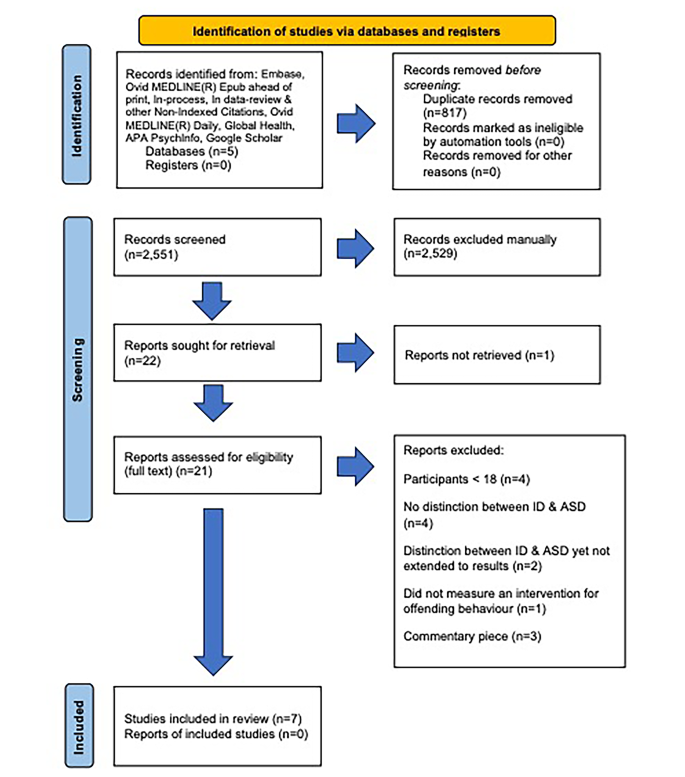
PRISMA flow diagram of searches of databases and registers only
Consistent with the primary aim of this systematic review, the first outcome measure is the effectiveness of the identified forensic interventions, measured by a reduction in recidivism. While reducing recidivism is the principal goal of forensic interventions, it is often viewed as a proxy measure that may not fully capture the complexity of offending behaviours, particularly in cases of crossover crime [ 46 , 51 ]. To address this limitation, additional relevant measures contributing to reduced recidivism were collected to allow for a preliminary assessment of intervention effectiveness. These additional measures included variables such as a reduction in security levels within institutional settings (i.e., medium to low security) or significant positive changes compared to baseline measurements recorded before and after the intervention.
The second aim of this review was to examine whether the core features of ASD present barriers to the rehabilitation process. To achieve this objective, data concerning the interactions between impairments in social communication and interaction (SCI) and restrictive and repetitive behaviours (RRBs) in relation to interventions within individual studies, as described by clinicians were collected and analysed.
Thirdly, this review aimed to identify additional risk factors described within findings that may influence the effectiveness of the interventions. The aim of the analysis is to provide a more comprehensive understanding of collective risk factors and their interactions with intervention effectiveness assessed through narrative synthesis. In addition, the data collected included the study design, author, and country of origin. When reported, participant demographics, such as age, gender, offence, ethnicity, and socioeconomic status, were reported. The intervention data included the type of intervention used, setting, duration, and frequency, only when available.
Study risk of bias assessment
The Mixed Methods Appraisal Tool (MMAT) [ 52 ] is a comprehensive tool for critically evaluating various research methods. The methodological quality of each study and the potential risk of bias were assessed using the MMAT. The results of this assessment are presented in tabular form (Table 2 , ‘MMAT Quality Appraisal’, appendix).
Synthesis method
A narrative synthesis [ 53 ] was used for this review as a meta-analysis was not appropriate because of the significant heterogeneity between studies. The synthesis process began with a preliminary analysis, in which the data were extracted and presented in tabular form to provide a summary of the findings and to identify potential patterns within the data. A guided conceptual framework was constructed based on the narrative synthesis of the primary data. This framework aimed to assess both the similarities and differences between the included studies while exploring emerging thematic elements.
Study selection
The initial database search returned 2,551 results after removing duplicates, as shown in Fig. 1 of the PRISMA flow diagram, which depicts the flow of information at each stage of the systematic review search. Subsequent screening included an initial assessment of the titles and a subsequent assessment of the abstracts, which led to the exclusion of an additional 2,530 articles. To ensure accuracy, abstract screening was repeated one week later. Subsequent full-text eligibility screening excluded 14 additional studies. The reasons for exclusion included the following: (a) participants under 18 years of age ( n = 4), (b) lacked differentiation between the ID and ASD populations ( n = 4), (c) were differentiated but not described in the context of the results ( n = 2), (d) measurement of interventions for self-harm and suicide among offenders with ASD rather than for offending behaviour ( n = 1), and (e) removal of commentary papers ( n = 3). Consequently, the final number of included studies from the initial database search was seven ( n = 7).
Study characteristics
Among the seven studies identified, three were case reports ( n = 3), two were qualitative studies ( n = 2), and two were quantitative case series ( n = 2). These studies jointly assessed the effectiveness of the various interventions. The total sample size of all the studies was limited to 10; all the participants were men, and demographic information was limited. It is worth noting that despite the use of international terminology in the search criteria, all seven articles described studies conducted exclusively in southern England, United Kingdom (UK). In these studies, all participants, apart from one were held in secure hospital units under the provisions of the Mental Health Act 1983. The most prevalent types of offending behaviours observed were sexual offences ( n = 4), followed by manslaughter ( n = 3), and arson ( n = 3).
Table 1 ‘Summary of Findings’ provides a summary of each study included in the systematic review. The summary includes author information, available participant demographics, offence type, setting, detainment status (i.e., under the mental health act), intervention approach, study findings, intervention effectiveness, measurement used to assess effectiveness, and whether there was evidence to suggest that the core features of ASD impacted the effectiveness of forensic intervention(s). These are separated by impairments in social communication and interaction (SCI) and restrictive and repetitive behaviours (RRBs).
Risk of bias in studies
The methodological quality of the studies was assessed using the MMAT [ 52 ] (Table 2 , ‘MMAT Quality Appraisal’, appendix). Each of the three case reports received a 3-star rating, indicating a moderate risk of bias and meeting 75% of the qualitative MMAT criteria [ 54 , 55 , 56 ].
The two quantitative case series were found to be at a higher risk of bias due to difficulties in distinguishing the treatment groups, recruitment difficulties, lack of a control group, and incomplete outcome data for the ASD group without co-occurring ID. They received a 2-star rating, meeting 50% of the MMAT quantitative criteria [ 58 ].
The second quantitative study [ 57 ], raised concerns about the validity and reliability of outcome measures, which were originally designed for the ID population but applied to the ASD group without co-occurring ID. This study also received a 2-star rating and met 50% of the MMAT’s quantitative criteria.
The remaining qualitative studies received a 3-star rating, meeting 75% of the MMAT criteria. The first evaluated intervention effectiveness from the perspective of the clinicians who delivered the therapeutic program [ 59 ]. The second assessed offenders’ views via self-report, which carry a potential risk of response bias [ 60 ].
Selection bias was observed in studies that combined ID and ASD populations. Overall, it was difficult to establish a causal relationship between the interventions and outcomes.
Notably, not all the studies reviewed explicitly documented obtaining informed consent from participants. The discrepancy in informed consent between studies, particularly in restrictive forensic settings, presents challenges extending beyond ethical considerations. Such discrepancies may compromise the validity of intervention comparisons, introduce biases in participant selection, and undermine the reliability of data.
Interventions
The interventions examined across the reviewed studies were diverse, as presented in Table 3 , titled ‘Summary of Interventions’.
Three studies incorporated both pharmacological and psychological interventions. Specifically, antipsychotics were used to address co-occurring psychosis, contributing to instances of offending behaviour [ 55 ]. Antipsychotics were also used to manage stress-induced psychosis [ 56 ]. In the context of directly treating offending behaviours, two distinct medications were applied in cases of sexual offending, each with different mechanisms of action [ 54 ] (Table 3 ).
Four studies relied exclusively on psychological interventions [ 57 , 58 , 59 , 60 ]. Among these, two studies implemented adapted forms of CBT. Specific details regarding the non-standardised adaptations used in CBT were not provided by the study author, except that individual delivery was necessary due to difficulties encountered within group settings [ 54 , 56 ].
The third study that incorporated CBT included elements similar to those of the Adapted Sex Offender Treatment Program (A-SOTP) [ 58 ]. The effectiveness of the A-SOTP was described in two studies [ 59 , 60 ]. Furthermore, the Equipping Youth to Help One Another (EQUIP) was adapted and piloted for use with individuals with ID and developmental disabilities (DD) who had committed sexual offences [ 57 ]. Supplementary interventions included speech and language therapy to facilitate communication [ 55 ], occupational therapy to address impairments in executive functioning [ 55 , 56 ] and art therapy [ 54 ].
Table 3 visually depicts a summary of the diverse interventions extracted, reviewed, and categorised according to intervention type: pharmacological, psychological, and supplementary intervention approaches. In addition, the table includes the type of offence, studies using intervention, underlying mechanism of action or theory, evidence base supporting intervention, and measurements used to assess effectiveness.
Measurements
Numerous approaches were adopted to measure effectiveness across the studies. Two studies measured effectiveness by reduced recidivism and the need to repeat the intervention. Other studies utilised a range of standardised measurements to evaluate psychological interventions. For example, one study [ 54 ] employed the Behavioural Status Index (BSI) every six months as a measurement tool. In contrast, another [ 56 ] employed the State Trait Anger Expression Inventory (STAXII II) and the Millon Multiaxial Personality Inventory (MMPI), combined with standardised risk assessment, one-year postintervention.
Regarding pharmacological interventions, one case report used a combination of subjective and objective measurements. These included self-reports and the systematic monitoring of inappropriate glancing behaviours over time by staff members [ 54 ]. In another instance, the reduction in verbalised delusions served as a measure of the effectiveness of antipsychotic medication [ 55 , 56 ].
The effectiveness of interventions such as the A-SOTP was assessed differently across the two studies. In one study, effectiveness was evaluated through clinician views [ 59 ], while in the other, effectiveness was determined by the participants’ subjective experiences with the intervention [ 60 ].
In the case of CBT, which shares similarities with A-SOTP, standardised measures were applied both pre- and post-intervention. These measures consisted of sexual attitudes consistent with sexual offending (QACSO), sexual offenders’ self-appraisal scale (SOSAS), the sexual attitudes and knowledge scale (SAKS), and the victim empathy scale-adapted (VES-A) [ 58 ].
The EQIP study, which also focused on sexual offending [ 57 ], assessed effectiveness by examining improvements in baseline scores on standardised tests related to moral reasoning, cognitive distortions, problem-solving abilities, and anger. In addition, a move to a lower security level was considered an indicator of overall effectiveness. Furthermore, in a case study that included speech and language therapy, the clinician’s subjective view of improved communication within the secure unit served as a measure of the intervention’s effectiveness [ 55 ].
Among the seven studies reviewed, only one pertaining to an arson offence considered the intervention(s) effective. In this case, a pharmacological intervention was used to treat co-occurring alcohol-induced psychosis, and the unspecified antipsychotic proved successful in reducing delusions. Furthermore, speech and language therapy aimed at improving communication skills was also deemed to be effective [ 55 ].
However, the remaining six studies, which included a total of nine participants, concluded that the interventions were largely ineffective. One case report addressing sexual offending behaviours used pharmacological interventions. The first involved cyproterone acetate, a testosterone inhibitor, however, the outcome could not be conclusively determined owing to adherence and dosage issues [ 54 ]. In the second, the selective serotonin reuptake inhibitor (SSRI) fluoxetine was deemed ineffective, as inappropriate behaviours did not significantly decrease [ 54 ]. It is worth noting that the evidence for both of these drugs has since been described as insufficient to guide clinical practice, with cyproterone acetate considered inadequate [ 61 ], and the evidence for fluoxetine has not been fully determined [ 62 ].
Among the two studies that utilised the A-SOTP and a similar form of CBT for sexual offending, one participant repeated the intervention program six times and subsequently re-offended and a further two participants repeated the yearlong intervention program and reoffended [ 58 ]. These findings are consistent with the results of the study that assessed clinician views [ 59 ]. Even in the case of CBT, as used in two studies, the intervention was deemed ineffective despite adaptations made to accommodate individuals with ASD [ 54 , 56 ].
ASD core features and impact upon intervention effectiveness
The application of a narrative synthesis facilitated the identification and extraction of recurring patterns within the data. These patterns were evident across all the studies, highlighting the considerable challenges posed by impairments in social communication and interaction (SCI) and the presence of restrictive and repetitive behaviours (RRBs) on the effectiveness of interventions, as depicted in Fig. 2 .
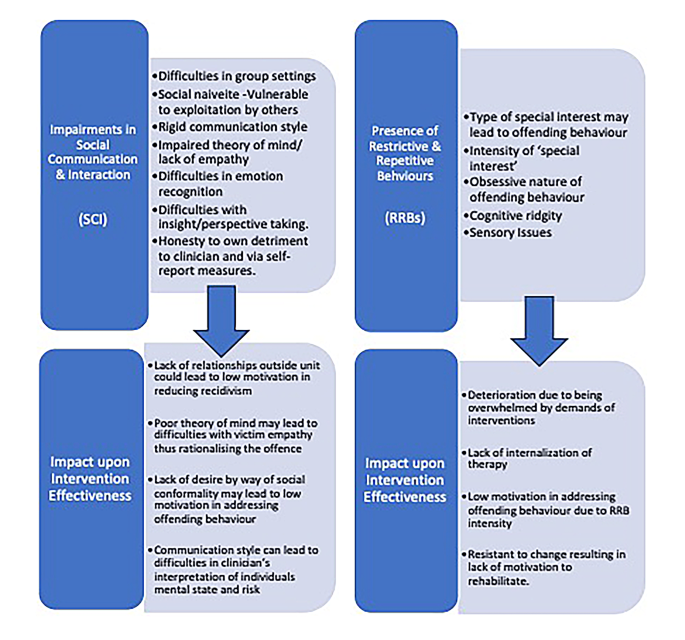
Impact of The Core Features of ASD upon Intervention Effectiveness. Note. This describes the core features of ASD, both ‘impairments to SCI’ and ‘presence of RRBs’, and their impact upon intervention effectiveness as extracted from studies
Additional factors impacting intervention effectiveness
In addition to the core features of ASD, this review sought to identify additional risk factors that may influence the effectiveness of the intervention(s). Potential risk factors highlighted by the authors of each study were collected, and through narrative synthesis, several recurring themes emerged from the data. Co-occurring personality disorders and psychosis [ 55 , 56 ], were identified as potential factors impacting intervention effectiveness, as described within the literature. Additionally, events such as childhood adversity, sexual abuse, trauma, and having a dysfunctional family life were described as potential contributors [ 58 ]. Late diagnosis of ASD was theorised to lead to maladaptive coping skills deriving from unmet needs, which were described in three of the studies [ 54 , 55 , 56 ].
An overarching theme identified across the majority of the seven studies was the insufficiency of service provision, staff expertise, and the evidence base.
The present systematic review identified seven studies with ten participants who underwent forensic interventions aimed at reducing offending behaviours in adults with ASD, particularly those without co-occurring ID. The principal aim of this review was to evaluate the effectiveness of these interventions. The secondary aim was to examine whether the core features of ASD have an impact on the effectiveness of these forensic interventions and to identify other variables that may impact the overall effectiveness of interventions.
Regarding the first aim, the evidence suggests that the interventions reviewed were inadequate. However, these findings should be treated with caution not only because of the small sample size but also because of limitations in the generalisability of the findings. Despite an extensive literature search, all the studies were conducted in southern England, UK, and included only male participants. In addition, all participants, with the exception of one individual living in the community, were detained within secure hospital settings under the provisions of the Mental Health Act (1983). This highlights the lack of data from prison and the probation service, which limits the scope of the review. Furthermore, this review highlights a critical lack of research within this domain. Even when the literature was identified, it was often of inadequate quality owing to various design limitations. The significant heterogeneity between studies, each utilising distinct intervention methods and tools for measuring intervention effectiveness, illustrates a notable lack of standardisation in both clinical and research methodologies within this field. This lack of consistency aligns with broader research on mental health in individuals with ASD [ 45 , 46 ]. Nonetheless, the forensic domain faces additional challenges, such as the lack of randomised control trials, which means that the effectiveness of interventions is difficult to fully determine. These challenges are exacerbated by unavoidable confounding variables, the risk of bias, and the ethical implications of a no-treatment group [ 66 ], all of which contribute to the lack of evidence.
The secondary aim was to examine the potential impact of the core features of ASD on the effectiveness of interventions designed to reduce recidivism. The data patterns identified through narrative synthesis consistently emerged across all studies, highlighting the significant challenges posed by impairments in social communication and interaction (SCI) and the presence of restrictive and repetitive behaviours (RRBs). These challenges highlight the general inappropriateness of forensic interventions within this population.
The third and final aim was to identify factors, beyond the core features of ASD, that may influence the effectiveness of interventions. Throughout the studies, a recurring theme emerged, highlighting significant systemic factors impacting intervention effectiveness. These include issues such as a shortage of government funding leading to inadequate service provision, the question of whether ASD and ID services should be combined, and the substantial unmet needs throughout the lifespan of individuals with ASD, all of which affect the success of forensic interventions. While the core features of ASD are significant, they may not be the primary cause of intervention failure. Rather, they seem to be contributing factors within a broader and more complex array of variables that collectively impact the overall effectiveness of these forensic interventions.
Implications
The inadequate provision of forensic services carries significant implications, especially when prolonged detainment becomes necessary due to the shortcomings of forensic interventions. Such deficiencies may subject individuals with ASD to non-evidence-based interventions, often repeatedly [ 56 , 58 ]. This then increases the likelihood of these individuals being labelled as ‘unrehabilitated,’ potentially leading to extended periods of detainment. Consequently, this creates a counterproductive cycle that not only exacerbates the economic burden but also raises serious concerns about human rights and the potential legal consequences of prolonged confinement.
These issues underscore fundamental questions about the fairness and adequacy of the legal system. Therefore, addressing these knowledge gaps and the lack of evidence-based approaches are crucial to ensuring a more equitable criminal justice system for individuals with ASD.
Future research
This review identifies several key areas for future research in this field. Developing evidence-based interventions tailored to the unique needs of individuals with ASD is crucial. Establishing a consensus on the measurements used for assessing the effectiveness of these interventions, as well as a clear definition of what constitutes effectiveness, would significantly enhance research quality.
Moreover, due to the bias towards studies conducted in southern England, the consistency of interventions for treating offending behaviours in adults with ASD in England remains unclear, especially considering the persistent regional health disparities between the North and South of England [ 67 , 68 ].
Data availability
No datasets were generated or analysed during the current study.
Association AP. DSM-5 classification. American Psychiatric Publishing; 2015.
Masi A, DeMayo MM, Glozier N, Guastella AJ. An overview of Autism Spectrum Disorder, Heterogeneity and Treatment options. Neurosci Bull. 2017;33(2):183–93.
Article PubMed PubMed Central Google Scholar
Berry K, Russell K, Frost K. Restricted and repetitive behaviors in Autism Spectrum Disorder: a review of Associated features and presentation across clinical populations. Curr Dev Disorders Rep. 2018;5(2):108–15.
Article Google Scholar
Geurts HM, Corbett B, Solomon M. The paradox of cognitive flexibility in autism. Trends Cogn Sci. 2009;13(2):74–82.
Chaplin E, McCarthy J, Allely CS, Forrester A, Underwood L, Hayward H, et al. Self-harm and Mental Health Characteristics of Prisoners with elevated rates of autistic traits. Res Dev Disabil. 2021;114:103987.
Article PubMed Google Scholar
Hirvikoski T, Boman M, Chen Q, D’Onofrio BM, Mittendorfer-Rutz E, Lichtenstein P, et al. Individual risk and familial liability for suicide attempt and suicide in autism: a population-based study. Psychol Med. 2019;50(9):1463–74.
Kim SH, Lord C. The Behavioral Manifestations of Autism Spectrum Disorders. In: The Neuroscience of Autism Spectrum Disorders [Internet]. Elsevier; 2013 [cited 2024 Jan 7]. pp. 25–37. https://doi.org/10.1016/b978-0-12-391924-3.00002-8 .
Jensen CM, Steinhausen HC, Lauritsen MB. Time trends over 16 years in incidence-rates of Autism Spectrum Disorders across the Lifespan Based on Nationwide Danish Register Data. J Autism Dev Disord. 2014;44(8):1808–18.
Roman-Urrestarazu A, van Kessel R, Allison C, Matthews FE, Brayne C, Baron-Cohen S. Association of Race/Ethnicity and Social Disadvantage with Autism Prevalence in 7 million School Children in England. JAMA Pediatr. 2021;175(6):e210054.
Haas K, Gibbs V. Does a person’s autism play a role in their interactions with police: the perceptions of autistic adults and Parent/Carers. J Autism Dev Disord. 2020;51(5):1628–40.
Murphy D. Interviewing individuals with an autism spectrum disorder in forensic settings. Int J Forensic Mental Health. 2018;17(4):310–20.
Allely CS, Cooper P, Jurors’. and Judges’ evaluation of defendants with autism and the impact on sentencing: a systematic Preferred reporting items for systematic reviews and Meta-analyses (PRISMA) review of Autism Spectrum Disorder in the courtroom. J Law Med. 2017;25(1).
Allely CS. Experiences of prison inmates with autism spectrum disorders and the knowledge and understanding of the spectrum amongst prison staff: a review. J Intellect Disabil Offending Behav. 2015;6(2):55–67.
King C, Murphy GH. A systematic review of people with Autism Spectrum Disorder and the Criminal Justice System. J Autism Dev Disord. 2014;44(11):2717–33.
Maras K, Mulcahy S, Crane L. Is autism linked to criminality? Autism. 2015;19(5):515–6.
Robertson CE, McGillivray JA. Autism behind bars: a review of the research literature and discussion of key issues. J Forensic Psychiatr Psychol. 2015;26(6):719–36.
McQuaid GA, Pelphrey KA, Bookheimer SY, Dapretto M, Webb SJ, Bernier RA, et al. The gap between IQ and adaptive functioning in autism spectrum disorder: disentangling diagnostic and sex differences. Autism. 2021;25(6):1565–79.
Dein K, Hassiotis A, Woodbury-Smith M, Roychowdhury A, Squires R, Freestone M. Prevalence of autism within medium secure units: a feasibility study. J Forensic Psychiatr Psychol. 2021;32(6):861–78.
Murphy D, Allely C. Autism spectrum disorders in high secure psychiatric care: a review of literature, future research and clinical directions. Adv Autism. 2019;6(1):17–34.
Davoren M, Byrne O, O’Connell P, O’Neill H, O’Reilly K, Kennedy HG. Factors affecting length of stay in forensic hospital setting: need for therapeutic security and course of admission. BMC Psychiatry. 2015;15(1).
Lewis A, Pritchett R, Hughes C, Turner K. Development and implementation of autism standards for prisons. J Intellect Disabil Offending Behav. 2015;6(2):68–80.
Criminal justice joint inspectorate. Neurodiversity in the criminal justice system: a review of evidence. 2021.
Allely CS. A systematic PRISMA review of individuals with autism spectrum disorder in secure psychiatric care: prevalence, treatment, risk assessment and other clinical considerations. J Criminal Psychol. 2018;8(1):58–79.
Howlin P. Outcome in adult life for more able individuals with autism or Asperger Syndrome. Autism. 2000;4(1):63–83.
Newman SS, Ghaziuddin M. Violent crime in Asperger Syndrome: the Role of Psychiatric Comorbidity. J Autism Dev Disord. 2008;38(10):1848–52.
Allely CS, Minnis H, Thompson L, Wilson P, Gillberg C. Neurodevelopmental and psychosocial risk factors in serial killers and mass murderers. Aggress Violent Beh. 2014;19(3):288–301.
Newman BN, Crowell KA. The intersectionality of criminality and substance use self-stigmas. Stigma Health. 2023;8(2):212–22.
Schofield PW, Malacova E, Preen DB, D’Este C, Tate R, Reekie J, et al. Does traumatic Brain Injury lead to criminality? A Whole-Population Retrospective Cohort Study using Linked Data. PLoS ONE. 2015;10(7):e0132558.
Benevides TW, Carretta HJ, Lane SJ. Unmet need for Therapy among children with Autism Spectrum Disorder: results from the 2005–2006 and 2009–2010 National Survey of children with Special Health Care needs. Matern Child Health J. 2015;20(4):878–88.
Płatos M, Pisula E. Service use, unmet needs, and barriers to services among adolescents and young adults with autism spectrum disorder in Poland. BMC Health Serv Res. 2019;19(1).
Green RM, Travers AM, Howe Y, McDougle CJ. Women and Autism Spectrum Disorder: diagnosis and implications for treatment of adolescents and adults. Curr Psychiatry Rep. 2019;21(4).
Gupta M, Chaudhary R. Diagnostic challenges of High-Functioning Autism Spectrum disorder in females. Cureus. 2021 Jan 30.
Durkin MS, Maenner MJ, Meaney FJ, Levy SE, DiGuiseppi C, Nicholas JS, et al. Socioeconomic inequality in the prevalence of Autism Spectrum Disorder: evidence from a U.S. cross-sectional study. PLoS ONE. 2010;5(7):e11551.
Crane L, Hearst C, Ashworth M, Davies J, Hill EL. Supporting newly identified or diagnosed autistic adults: an initial evaluation of an autistic-led Programme. J Autism Dev Disord. 2020;51(3):892–905.
Article PubMed Central Google Scholar
Kelly B, Williams S, Collins S, Mushtaq F, Mon-Williams M, Wright B, et al. The association between socioeconomic status and autism diagnosis in the United Kingdom for children aged 5–8 years of age: findings from the born in Bradford cohort. Autism. 2017;23(1):131–40.
Ministry of Justice. Offending behaviour programmes and interventions [Internet]. GOV.UK. 2018 [cited 2021 Dec 13]. https://www.gov.uk/guidance/offending-behaviour-programmes-and-interventions#accreditation .
Lipsey MW, Landenberger NA. Cognitive-Behavioral Interventions. In: Preventing Crime [Internet]. Berlin/Heidelberg: Springer-Verlag; 2006. pp. 57–71. https://doi.org/10.1007/1-4020-4244-2_4 .
Henwood KS, Chou S, Browne KD. A systematic review and meta-analysis on the effectiveness of CBT informed anger management. Aggress Violent Beh. 2015;25:280–92.
Wilson DB, Bouffard LA, Mackenzie DL. A quantitative review of structured, Group-Oriented, cognitive-behavioral programs for offenders. Criminal Justice Behav. 2005;32(2):172–204.
MacInnes D, Masino S. Psychological and psychosocial interventions offered to forensic mental health inpatients: a systematic review. BMJ Open. 2019;9(3):e024351.
Spain D, Blainey SH. Group social skills interventions for adults with high-functioning autism spectrum disorders: a systematic review. Autism. 2015;19(7):874–86.
Spain D, Happé F. How to optimise cognitive Behaviour Therapy (CBT) for people with Autism Spectrum disorders (ASD): a Delphi Study. J Rational-Emot Cognitive-Behav Ther. 2019;38(2):184–208.
Parr JR, Brice S, Welsh P, Ingham B, Le Couteur A, Evans G et al. Treating anxiety in autistic adults: study protocol for the personalised anxiety treatment–autism (PAT-A©) pilot randomised controlled feasibility trial. Trials. 2020;21(1).
Gantman A, Kapp SK, Orenski K, Laugeson EA. Social Skills Training for Young Adults with high-functioning Autism Spectrum disorders: a Randomized Controlled Pilot Study. J Autism Dev Disord. 2011;42(6):1094–103.
Chambers JC, Yiend J, Barrett B, Burns T, Doll H, Fazel S, et al. Outcome measures used in forensic mental health research: a structured review. Criminal Behav Mental Health. 2009;19(1):9–27.
Fitzpatrick R, Chambers J, Burns T, Doll H, Fazel S, Jenkinson C et al. A systematic review of outcome measures used in forensic mental health research with consensus panel opinion. Health Technol Assess. 2010;14(18).
Weston L, Hodgekins J, Langdon PE. Effectiveness of cognitive behavioural therapy with people who have autistic spectrum disorders: a systematic review and meta-analysis. Clin Psychol Rev. 2016;49:41–54.
Higgs T, Carter AJ. Autism spectrum disorder and sexual offending: Responsivity in forensic interventions. Aggress Violent Beh. 2015;22:112–9.
Melvin CL, Langdon PE, Murphy GH. Treatment effectiveness for offenders with autism spectrum conditions: a systematic review. Psychol Crime Law. 2017;23(8):748–76.
Shuster JJ, Review. Cochrane handbook for systematic reviews for interventions, Version 5.1.0, published 3/2011. Julian P.T. Higgins and Sally Green, editors. Res Synthesis Methods. 2011;2(2):126–30.
Völlm B, Braun P. Long-Term Forensic Psychiatric Care: clinical, ethical and legal challenges. Springer; 2019.
Hong QN, Fàbregues S, Bartlett G, Boardman F, Cargo M, Dagenais P, et al. The mixed methods Appraisal Tool (MMAT) version 2018 for information professionals and researchers. Educ Inform. 2018;34(4):285–91.
Campbell M, McKenzie JE, Sowden A, Katikireddi SV, Brennan SE, Ellis S et al. Synthesis without meta-analysis (SWiM) in systematic reviews: reporting guideline. BMJ. 2020;l6890.
Milton J, Duggan C, Latham A, Egan V, Tantam D. Case History of Co-morbid Asperger’s syndrome and paraphilic behaviour. Med Sci Law. 2002;42(3):237–44.
Radley J, Shaherbano Z. Asperger syndrome and arson: a case study. Adv Mental Health Intellect Disabil. 2011;5(6):32–6.
Murphy D. Extreme violence in a man with an autistic spectrum disorder: assessment and treatment within high-security psychiatric care. J Forensic Psychiatry Psychol. 2010;21(3):462–77.
Langdon PE, Murphy GH, Clare ICH, Palmer EJ, Rees J. An evaluation of the EQUIP Treatment Programme with men who have intellectual or other Developmental Disabilities. J Appl Res Intellect Disabil. 2012;26(2):167–80.
Murphy G, Powell S, Guzman A, Hays S. Cognitive-behavioural treatment for men with intellectual disabilities and sexually abusive behaviour: a pilot study. J Intellect Disabil Res. 2007;51(11):902–12.
Melvin CL, Langdon PE, Murphy GH. They’re the hardest group to treat, that changes the least. Adapted sex offender treatment programmes for individuals with Autism Spectrum disorders: clinician views and experiences. Res Dev Disabil. 2020;105:103721.
Melvin CL, Langdon PE, Murphy GH. I feel that if I didn’t come to it anymore, maybe I would go back to my old ways, and I don’t want that to happen: adapted sex offender treatment programmes: views of service users with autism spectrum disorders. J Appl Res Intellect Disabil. 2019;33(4):739–56.
Khan O, Ferriter M, Huband N, Powney MJ, Dennis JA, Duggan C. Pharmacological interventions for those who have sexually offended or are at risk of offending. Cochrane Database Syst Reviews. 2015 Feb 18.
National Institute for Health. And Care Excellence (NICE). Hypersexuality: fluoxetine; 2015.
Google Scholar
Masood B, Lepping P, Romanov D, Poole R. Treatment of Alcohol-Induced psychotic disorder (alcoholic Hallucinosis)—A systematic review. Alcohol Alcohol. 2017;53(3):259–67.
National Institute for Health and Care Excellence (NICE). Rehabilitation for adults with complex psychosis. 2020.
Patterson C. Does the adapted sex offender treatment programme reduce cognitive distortions? A meta-analysis. J Intellect Disabil Offending Behav. 2018;9(1):9–21.
Robertson MD, Walter G. Many faces of the dual-role Dilemma in Psychiatric Ethics. Australian New Z J Psychiatry. 2008;42(3):228–35.
Bambra C, Barr B, Milne E. North and South: addressing the English health divide. J Public Health. 2014;36(2):183–6.
Whitehead M, Doran T. The north-south health divide. BMJ. 2011;342(feb15 2):d584–584.
Download references
Acknowledgements
Not applicable.
This research did not receive any specific grant from funding agencies in the public, commercial, or not-for-profit sectors.
Author information
Authors and affiliations.
Department of Forensic and Neurodevelopmental Sciences, Institute of Psychiatry, Psychology and Neuroscience, King’s College London, London, UK
Jody Salter & Sarah Blainey
School of Health and Society, University of Salford, Greater Manchester, UK
Jody Salter
Central and North West London NHS Foundation Trust, London, UK
Sarah Blainey
You can also search for this author in PubMed Google Scholar
Contributions
JS was responsible for writing the manuscript, including the creation of figures and tables. SB provided supervision and editorial input throughout the manuscript’s development.
Corresponding author
Correspondence to Jody Salter .
Ethics declarations
Ethics approval and consent to participate.
The systematic review did not involve original data collection; therefore, no ethical statement is required.
Consent for publication
Competing interests.
The authors declare no competing interests.
Additional information
Publisher’s note.
Springer Nature remains neutral with regard to jurisdictional claims in published maps and institutional affiliations.
Electronic supplementary material
Below is the link to the electronic supplementary material.
Supplementary Material 1
Rights and permissions.
Open Access This article is licensed under a Creative Commons Attribution 4.0 International License, which permits use, sharing, adaptation, distribution and reproduction in any medium or format, as long as you give appropriate credit to the original author(s) and the source, provide a link to the Creative Commons licence, and indicate if changes were made. The images or other third party material in this article are included in the article’s Creative Commons licence, unless indicated otherwise in a credit line to the material. If material is not included in the article’s Creative Commons licence and your intended use is not permitted by statutory regulation or exceeds the permitted use, you will need to obtain permission directly from the copyright holder. To view a copy of this licence, visit http://creativecommons.org/licenses/by/4.0/ . The Creative Commons Public Domain Dedication waiver ( http://creativecommons.org/publicdomain/zero/1.0/ ) applies to the data made available in this article, unless otherwise stated in a credit line to the data.
Reprints and permissions
About this article
Cite this article.
Salter, J., Blainey, S. The effectiveness of interventions for offending behaviours in adults with autism spectrum disorders (ASD): a systematic PRISMA review. BMC Psychol 12 , 316 (2024). https://doi.org/10.1186/s40359-024-01770-1
Download citation
Received : 15 January 2024
Accepted : 07 May 2024
Published : 30 May 2024
DOI : https://doi.org/10.1186/s40359-024-01770-1
Share this article
Anyone you share the following link with will be able to read this content:
Sorry, a shareable link is not currently available for this article.
Provided by the Springer Nature SharedIt content-sharing initiative
- Autism spectrum disorder
- Offending behaviour
- Forensic Psychiatry
- Forensic psychology
- Intervention
- Criminal justice system
BMC Psychology
ISSN: 2050-7283
- General enquiries: [email protected]
- Bipolar Disorder
- Therapy Center
- When To See a Therapist
- Types of Therapy
- Best Online Therapy
- Best Couples Therapy
- Best Family Therapy
- Managing Stress
- Sleep and Dreaming
- Understanding Emotions
- Self-Improvement
- Healthy Relationships
- Student Resources
- Personality Types
- Guided Meditations
- Verywell Mind Insights
- 2024 Verywell Mind 25
- Mental Health in the Classroom
- Editorial Process
- Meet Our Review Board
- Crisis Support
Major Branches of Psychology
18 Psychological Areas You Can Study
Kendra Cherry, MS, is a psychosocial rehabilitation specialist, psychology educator, and author of the "Everything Psychology Book."
:max_bytes(150000):strip_icc():format(webp)/IMG_9791-89504ab694d54b66bbd72cb84ffb860e.jpg)
Verywell / Ran Zheng
Abnormal Psychology
Behavioral psychology, biopsychology, clinical psychology, cognitive psychology, comparative psychology, counseling psychology, cross-cultural psychology, developmental psychology, educational psychology, experimental psychology, forensic psychology, health psychology, industrial-organizational psychology, personality psychology, school psychology, social psychology, sports psychology.
Psychology is such a broad field that conveying its depth and breadth can be difficult. As a result, a number of unique and distinctive branches of psychology have emerged, each one dealing with specific psychological areas within the study of the mind, brain, and behavior.
Understanding what these subtopics represent can help you decide where your interests may lie. Here is more information about 18 major types of psychology if you are interested in studying, earning your degree , or creating a career in this expansive field.
Overview of the Branches of Psychology
The major areas of psychology include:
- Abnormal psychology
- Behavioral psychology
- Clinical psychology
- Cognitive psychology
- Comparative psychology
- Counseling psychology
- Cross-cultural psychology
- Developmental psychology
- Educational psychology
- Experimental psychology
- Forensic psychology
- Health psychology
- Industrial-organizational psychology
- Personality psychology
- School psychology
- Social psychology
- Sports psychology
Each of these psychological areas looks at questions and problems from a different perspective. While they all have their own focus, they still share a common goal of studying and explaining human thought and behavior.
Because human behavior is so varied, the number of subfields in psychology is constantly growing and evolving. Some of these subfields have been firmly established as areas of interest, and many colleges and universities offer courses and degree programs in these topics.
Each type of psychology represents a specific area of study focused on a particular topic. Oftentimes, psychologists specialize in one of these as a career. The following are just some of the major branches of psychology. For many of these, working in that specific area requires graduate study in that particular field.
2 Main Areas of Psychology
Psychology can be roughly divided into two major areas:
- Research, which seeks to increase our knowledge base
- Practice , through which our knowledge is applied to solving problems in the real world
Abnormal psychology looks at psychopathology and abnormal behavior. It involves the study of people's emotional, thought, and behavior patterns to identify, understand, and potentially resolve any issues that may be negatively affecting a person's life.
Mental health professionals in this branch of psychology assess, diagnose, and treat a wide variety of psychological disorders , including anxiety and depression. Counselors, clinical psychologists, and psychotherapists often work directly in this field.
Behavioral psychology , also known as behaviorism, is a theory of learning based on the idea that all behaviors are acquired through conditioning. Behavioral strategies such as classical conditioning and operant conditioning are often utilized to teach or modify behaviors.
For example, a teacher might use a reward system to teach students to behave during class. When students are good, they receive gold stars, which can then be turned in for some sort of special privilege.
While this type of psychology dominated the field during the first part of the twentieth century, it became less prominent during the 1950s. However, behavioral techniques remain a mainstay in therapy, education, and many other areas.
Biopsychology is a psychological area focused on how the brain, neurons, and nervous system influence thoughts, feelings, and behaviors. The biopsychology field draws upon many different disciplines, including basic psychology, cognitive psychology, experimental psychology, biology, physiology, and neuroscience.
People who work in this type of psychology often study how brain injuries and brain diseases impact human behavior.
Biopsychology is also sometimes referred to as physiological psychology, behavioral neuroscience, or psychobiology. So, if you are interested in studying or earning a degree in this psychology branch, you may want to look for courses or programs with these names.
Clinical psychology is the branch of psychology concerned with the assessment and treatment of mental illness, abnormal behavior, and psychiatric disorders. Clinicians often work in private practices, but many also work in community centers or at universities and colleges.
You can even find clinical psychology professionals in hospital settings and mental health clinics. In these organizations, they often work as part of a collaborative team that may include physicians, psychiatrists, and other mental health professionals.
Cognitive psychology is a psychological area that focuses on internal mental states. This area has continued to grow since it emerged in the 1960s and is centered on the science of how people think, learn, and remember.
Professionals who work in this type of psychology typically study cognitive functions such as perception, motivation, emotion, language, learning, memory, attention, decision-making , and problem-solving .
Cognitive psychologists often use an information-processing model to describe how the mind works, suggesting that the brain stores and processes information much like a computer.
Comparative psychology is the branch of psychology concerned with the study of animal behavior. This is important because the study of how animals behave can lead to a deeper and broader understanding of human psychology.
This psychology subtype has its roots in the work of researchers such as Charles Darwin and George Romanes and has grown into a highly multidisciplinary subject. In addition to psychologists contributing to this field, so do biologists, anthropologists, ecologists, geneticists, and several others.
Counseling psychology is one of the largest areas of psychology. It is centered on treating clients in mental distress who may be experiencing a wide variety of psychological symptoms.
The Society of Counseling Psychology explains that professionals working in this type of psychology can improve their clients' interpersonal functioning throughout life. They do this by improving the client's social and emotional health, as well as addressing concerns about health, work, family, marriage, and more.
Cross-cultural psychology is a branch of psychology that looks at how cultural factors influence human behavior. This may involve looking at differences between collective and individualist cultures , for instance. Cross-cultural psychologists might also look at how cultures vary in terms of emotion, personality, or child development.
The International Association of Cross-Cultural Psychology (IACCP) was established in 1972. This type of psychology has continued to grow and develop since that time, with increasing numbers of psychologists investigating how behavior differs among cultures throughout the world.
Developmental psychology focuses on how people change and grow throughout life. This area of psychology seeks to understand and explain how and why people change. Developmental psychologists study physical growth, intellectual development, emotional changes, social growth, and perceptual changes that occur throughout the lifespan.
Some professionals may specialize in infant, child, adolescent, or geriatric development, while others might primarily study the effects of developmental delays. This psychology branch covers a huge range of topics, ranging from prenatal development to Alzheimer's disease .
Educational psychology is the branch of psychology concerned with schools, teaching psychology, educational issues, and student concerns. Educational psychologists often study how students learn. They may also work directly with students, parents, teachers, and administrators to improve student outcomes.
Professionals in this type of psychology sometimes study how different variables influence individual students. They may also study learning disabilities , giftedness, and the instructional process.
8 Things to Know About Educational Psychology
Experimental psychology is the psychological area that utilizes scientific methods to research the brain and behavior. Many of these techniques are also used in other psychology areas to study everything from childhood development to social issues.
This type of psychology is often viewed as a distinct subfield, but experimental techniques and methods are used extensively throughout every branch. Some of the methods used include experiments, correlational studies , case studies , and naturalistic observation .
Experimental psychologists work in a wide variety of settings, including colleges, universities, research centers, government, and private businesses. They utilize the scientific method to study a range of human behaviors and psychological phenomena.
Forensic psychology deals with issues related to psychology and the law. Those who work in this branch apply psychological principles to legal issues. This may involve studying criminal behavior and treatment or working directly in the court system.
Forensic psychologists perform a wide variety of duties, including providing testimony in court cases, assessing children in suspected child abuse cases, preparing children to give testimony, and evaluating the mental competence of criminal suspects.
In many cases, people working in forensic psychology aren't necessarily "forensic psychologists." These individuals might be clinical psychologists, school psychologists, neurologists, or counselors who lend their psychological expertise to provide testimony, analysis, or recommendations in legal or criminal cases.
Health psychology (also sometimes called medical psychology or behavioral medicine) focuses on how biology, psychology, behavior, and social factors influence health and illness. This area of psychology involves the promotion of health across a wide variety of domains, as well as the prevention and treatment of disease and illness.
Health psychologists often deal with health-related issues such as weight management, smoking cessation , stress management , and nutrition. They might also research how people cope with illnesses, helping patients learn more effective coping strategies .
Some professionals in this branch of psychology assist with the design of disease prevention and public awareness programs, while others work within the government to improve health care policies.
Industrial-organizational psychology applies psychological principles to workplace issues. This psychological area, often referred to as I/O psychology, seeks to improve productivity and efficiency in the workplace while maximizing the well-being of employees. It includes areas such as human factors.
Human factors psychology focuses on human error, product design, ergonomics, human capability, and human-computer interaction. Its goal is to improve how people interact with products and machines. This might involve helping to design products intended to minimize injury or creating workplaces that promote greater accuracy and safety.
Research in I/O psychology is known as applied research because it seeks to solve real-world problems. These types of psychologists study topics such as worker attitudes, employee behaviors, organizational processes, and leadership.
Personality psychology is the branch of psychology that focuses on the study of thought patterns, feelings, and behaviors that make each individual unique. Classic theories of personality include Freud's psychoanalytic theory of personality and Erikson's theory of psychosocial development.
Personality psychologists might look at how different factors (such as genetics, parenting, and social experiences) influence personality development and change. They may also be involved in the creation or administration of personality tests .
School psychology is a type of psychology that involves working in schools to help kids deal with academic, emotional, and social issues. School psychologists also collaborate with teachers, students, and parents to help create a healthy learning environment.
Most school psychologists work in elementary and secondary schools, but others can be found in private clinics, hospitals, state agencies, and universities. Some go into private practice and serve as consultants—especially those with a doctoral degree in school psychology.
Social psychology seeks to understand and explain social behavior. It looks at diverse topics including group behavior, social interactions and perceptions, leadership, nonverbal communication, and social influences on decision-making.
Social influences on behavior are a major interest in social psychology, but these types of psychologists are also focused on how people perceive and interact with others. This branch of psychology also includes topics such as conformity, aggression, and prejudice.
Sports psychology is the study of how psychology influences sports, athletic performance, exercise, and physical activity. Individuals may work with a sports psychologist to improve their focus, develop mental toughness, increase motivation, or reduce sports-related anxiety .
Some sports psychologists work with professional athletes such as pro sports players and top Olympians. Others utilize exercise and sports to enhance the health and well-being of non-athletes throughout their lifespan.
Psychology is always evolving and new fields and branches continue to emerge. It is important to remember that no single branch of psychology is more important or better than any other. Each area contributes to our understanding of the many different psychological factors that influence who we are, how we behave, and how we think.
By conducting research and developing new applications for psychological knowledge, professionals working in all branches of psychology are able to help people better understand themselves, confront the problems they may face, and live better lives.
American Psychological Association. Biological psychology .
American Psychological Association. Society of Counseling Psychology .
International Association for Cross-Cultural Psychology. Home page .
Gray PO, Bjorklund, D. Psychology .
Hockenbury SE, Nolan SA. Psychology .
By Kendra Cherry, MSEd Kendra Cherry, MS, is a psychosocial rehabilitation specialist, psychology educator, and author of the "Everything Psychology Book."

The Surprising Reason Behind the Evolution of Large Brains in Primates, According to New Research
T he intelligence of humans and other non-human primates is often attributed to our large brain sizes. The question of why some primate species developed large brains has intrigued scientists for years.
Many believe in the theory that a feedback loop is the explanation: clever animals find their nourishment more efficiently, acquire more calories, and thus sustain their larger brains. This hypothesis points to dietary preferences, particularly the amount of fruit consumed, and previous studies have connected brain size to this factor.
However, a recent study published in Proceedings of the Royal Society B has put this theory to the test directly for the first time.
Fruit-Eating Habits Observed in Panama
To test the “fruit-diet” hypothesis, researchers turned to the challenging task of quantifying foraging efficiency in wild animals. They capitalized on a natural experiment in Panama where various mammals are confined to consuming fruit from a few species during a periodic three-month timeframe, with focus on the Dipteryx oleifera tree.
Using drones to identify these trees from their distinctive purple flowers during flowering season, the researchers developed a comprehensive map that detailed the fruit landscape faced by the local wildlife.
The study included two large-brained primates, spider monkeys and white-faced capuchins, contrasted with two smaller-brained mammal species, white-nosed coatis and kinkajous. Observing over 40 individuals and analyzing over 600,000 GPS locations allowed them to measure the animals’ foraging efficiency.
Are Large-Brained Foragers More Efficient?
The expectation was that larger-brained primates would prove to have more efficient foraging patterns. Surprisingly, this was not supported by the findings – the route efficiency of primates was not significantly higher than that of their smaller-brained counterparts.
Alternative Explanations?
As the hypothesis connecting diet to brain size was not bolstered, the study turns attention to other possibilities, such as the importance of memory or the role of intelligence in tool use, which is observed in species with larger brains, like the white-faced capuchin monkey.
Moreover, the complexities of social interactions could be a significant factor in the evolution of large brains, an attribute found in various intelligent animals across the animal kingdom.
This research paves the way for future investigations into animal evolution, psychology, and behavior in a relatively undisturbed setting.
Ben Hirsch, Senior Lecturer in Zoology and Ecology at James Cook University, contributes this article republished from The Conversation under a Creative Commons license. View the original article .
FAQs About Primate Brain Evolution
What is the traditional hypothesis about primate brain evolution.
Traditionally, it has been thought that a feedback loop between intelligence and diet, particularly fruit consumption, led to the evolution of larger brains in primates. Smarter foraging strategies were believed to allow greater intake of calories, supporting a larger brain.
What did the new study in Panama find?
The study observed that large-brained primates like spider monkeys and white-faced capuchins did not forage more efficiently than smaller-brained animals like coatis and kinkajous, challenging the traditional diet-brain size hypothesis.
Why might primates have evolved large brains, according to this new study?
The study suggests alternative reasons such as the complexity of social interactions, memory advantages, or intelligence for tool use as potential drivers for the evolution of large brains in primates.
Did the study find any evidence to support the memory hypothesis?
Preliminary analyses did not support the hypothesis that better episodic memory in species with larger brains led to more optimized timing of fruit tree visits, but more in-depth research is needed to further evaluate this possibility.
What was unique about the methods used in this study?
This study utilized the latest sensor technologies and took advantage of a natural phenomenon to observe wild tropical mammals in their habitat, offering new insights into the evolution of animal intelligence and behavior in a non-invasive way.
Can the findings be applied to other intelligent species?
While this study specifically examined tropical mammals, the implications of the findings raise questions about the evolution of intelligence and brain size in other vertebrates and invertebrates, suggesting that similar studies could be beneficial in understanding these broader patterns.


IMAGES
VIDEO
COMMENTS
Olivia Guy-Evans, MSc. Research methods in psychology are systematic procedures used to observe, describe, predict, and explain behavior and mental processes. They include experiments, surveys, case studies, and naturalistic observations, ensuring data collection is objective and reliable to understand and explain psychological phenomena.
Types of Psychological Research Methods. There are several types of research methods used in psychology, including experiments, surveys, case studies, and observational studies. Each method has its strengths and weaknesses, and researchers must choose the most appropriate method based on their research question and the data they hope to collect.
Research Methods in Psychology AP A Han dbook s in Psychology VOLUME Research Designs: Quantitative, Qualitative, Neuropsychological, and Biological SECOND EDITION Harris Cooper, Editor-in-Chief Marc N. Coutanche, Linda M. McMullen, A. T. Panter, sychological Association. Not for further distribution.
An example of this type of research in psychology would be changing the length of a specific mental health treatment and measuring the effect on study participants. 2. Descriptive Research . Descriptive research seeks to depict what already exists in a group or population. Three types of psychology research utilizing this method are: Case studies
Using Intensive Longitudinal Methods in Psychological Research Masumi Iida, Patrick E. Shrout, Jean-Philippe Laurenceau, and Niall Bolger ... At the University of Missouri he directed the predoctoral and postdoctoral training program in alcohol studies, and his research has been continually funded by the National Institute on Alcohol Abuse and ...
Program evaluation. Quasi-experiment. Self-report inventory. Survey, often with a random sample (see survey sampling) Twin study. Research designs vary according to the period (s) of time over which data are collected: Retrospective cohort study: Participants are chosen, then data are collected about their past experiences.
Research in psychology focuses on a variety of topics, ranging from the development of infants to the behavior of social groups. Psychologists use the scientific method to investigate questions both systematically and empirically. Research in psychology is important because it provides us with valuable information that helps to improve human lives.
Introduction. Psychology is an ever-growing and popular field (Gough and Lyons, 2016; Clay, 2017).Due to this growth and the need for science-based research to base health decisions on (Perestelo-Pérez, 2013), the use of research methods in the broad field of psychology is an essential point of investigation (Stangor, 2011; Aanstoos, 2014).Research methods are therefore viewed as important ...
He earned his Ph.D. from the University of Arkansas, and has 15 years experience teaching across the psychology curriculum at community colleges, liberal arts colleges, and research universities. Dr. Leighton's social psychology research lab studies intergroup relations, and routinely includes undergraduate students as researchers.
Compare longitudinal and cross-sectional approaches to research. Compare and contrast correlation and causation. There are many research methods available to psychologists in their efforts to understand, describe, and explain behavior and the cognitive and biological processes that underlie it. Some methods rely on observational techniques.
CHAPTER 1 Psychological Research7 HOW PSYCHOLOGISTS USE THE SCIENTIFIC METHOD Our starting place for conducting research studies in psychology is an understanding of the assumptions that come along with the methods of science. We need to keep some concepts in mind when we use the scientific method to understand behavior.
Qualitative and Quantitative Methods in Psychology. The four most common methods of psychological research are observational studies (including covert and overt studies), interviews or surveys ...
Introduction. Psychology is an ever-growing and popular field (Gough and Lyons, 2016; Clay, 2017).Due to this growth and the need for science-based research to base health decisions on (Perestelo-Pérez, 2013), the use of research methods in the broad field of psychology is an essential point of investigation (Stangor, 2011; Aanstoos, 2014).Research methods are therefore viewed as important ...
Research methods Multiple tools and methods for diverse goals. An extremely wide range of diverse research methods are used by psychological scientists to pursue their particular goals. To study verbal and nonverbal behaviour and mental processes in humans, these include questionnaires, ratings, self-reports, and case studies; tests of personality, attitudes, and intelligence; structured ...
The three main categories of psychological research are descriptive, correlational, and experimental research. Research studies that do not test specific relationships between variables are called descriptive, or qualitative, studies. These studies are used to describe general or specific behaviors and attributes that are observed and measured.
The field of psychology commonly uses experimental methods in what is known as experimental psychology.Researchers design experiments to test specific hypotheses (the deductive approach), or to evaluate functional relationships (the inductive approach).. The method of experimentation involves an experimenter changing some influence—the independent variable(IV)— on the research subjects ...
Basic Research in Psychology. Basic research—also known as fundamental or pure research—refers to study and research meant to increase our scientific knowledge base. This type of research is often purely theoretical, with the intent of increasing our understanding of certain phenomena or behavior. In contrast with applied research, basic ...
Types of descriptive research. Observational method. Case studies. Surveys. Recap. Descriptive research methods are used to define the who, what, and where of human behavior and other ...
1. Lab Experiment. A laboratory experiment in psychology is a research method in which the experimenter manipulates one or more independent variables and measures the effects on the dependent variable under controlled conditions. A laboratory experiment is conducted under highly controlled conditions (not necessarily a laboratory) where ...
Three types of experimental designs are commonly used: 1. Independent Measures. Independent measures design, also known as between-groups, is an experimental design where different participants are used in each condition of the independent variable. This means that each condition of the experiment includes a different group of participants.
Studies in Psychology/Estudios de Psicología publishes articles of empirical research, methodological innovation, and theoretical debate at the frontier of psychological knowledge. Among others, examples include of articles that allow for a new understanding of a psychological phenomenon, that soundly and originally criticize a mainstream theory, that defy the discipline's commonly accepted ...
View the latest from the world of psychology: from behavioral research to practical guidance on relationships, mental health and addiction. Find help from our directory of therapists ...
The Mixed Methods Appraisal Tool (MMAT) is a comprehensive tool for critically evaluating various research methods. The methodological quality of each study and the potential risk of bias were assessed using the MMAT. The ... Four studies relied exclusively on psychological interventions [57,58,59,60]. Among these, two studies implemented ...
Misinformation is false or inaccurate information—getting the facts wrong. Disinformation is false information which is deliberately intended to mislead—intentionally misstating the facts. The spread of misinformation and disinformation has affected our ability to improve public health, address climate change, maintain a stable democracy ...
Over the last few years, graduate psychology degree programs, both at the master's and doctoral levels, have shifted their admission criteria from an emphasis on standardized testing to components that reflect applicants' experiences. According to the most recent edition of Graduate Study in Psychology, 1 for 2022-23 applications ...
The pandemic highlighted the need for alternative, more accessible access to mental health interventions that can be readily administered remotely. The purpose of this pre-post-interventional study was to evaluate the effectiveness of a virtual mind-body medicine training course on stress, anxiety, and depression levels. University employees and members of the Las Vegas community were ...
2 years. Online + Campus. Earning a bachelor's in forensic psychology at Quincy, a Catholic university in Illinois, provides a deep understanding of the legal system through hands-on learning experiences and classes that teach the theories and methods of psychology.
The biopsychology field draws upon many different disciplines, including basic psychology, cognitive psychology, experimental psychology, biology, physiology, and neuroscience. People who work in this type of psychology often study how brain injuries and brain diseases impact human behavior. Biopsychology is also sometimes referred to as ...
Lauren graduated earlier this May with her B.A. in Psychological Science with high honors and with departmental honors from Albion College. While at Albion, she completed a departmental thesis which focused on how empathy, similarity in experience, and pain type all interact to affect a person's memory. Lauren was recently hired as a Research Tech/study coordinator focusing on
This research paves the way for future investigations into animal evolution, psychology, and behavior in a relatively undisturbed setting. ... What was unique about the methods used in this study?